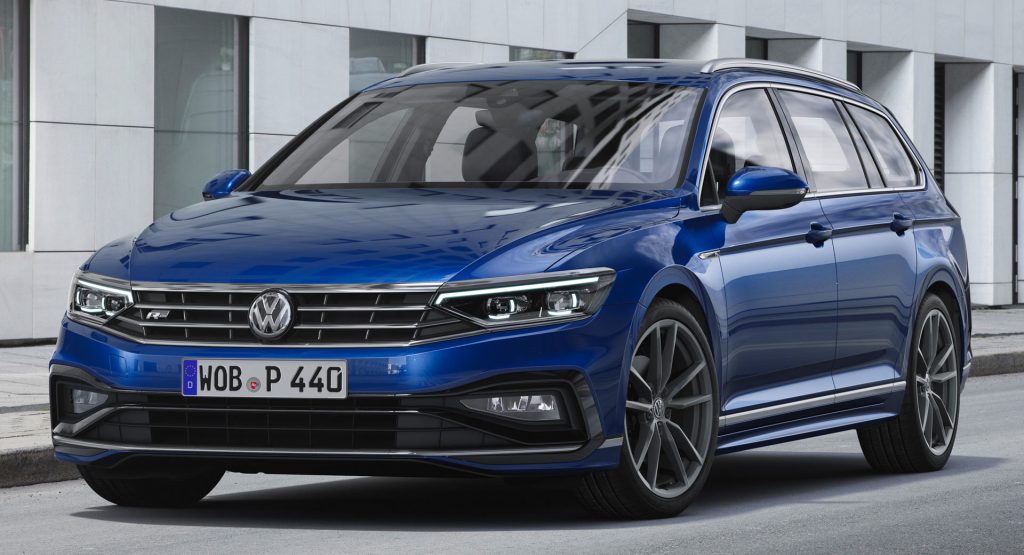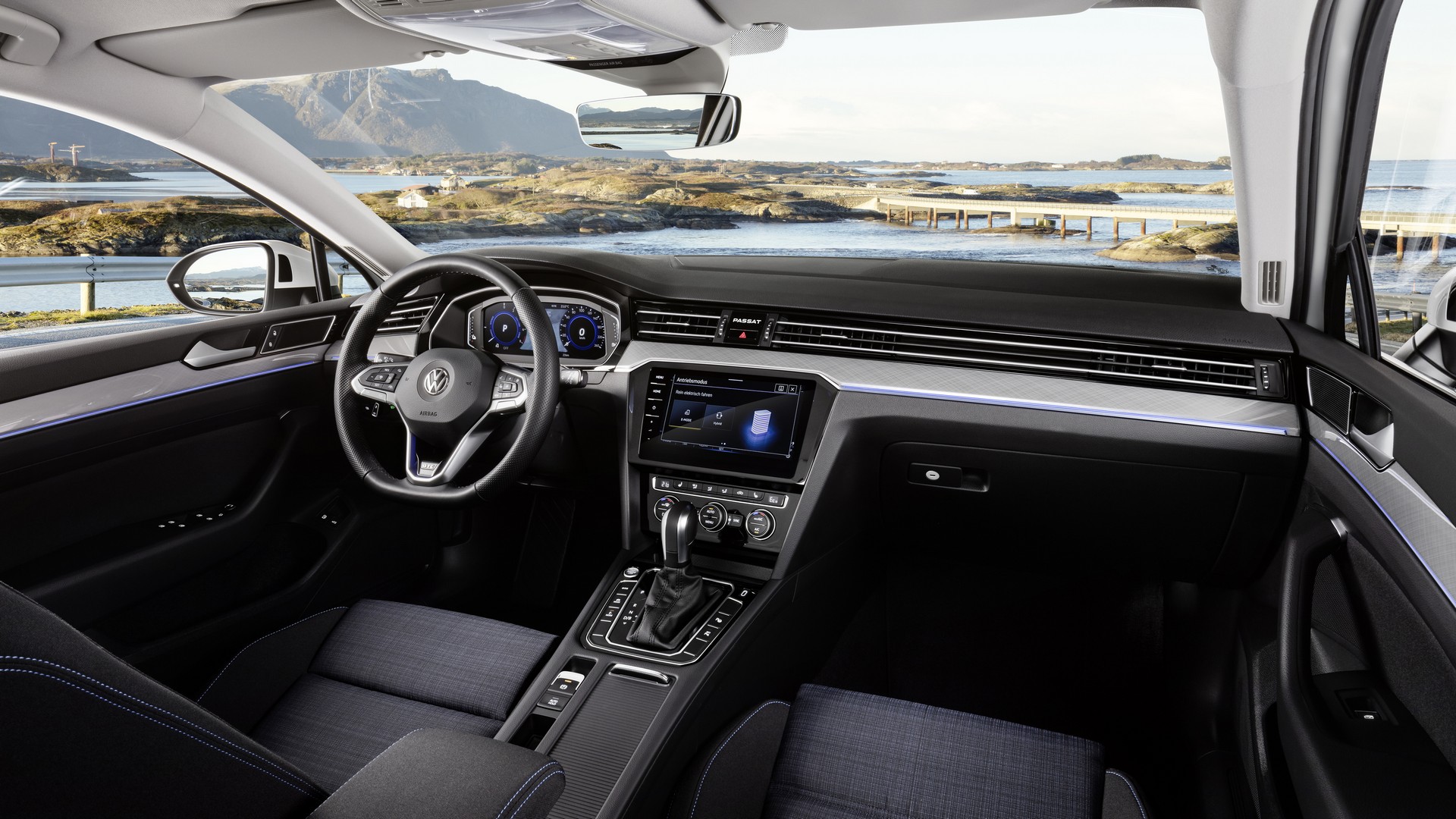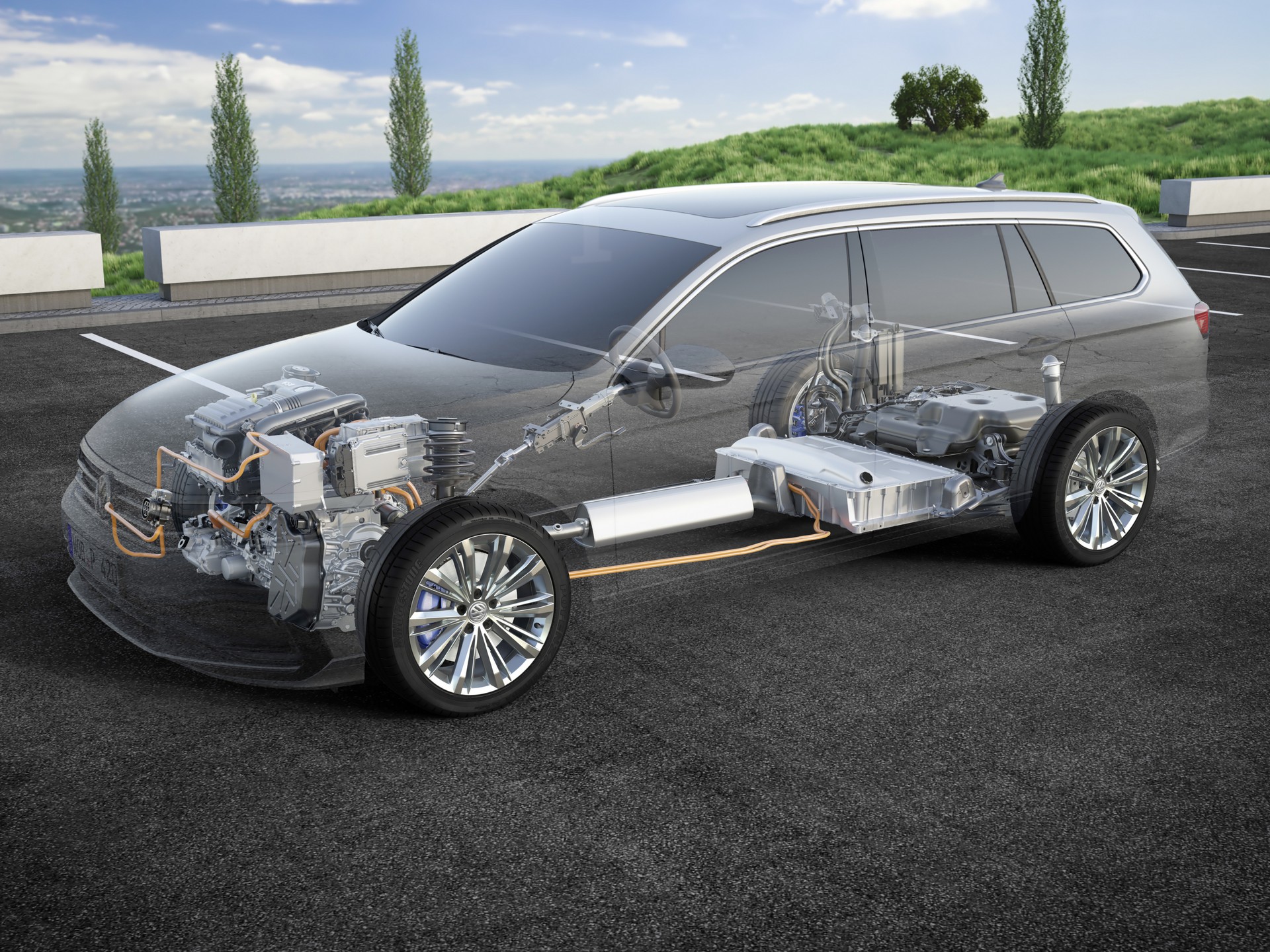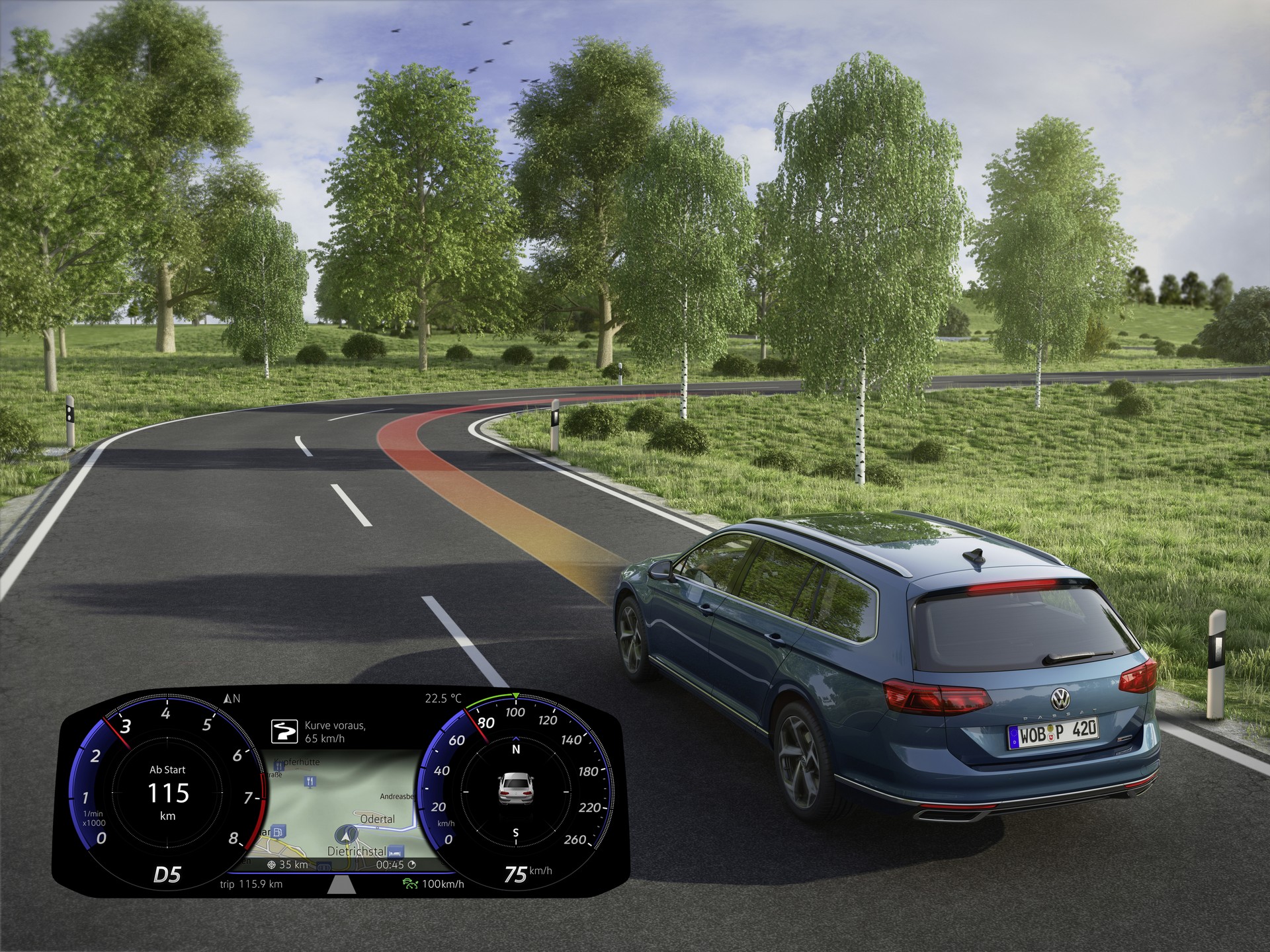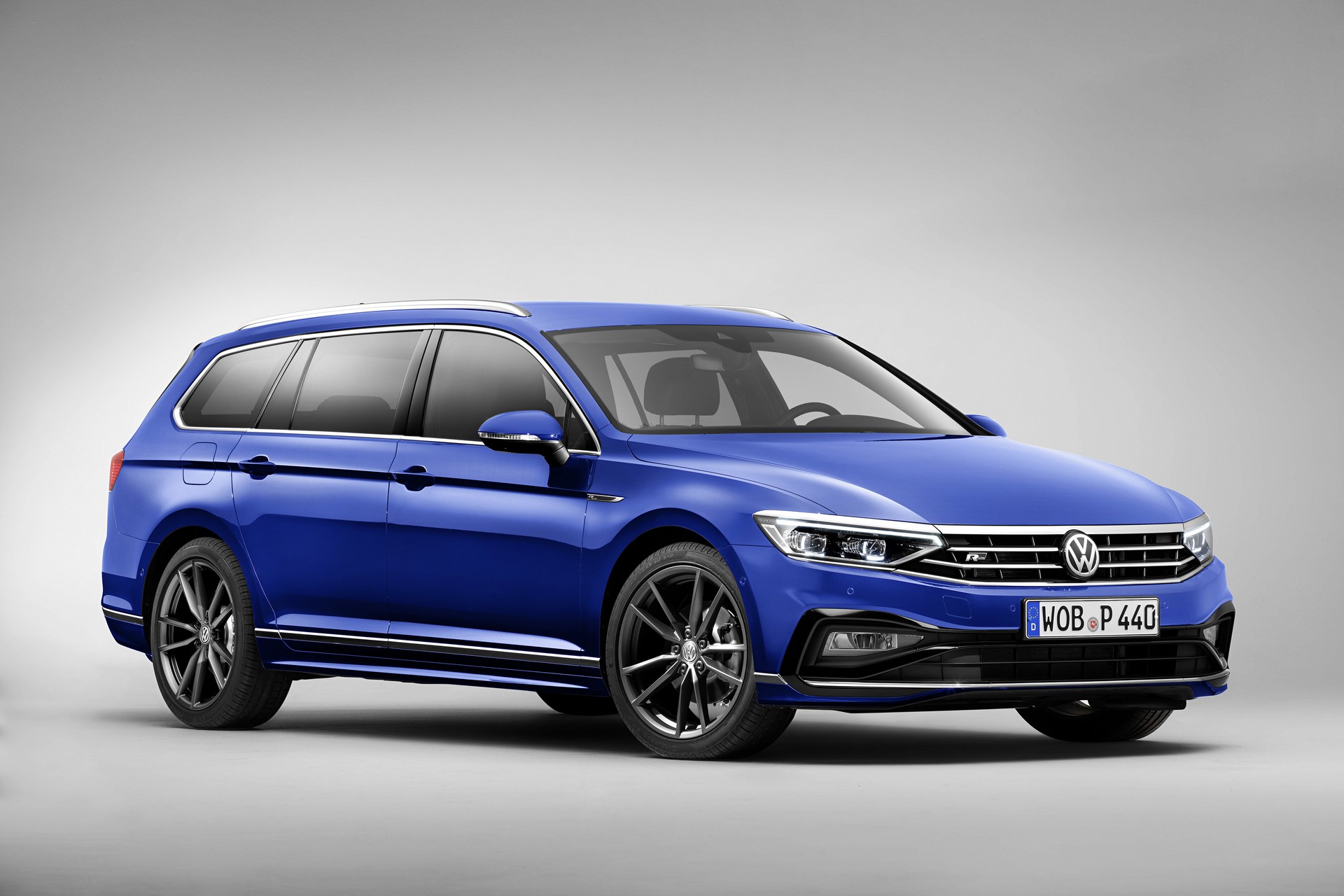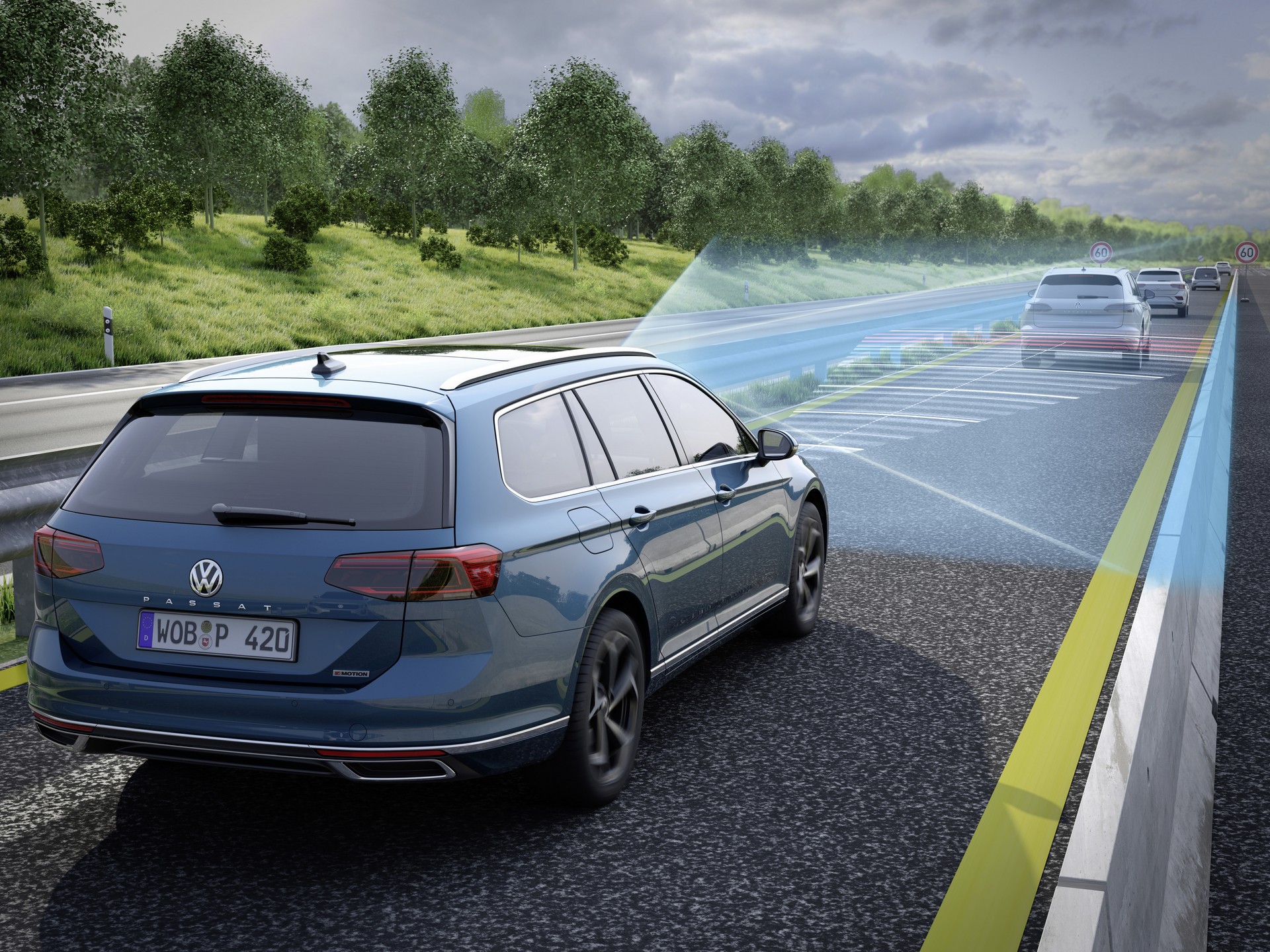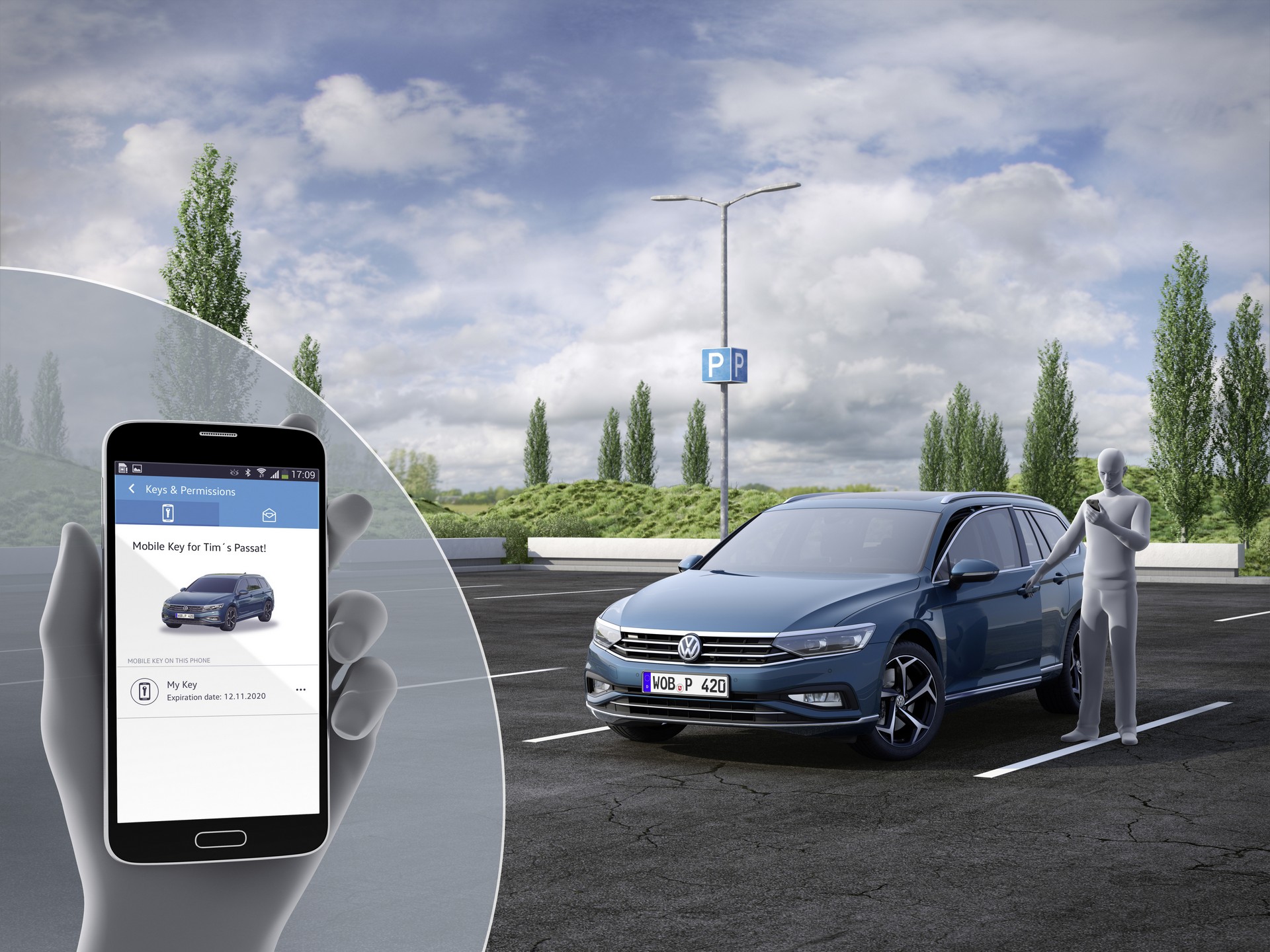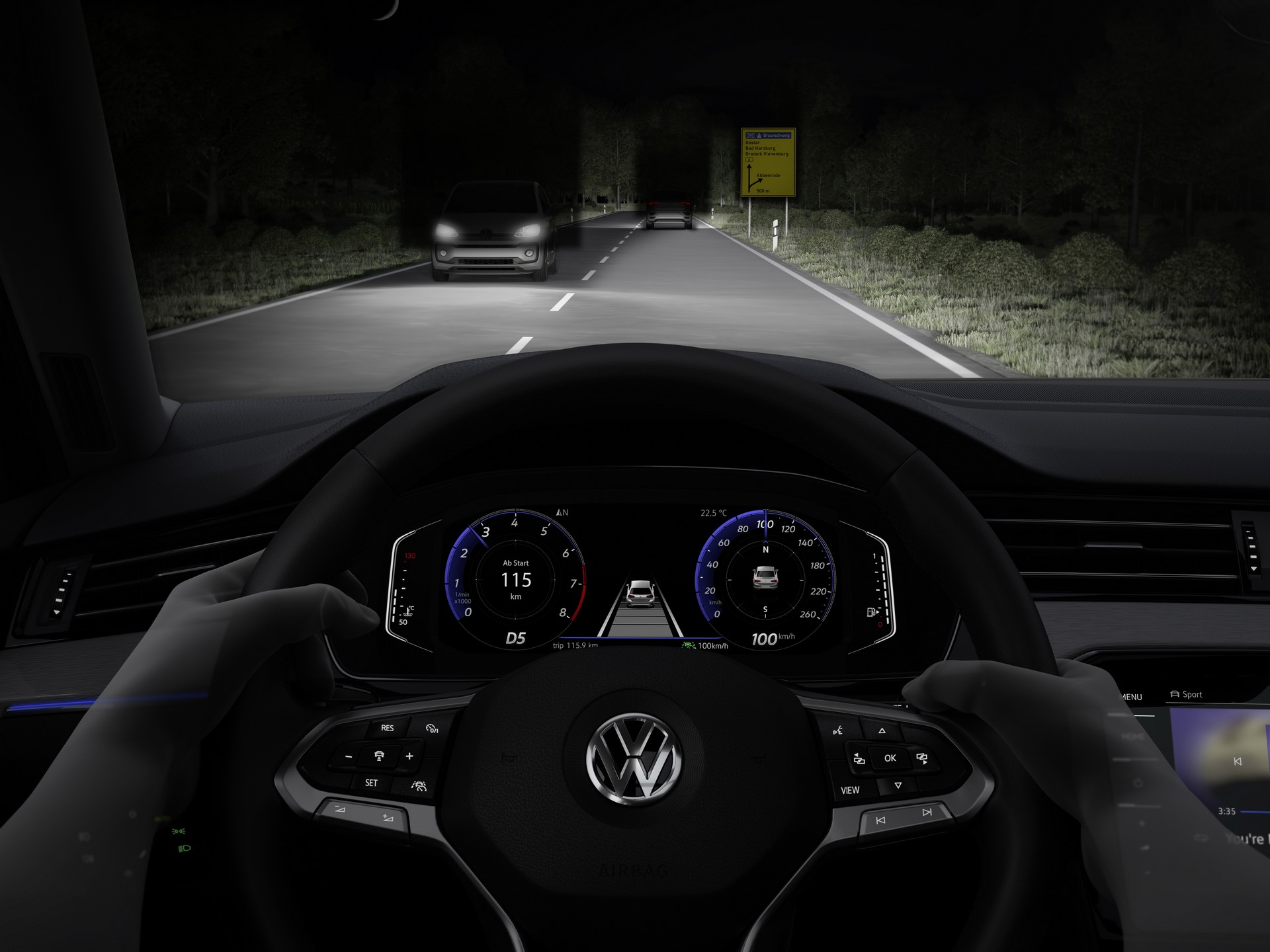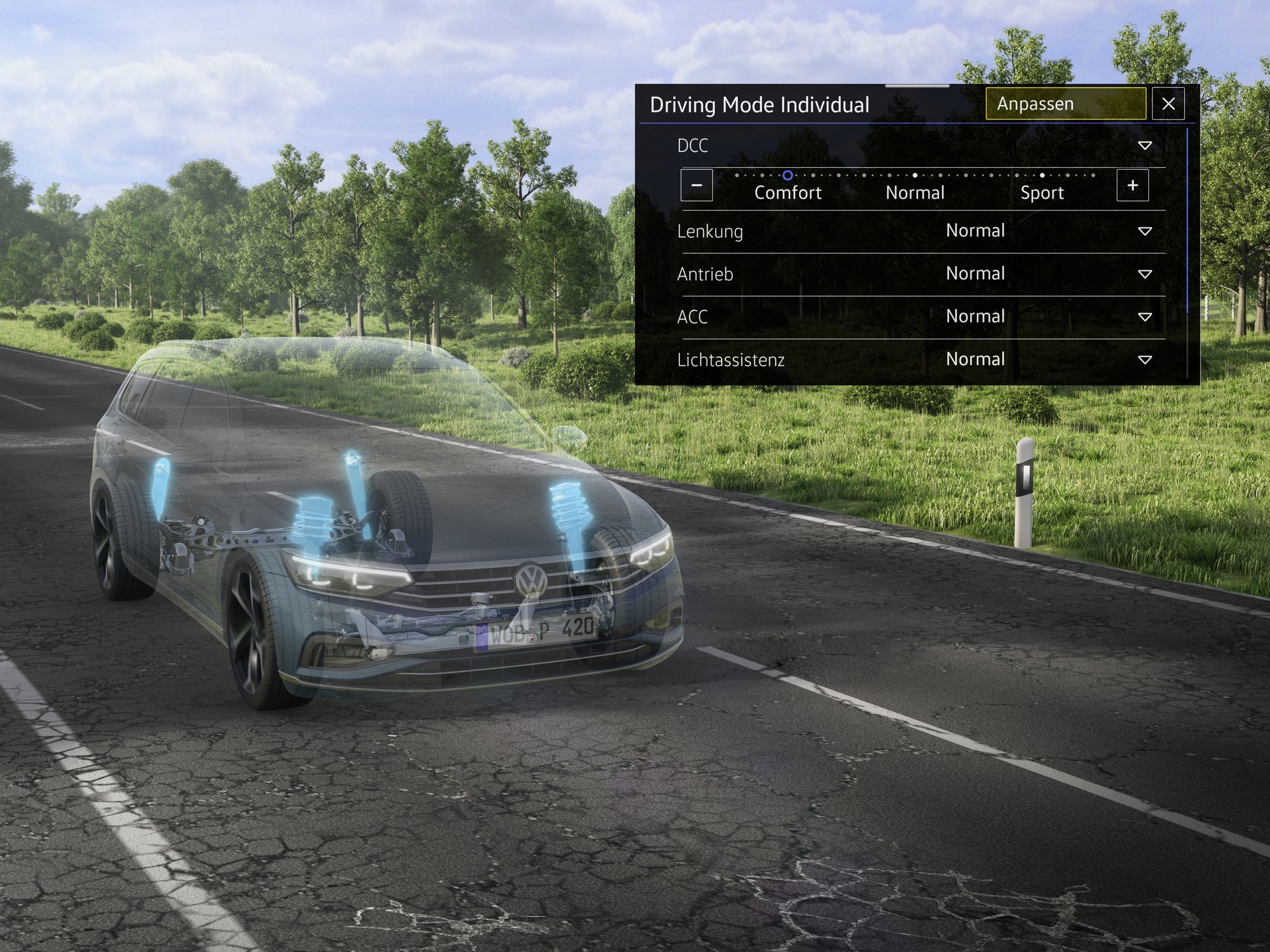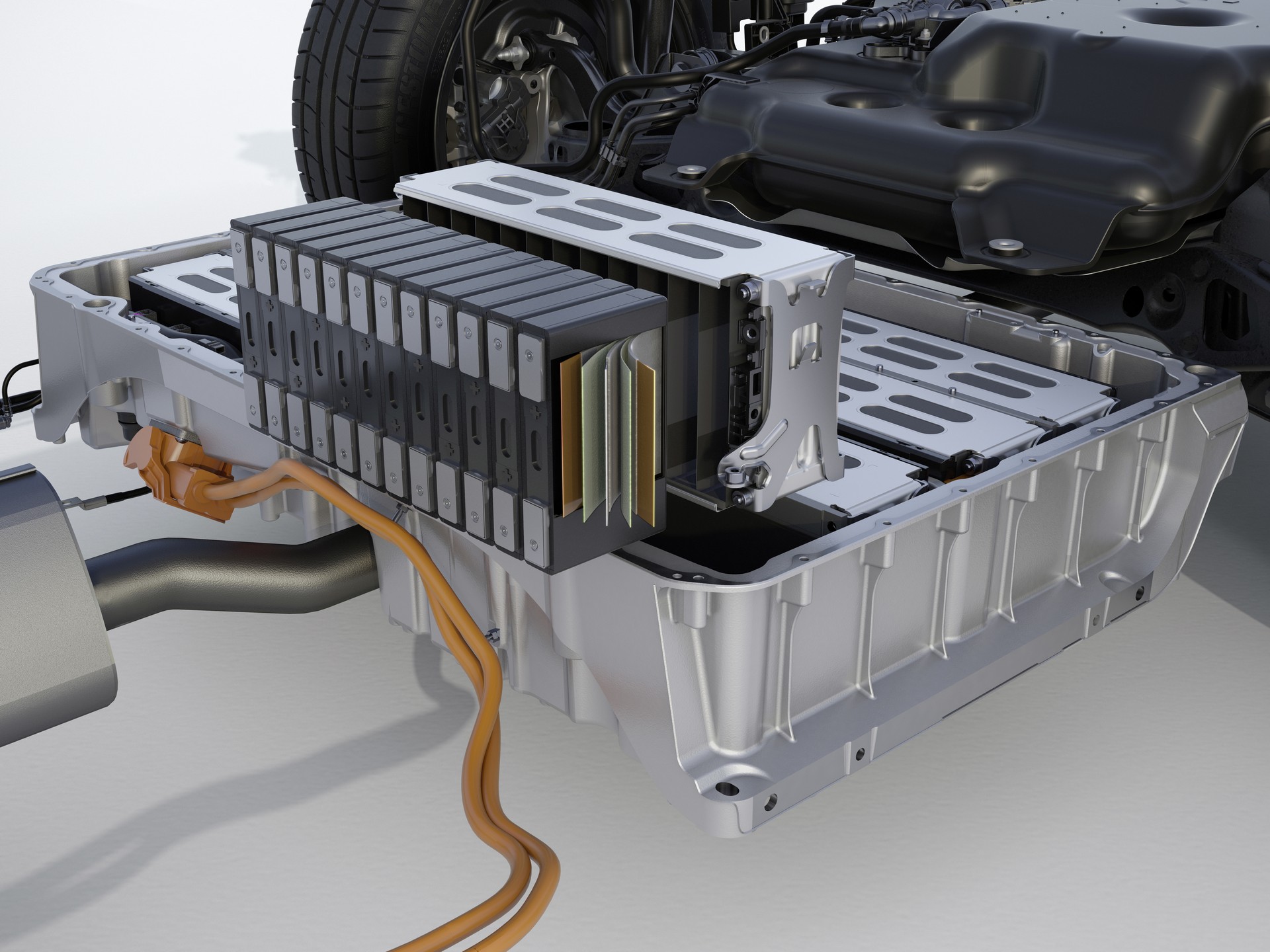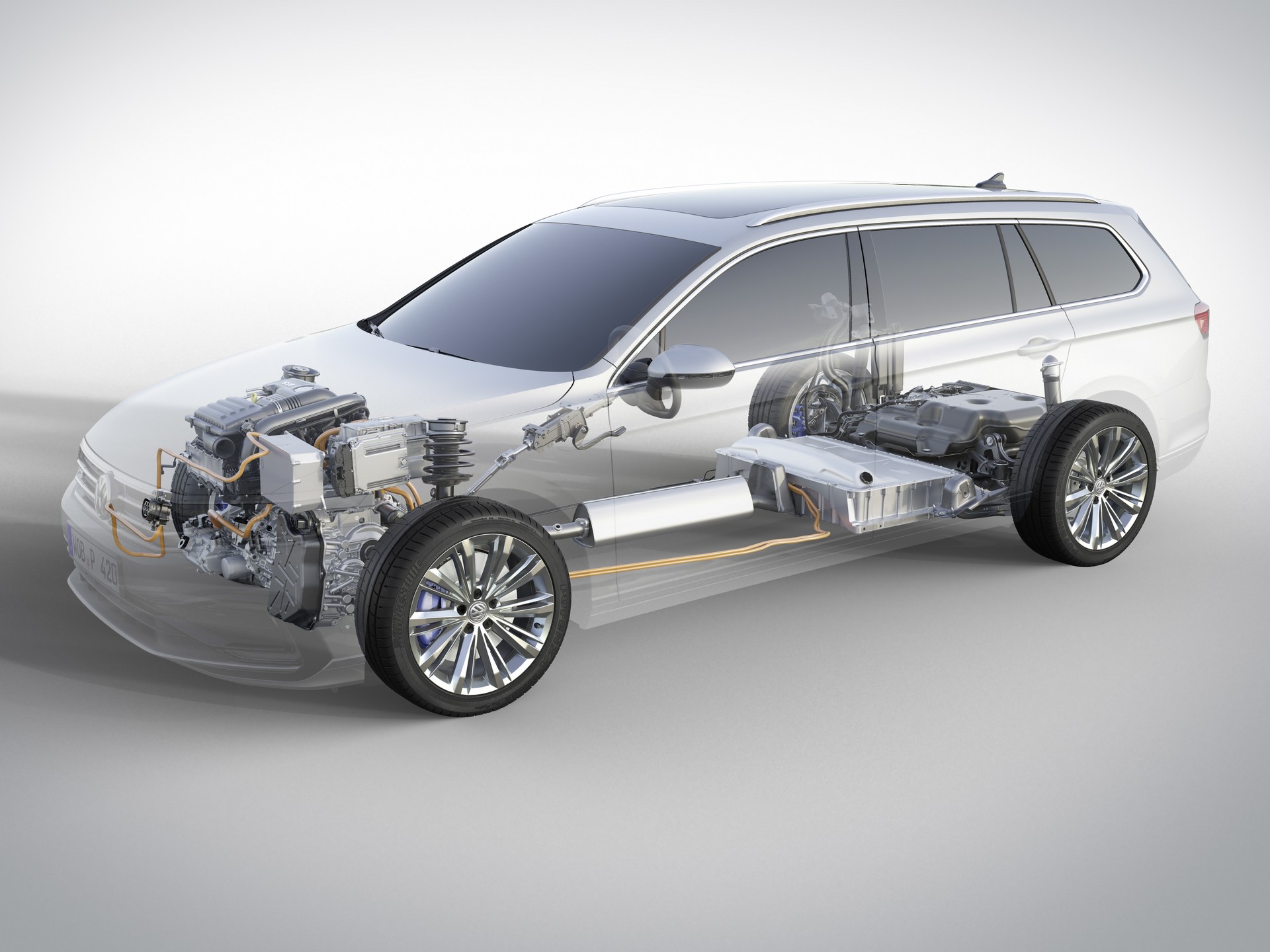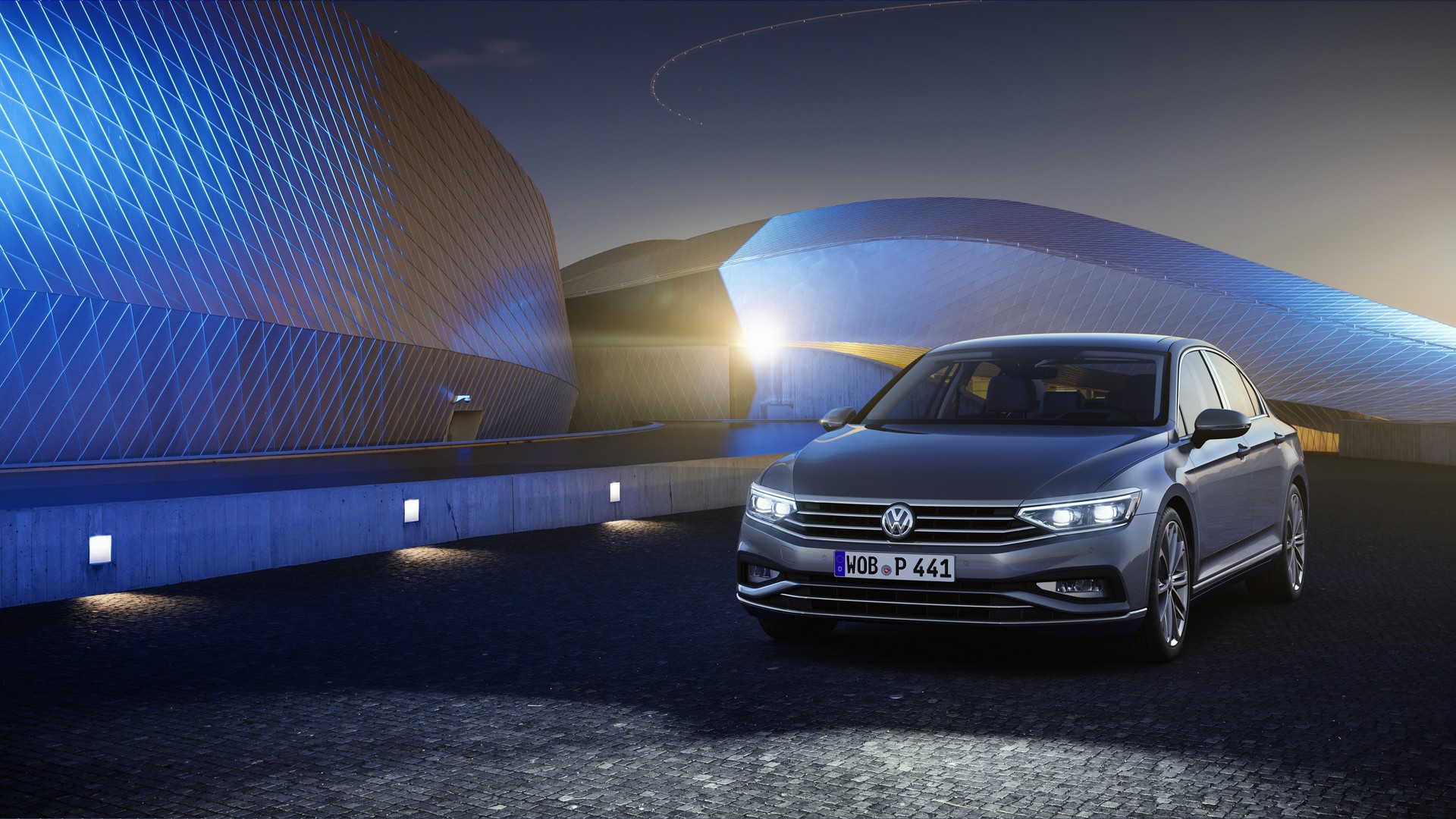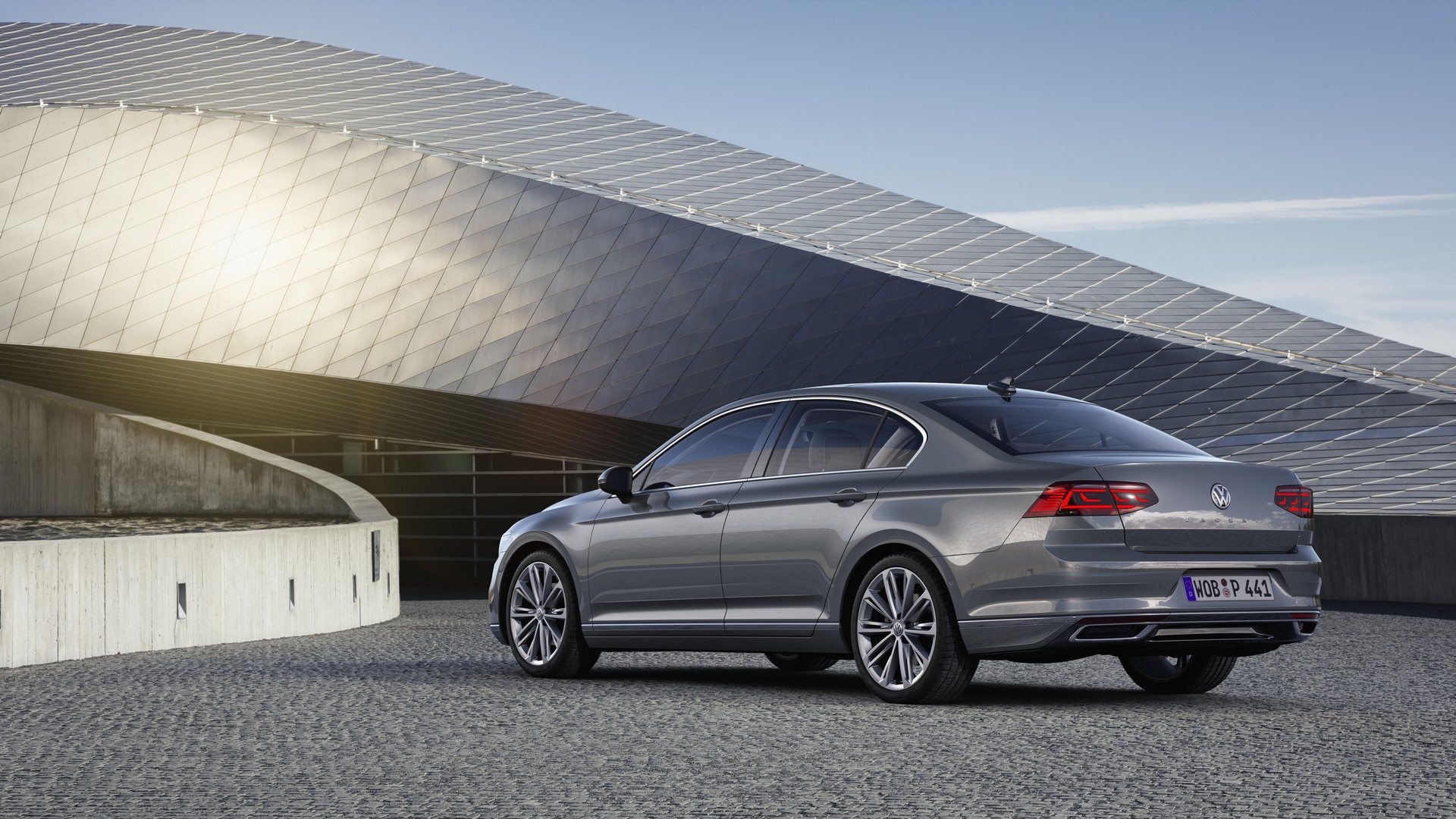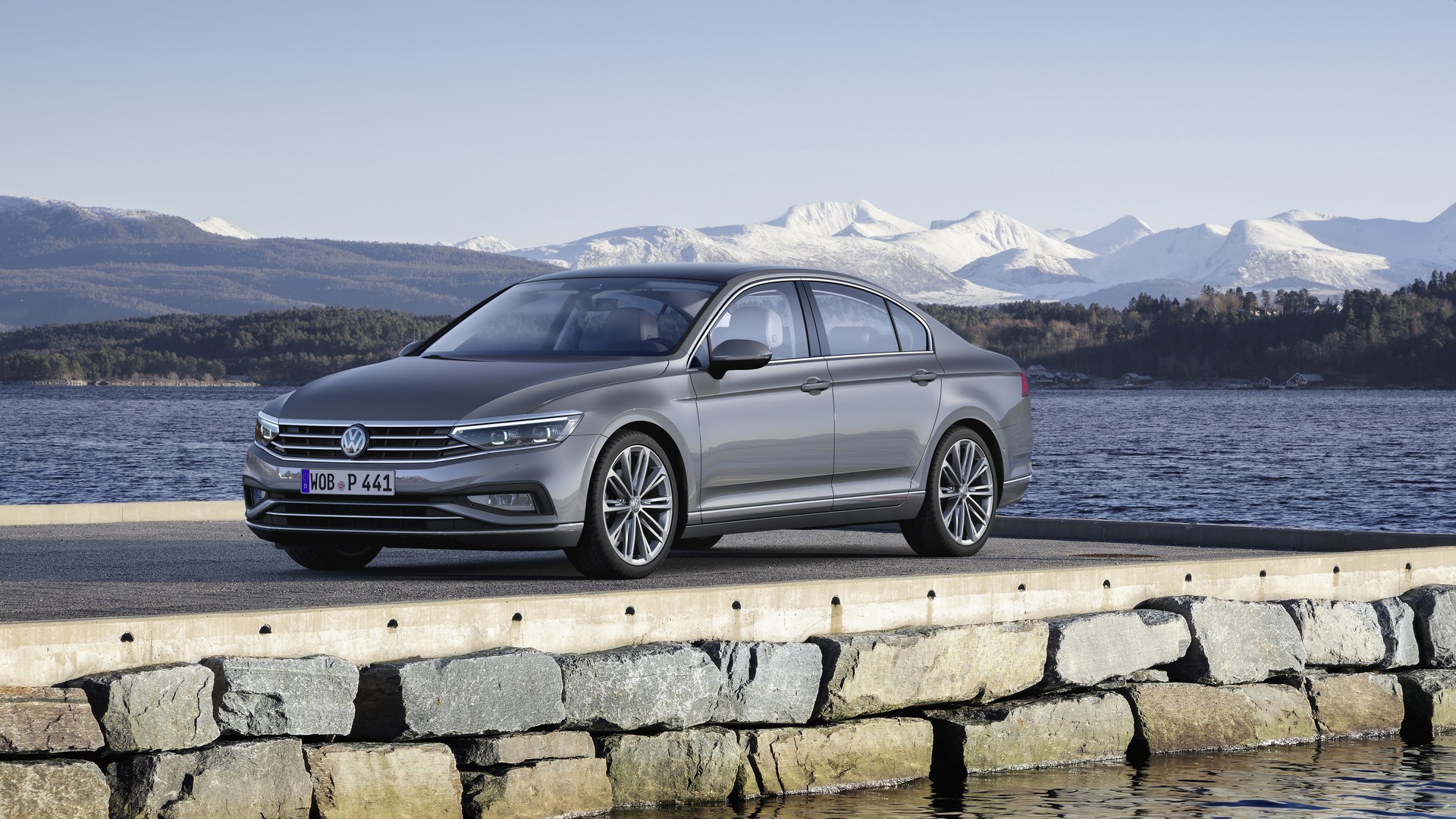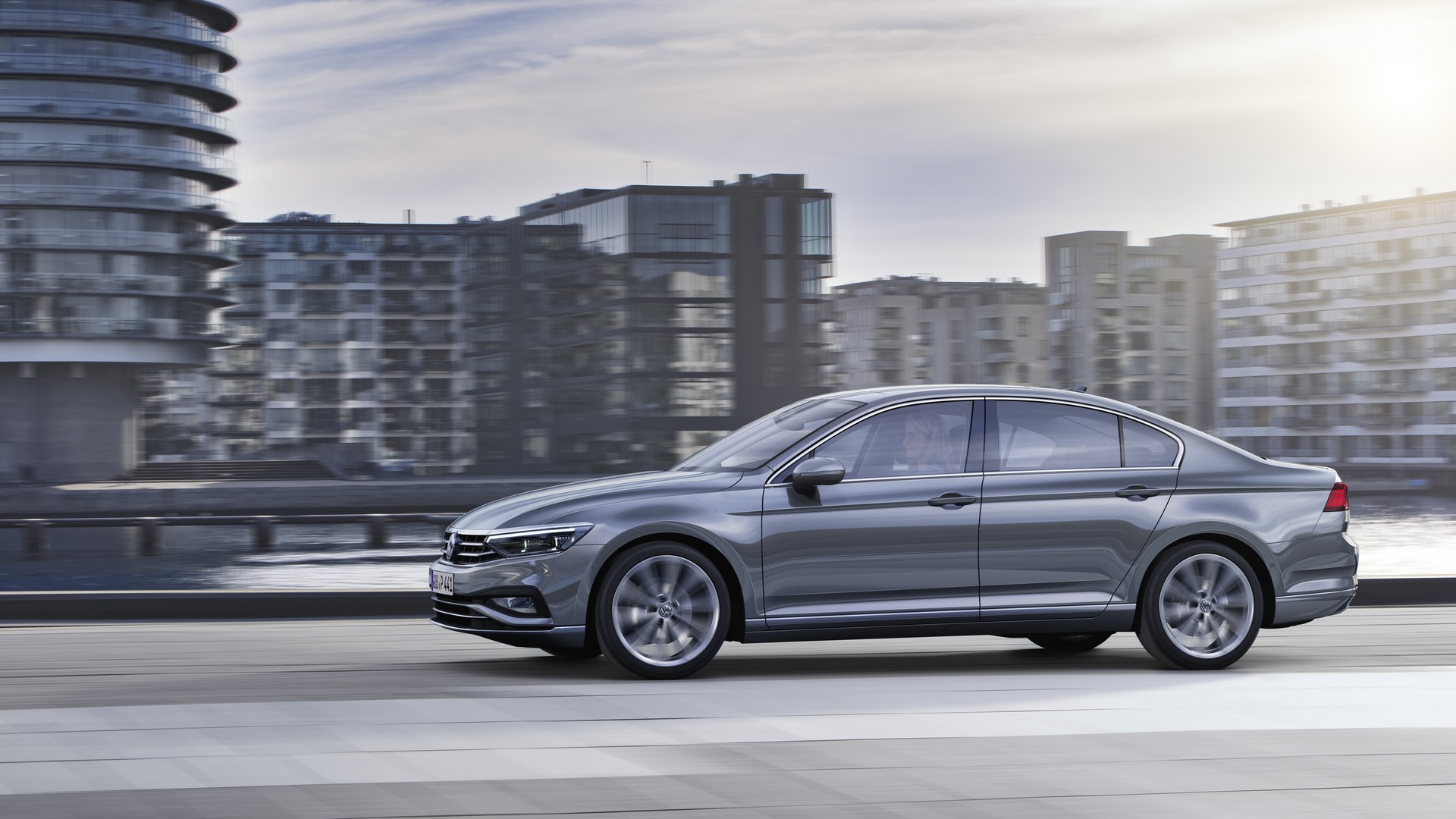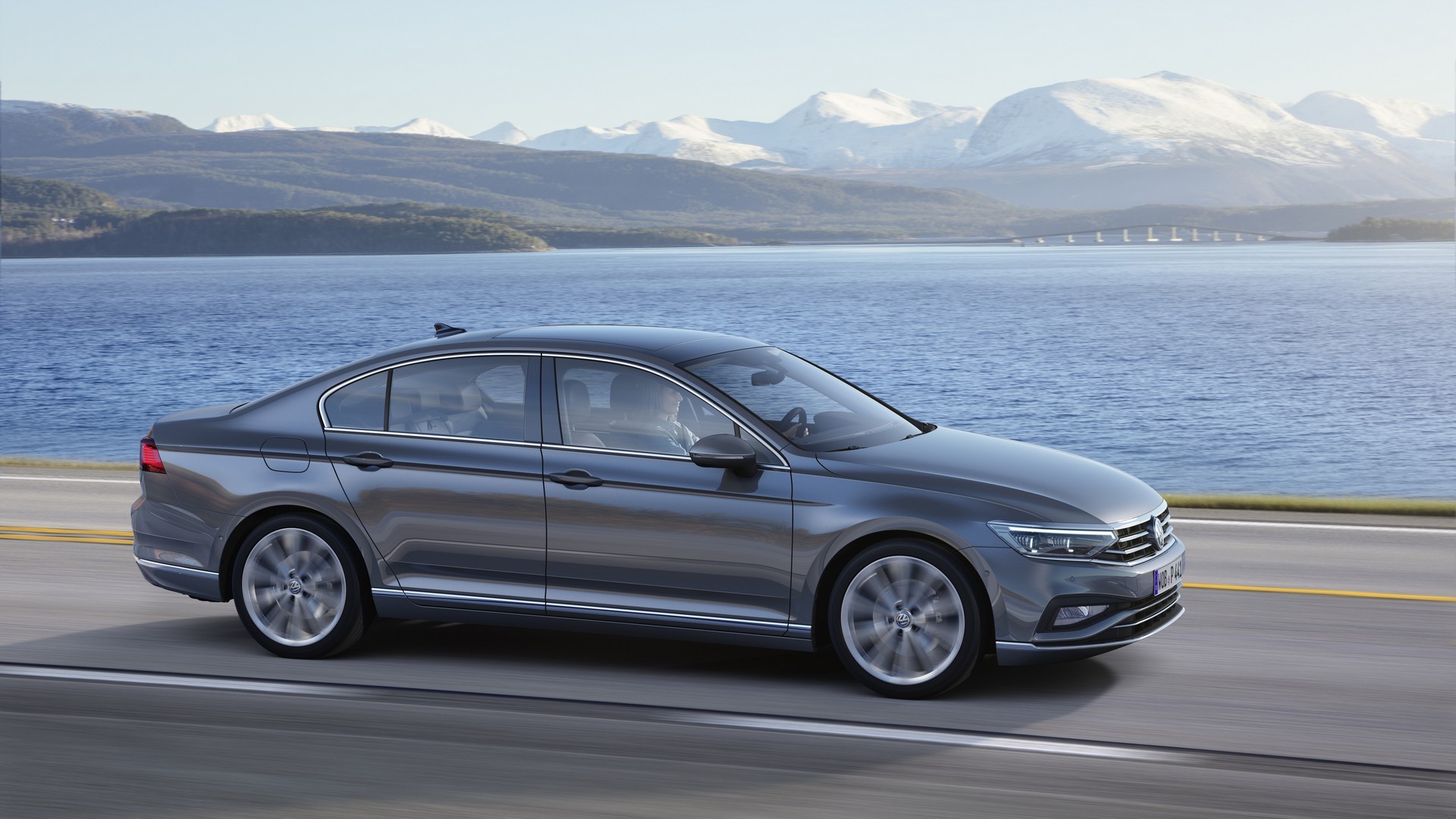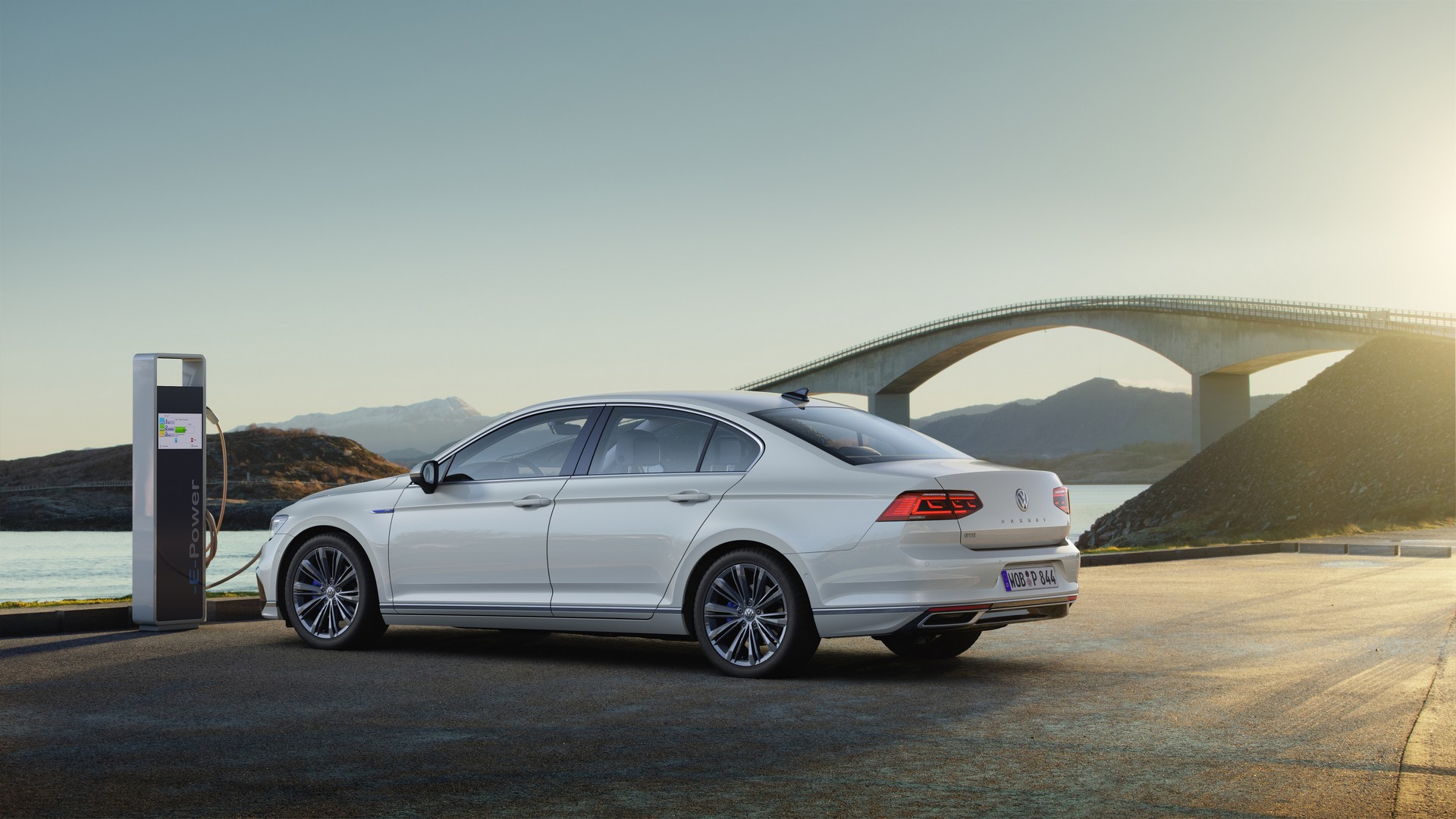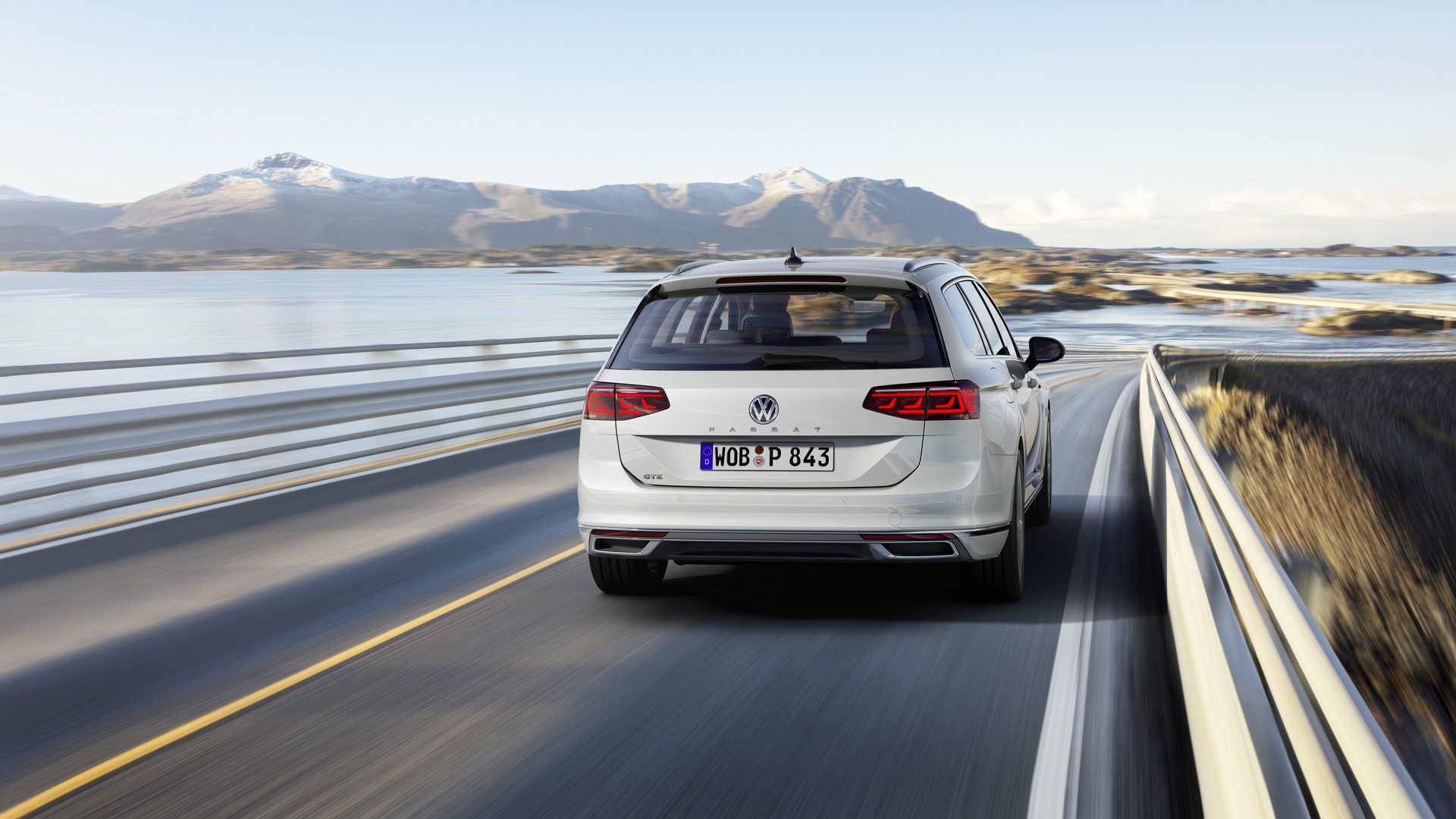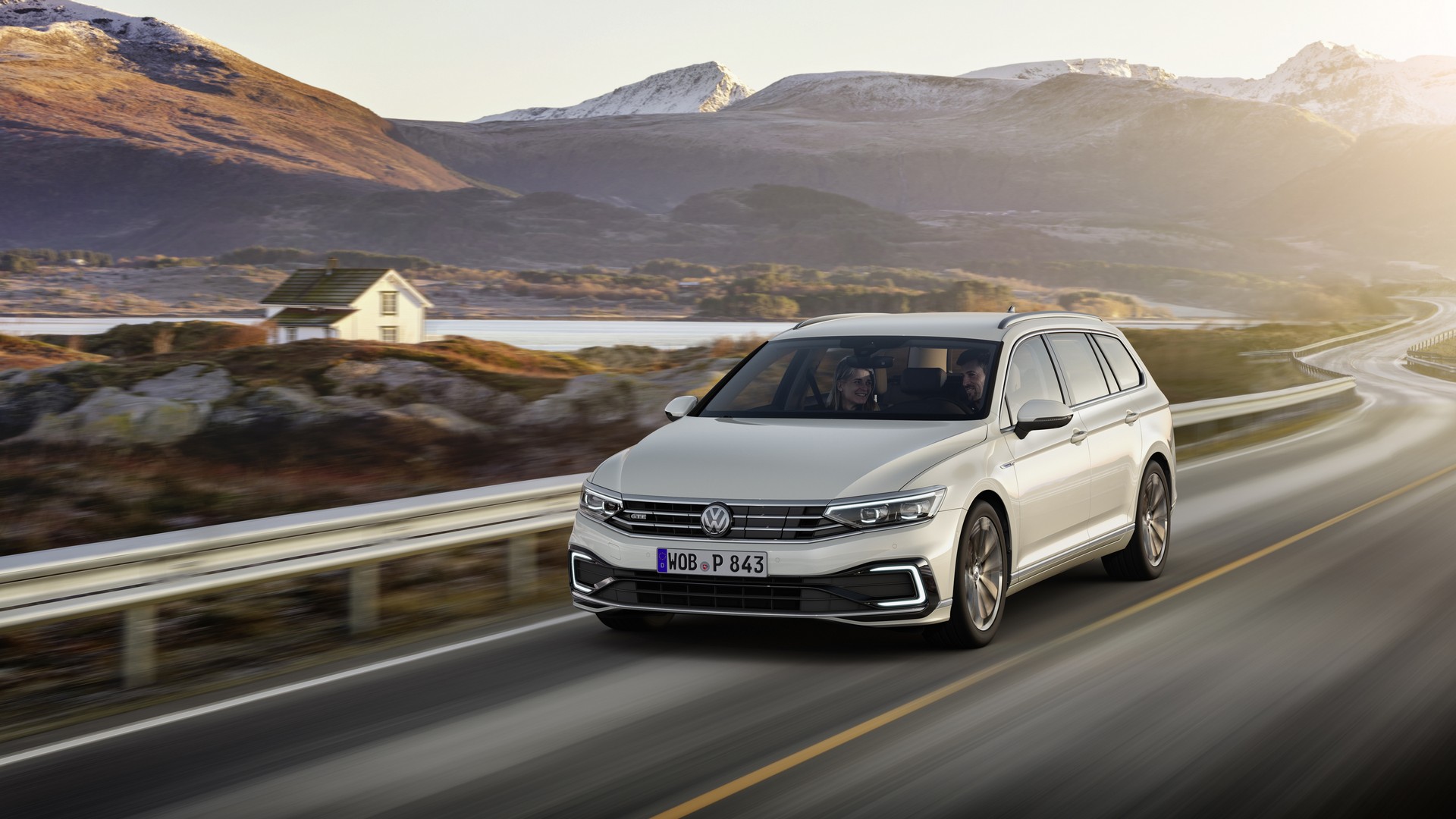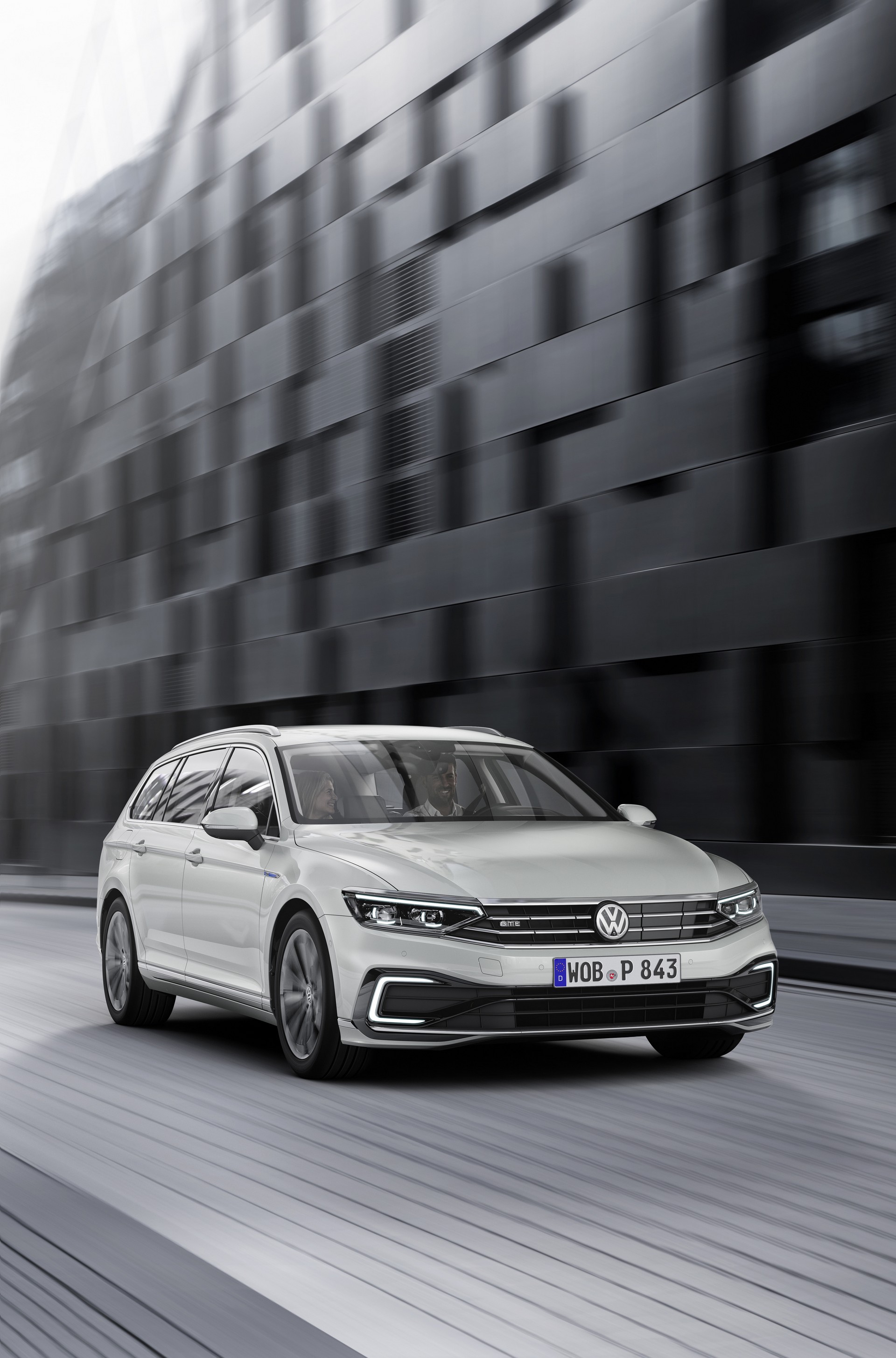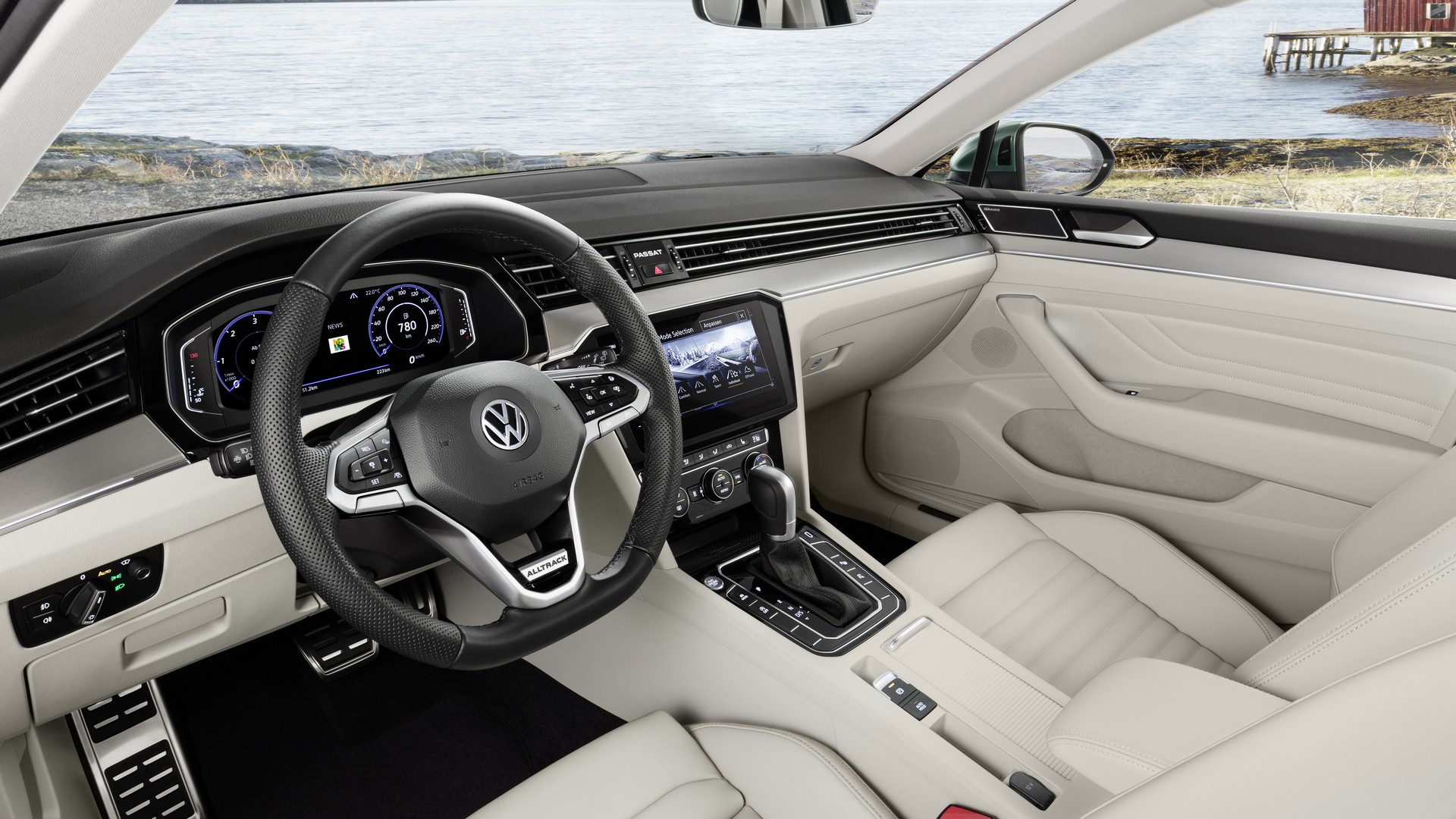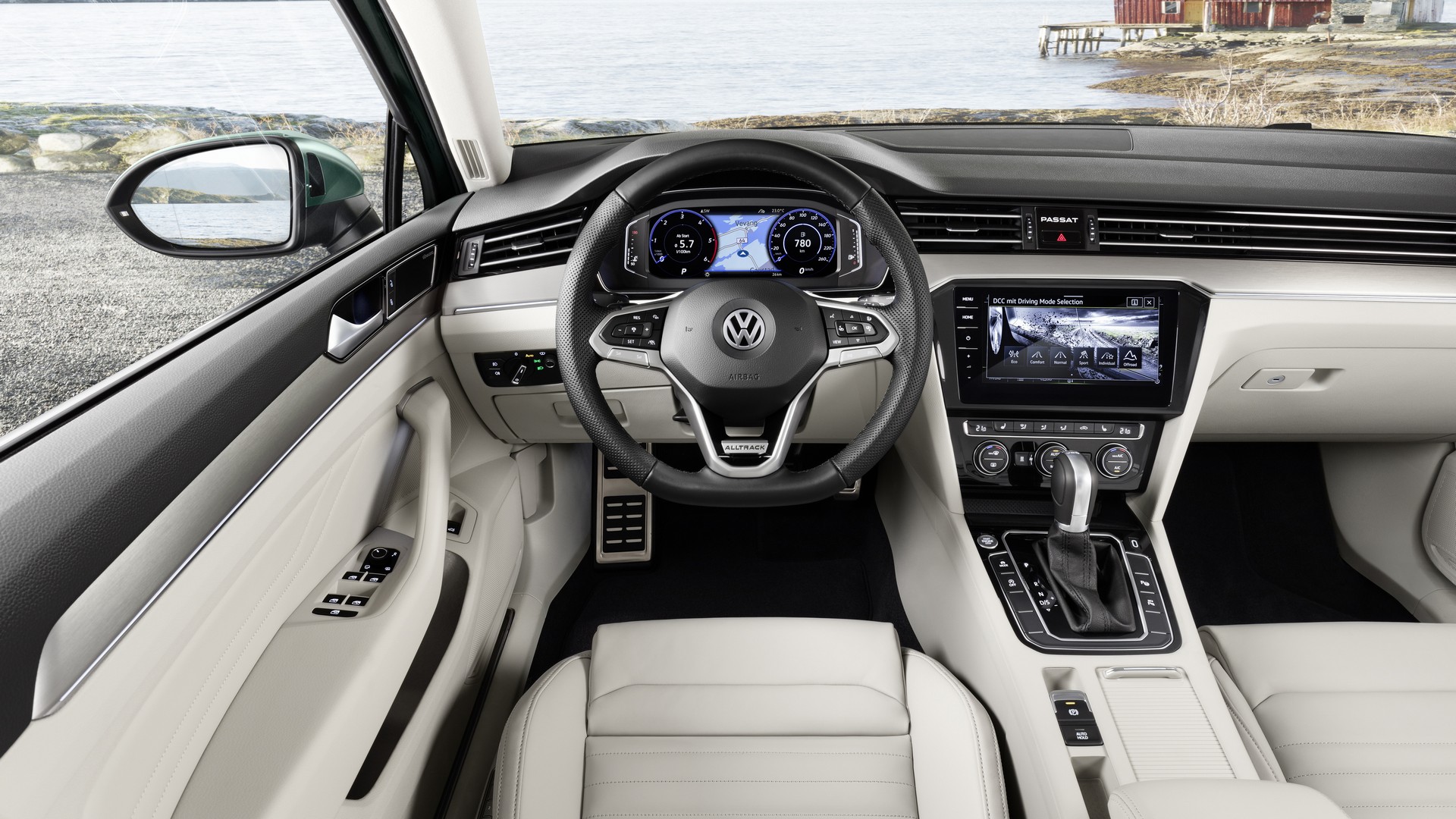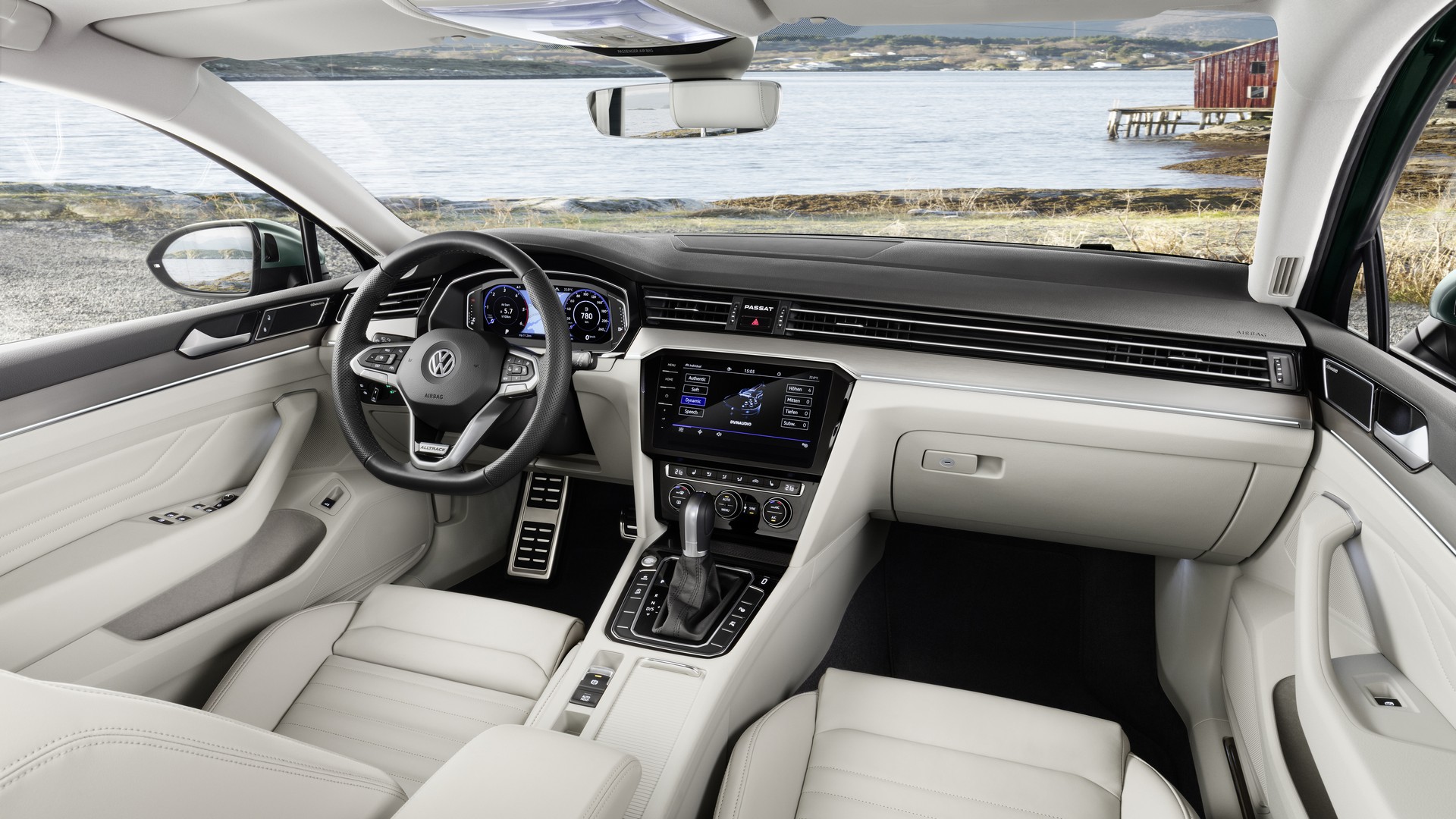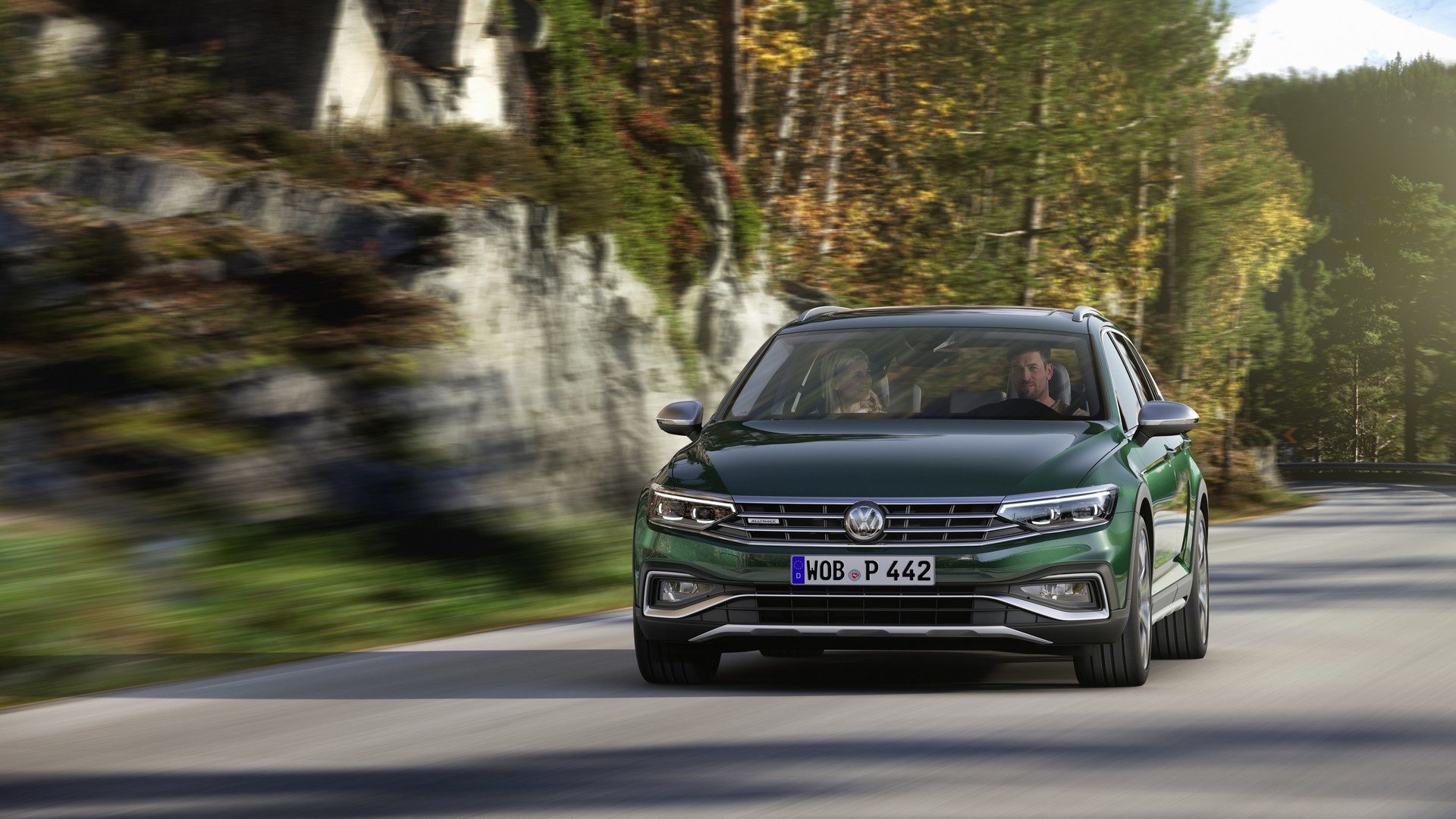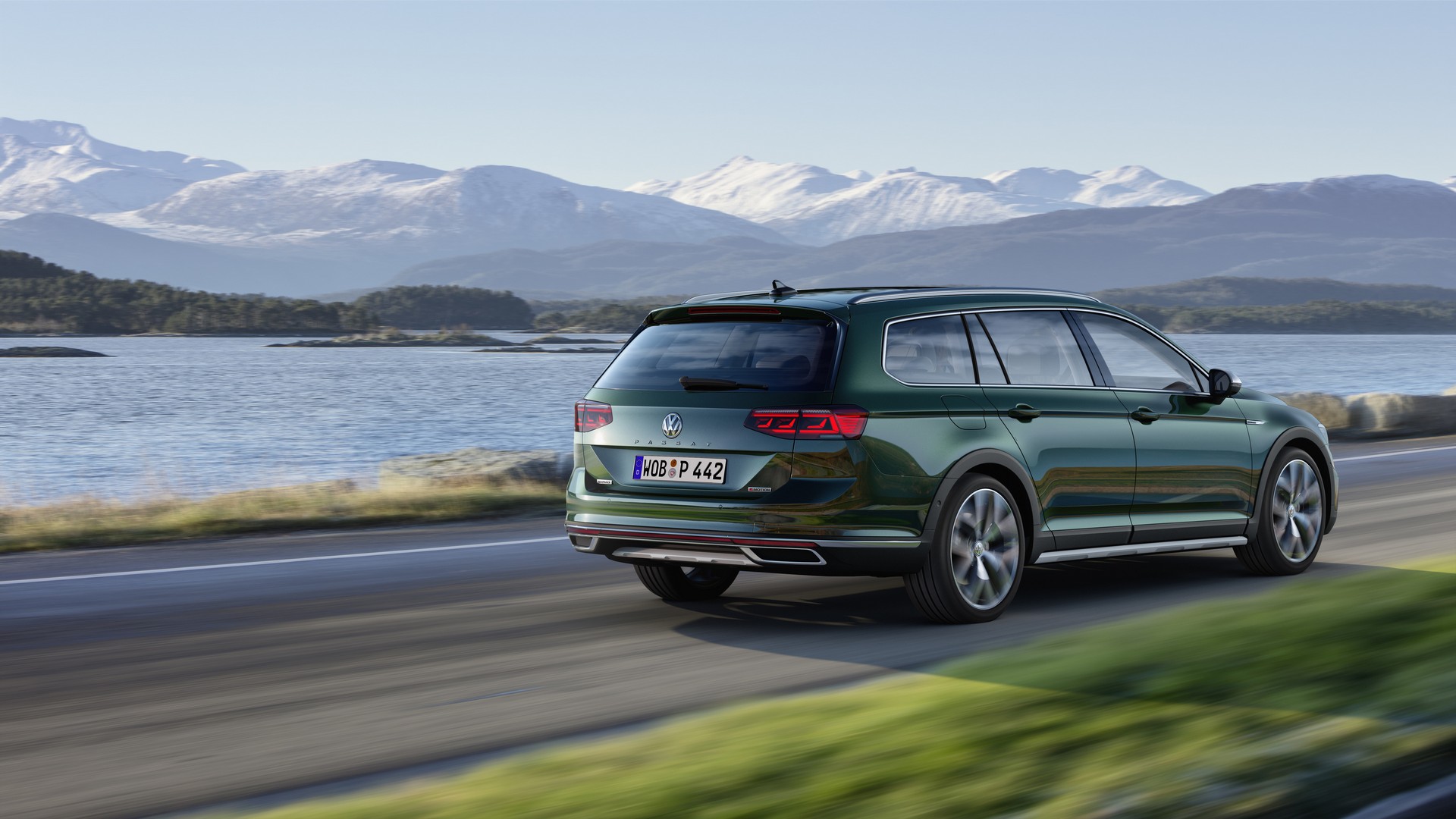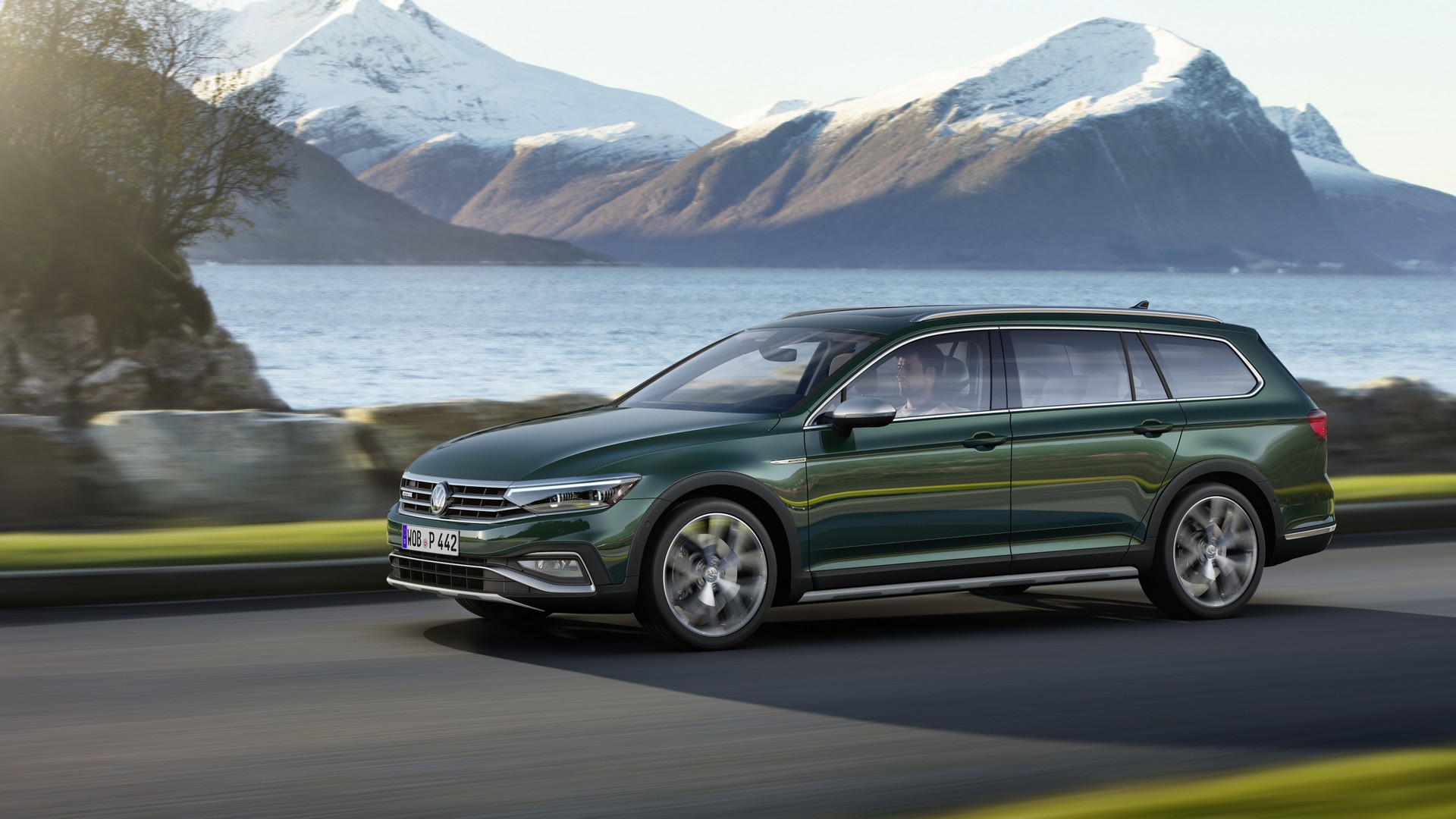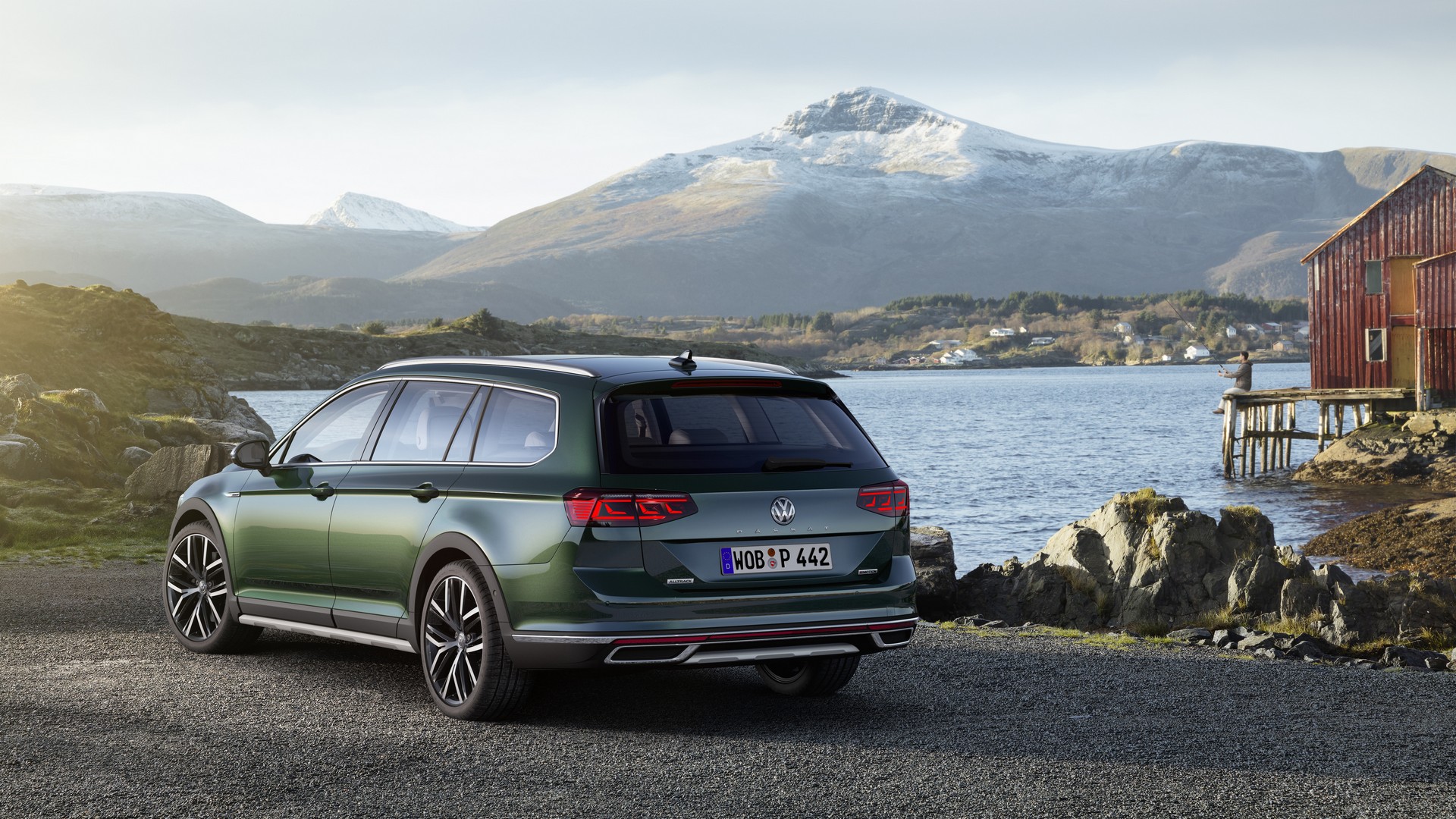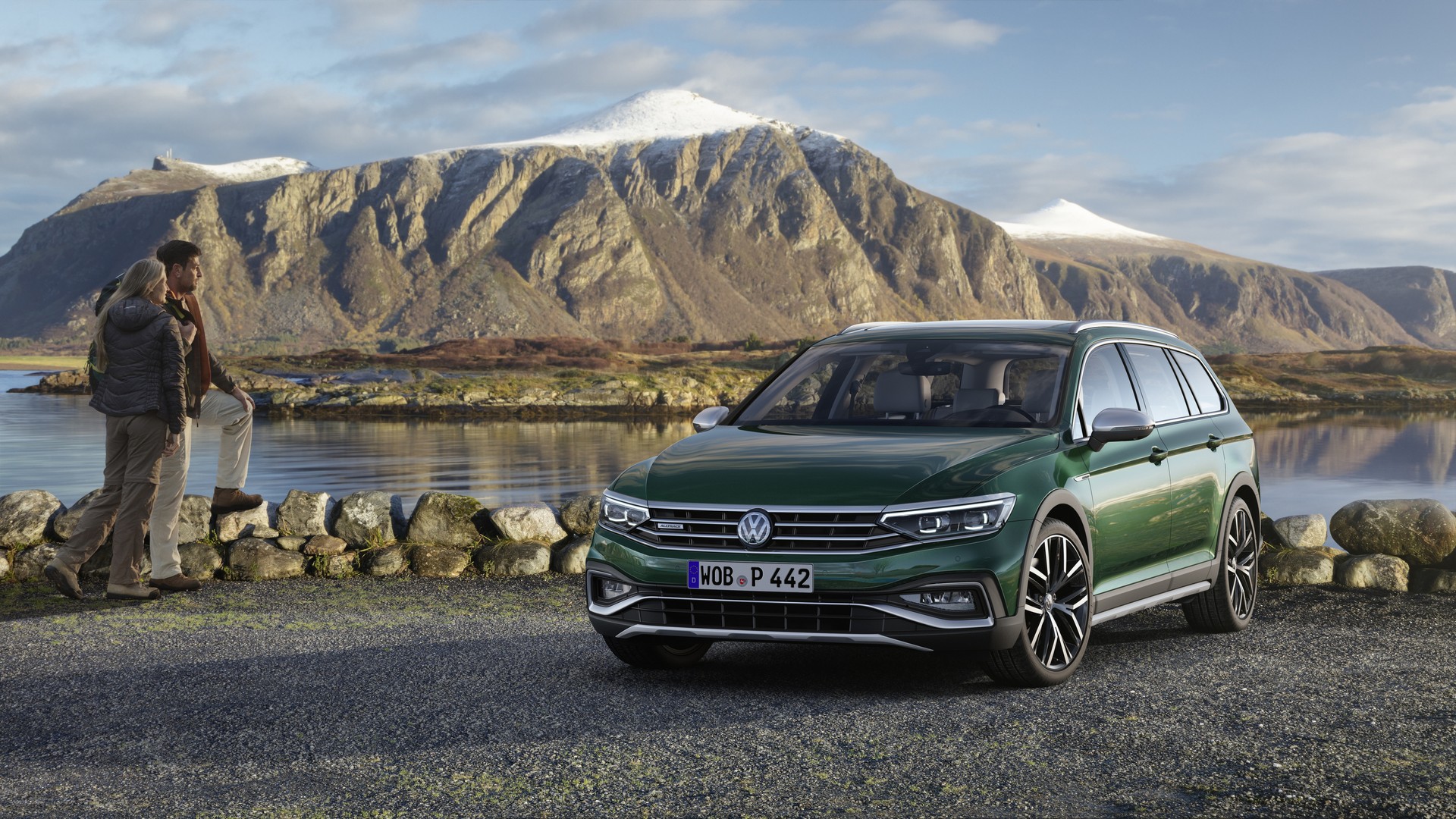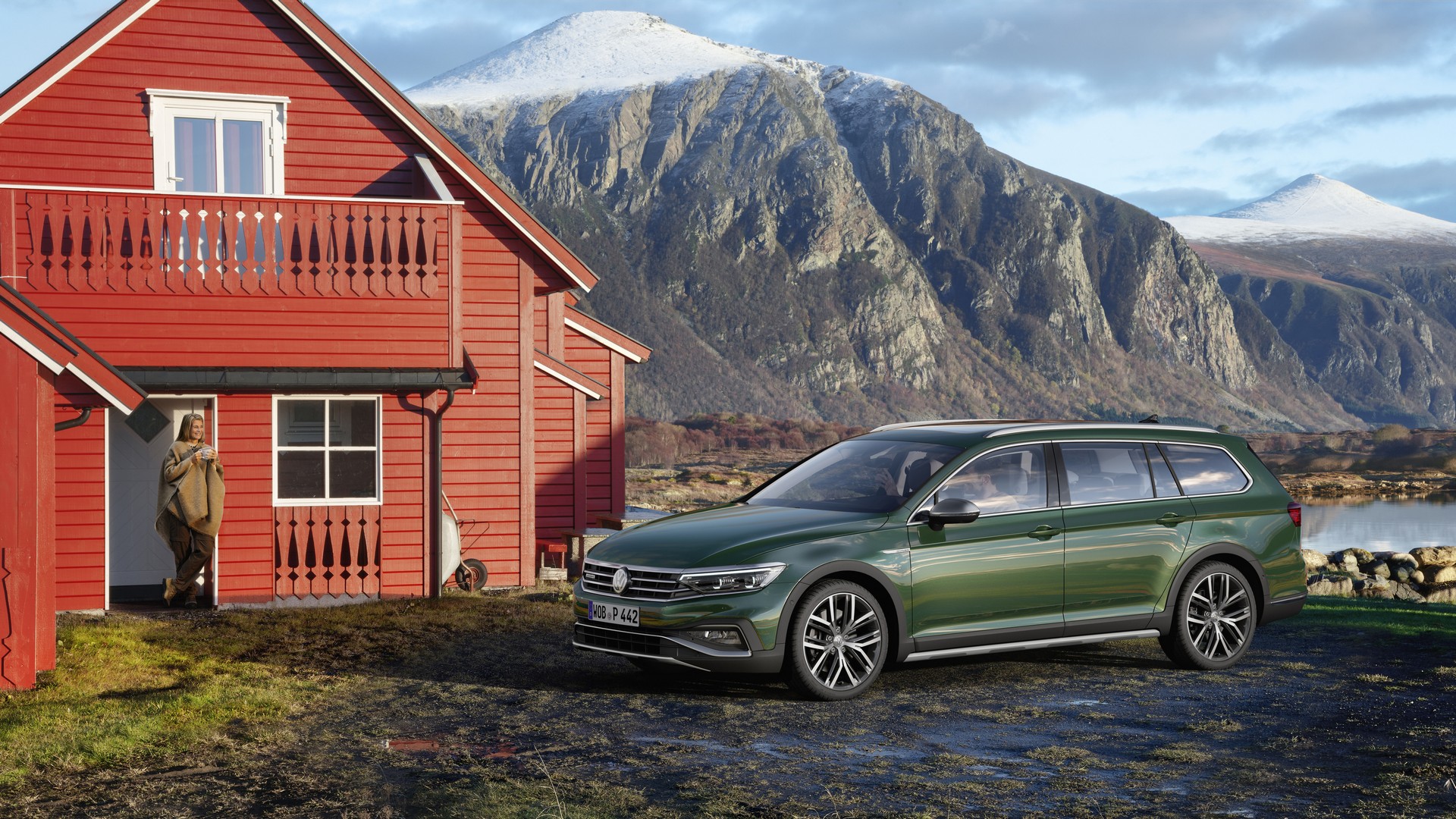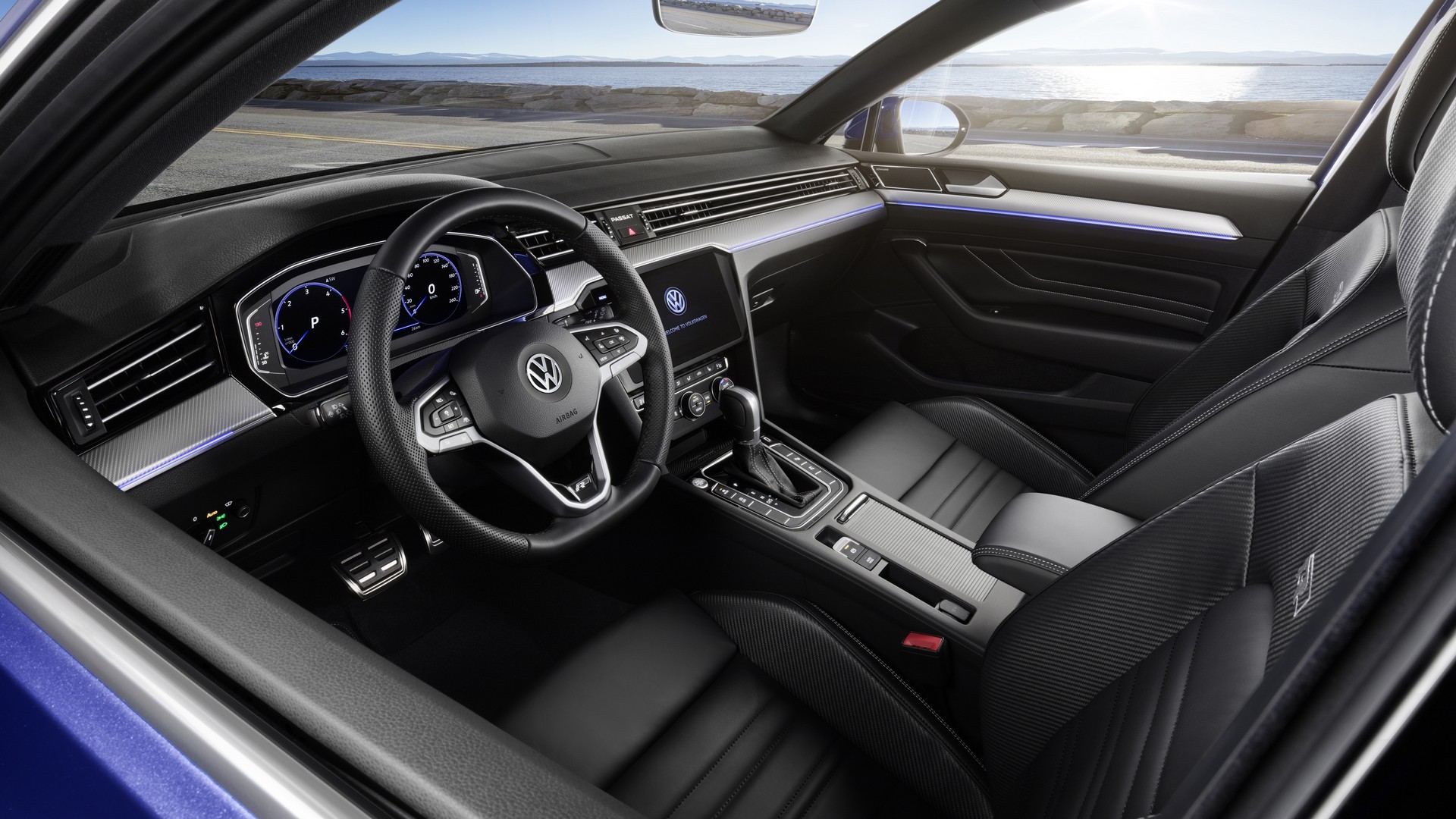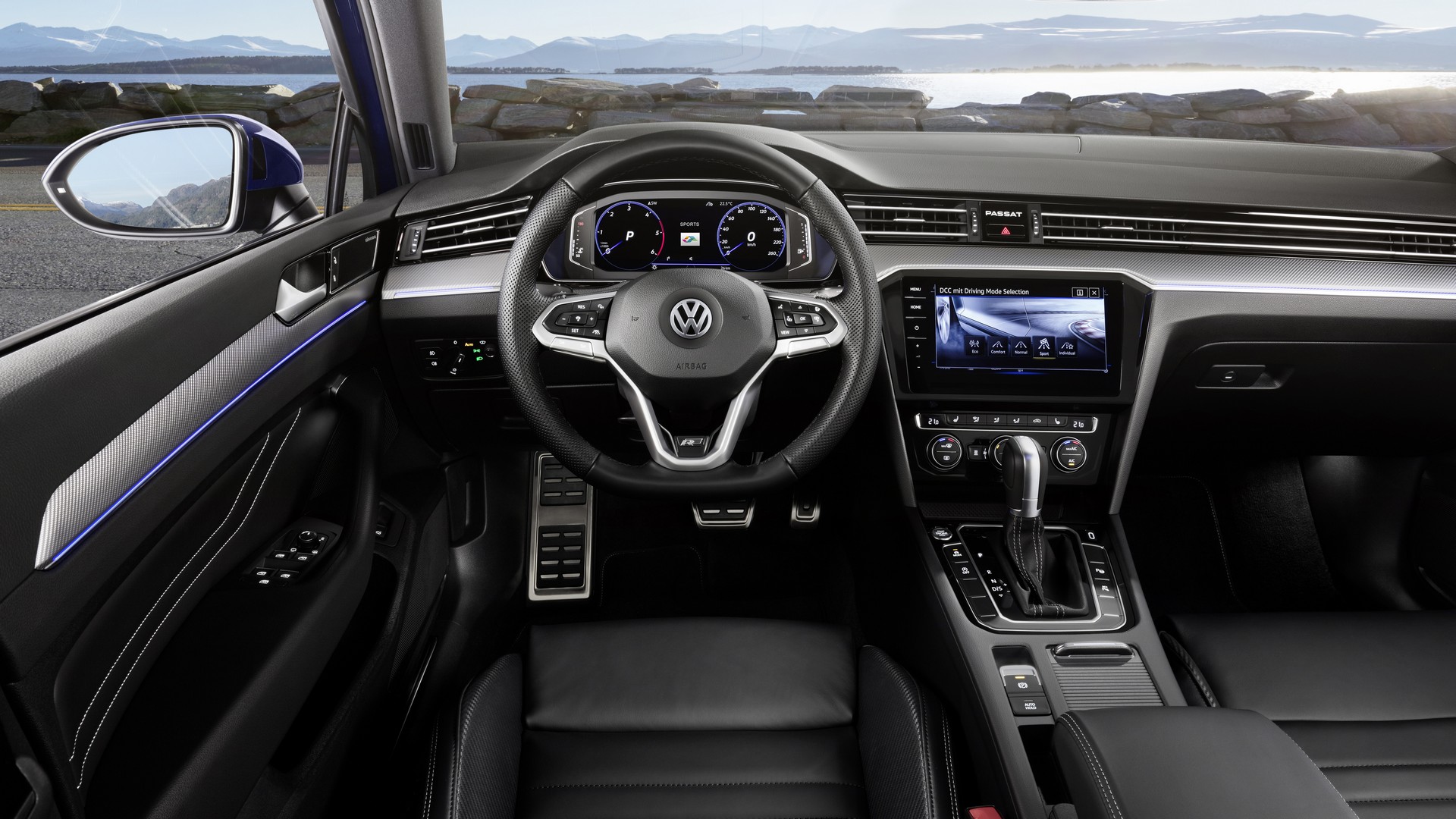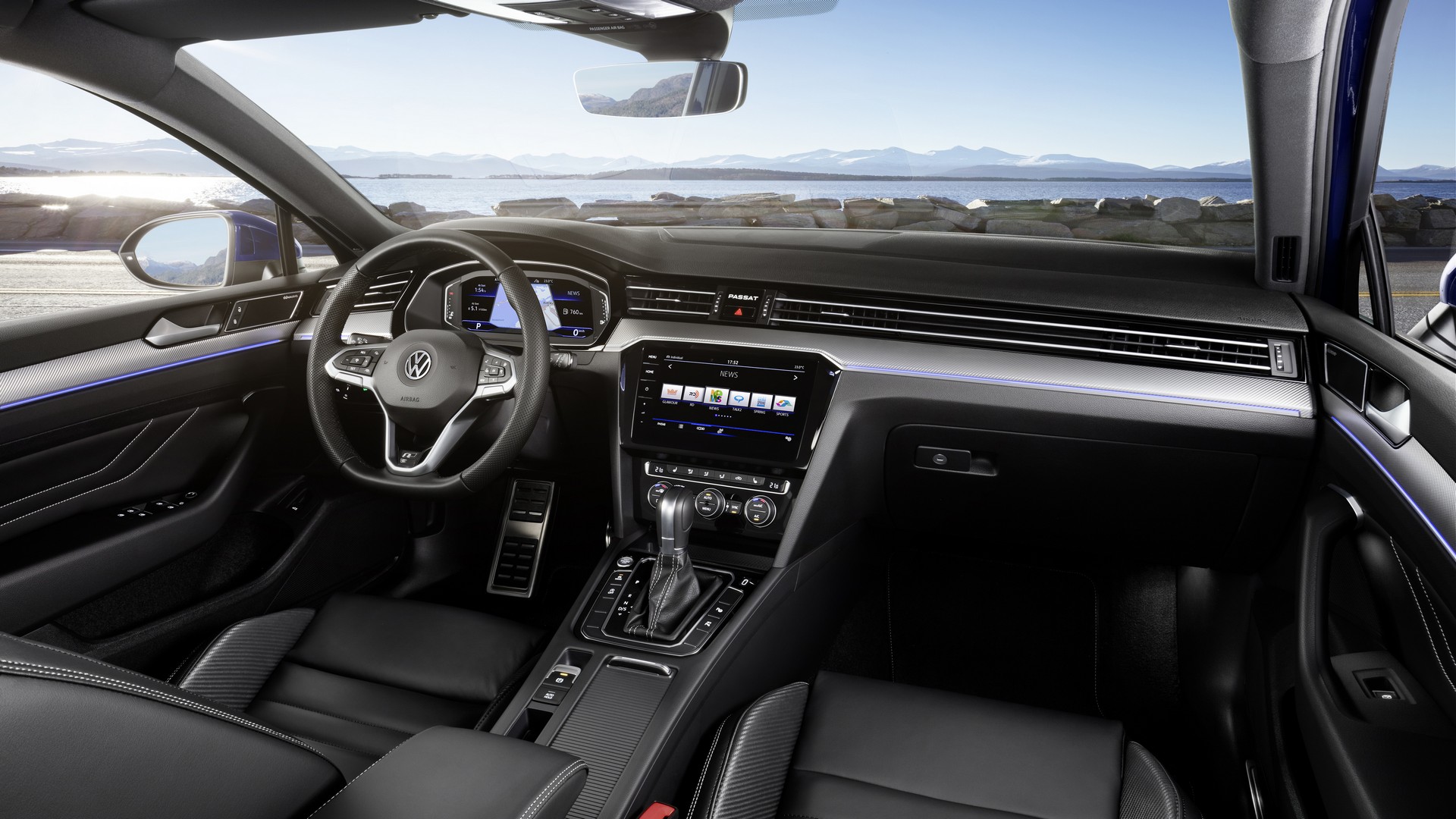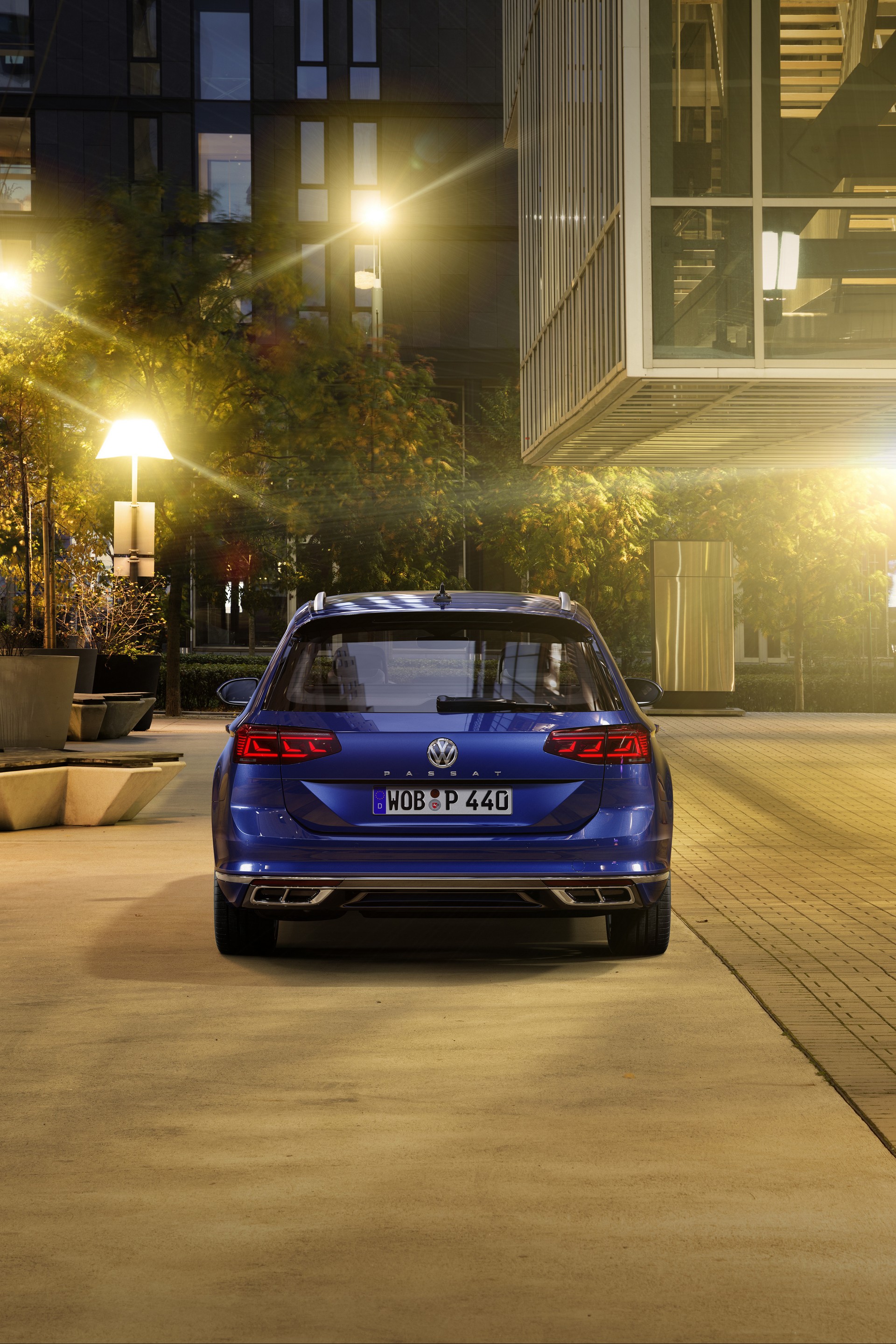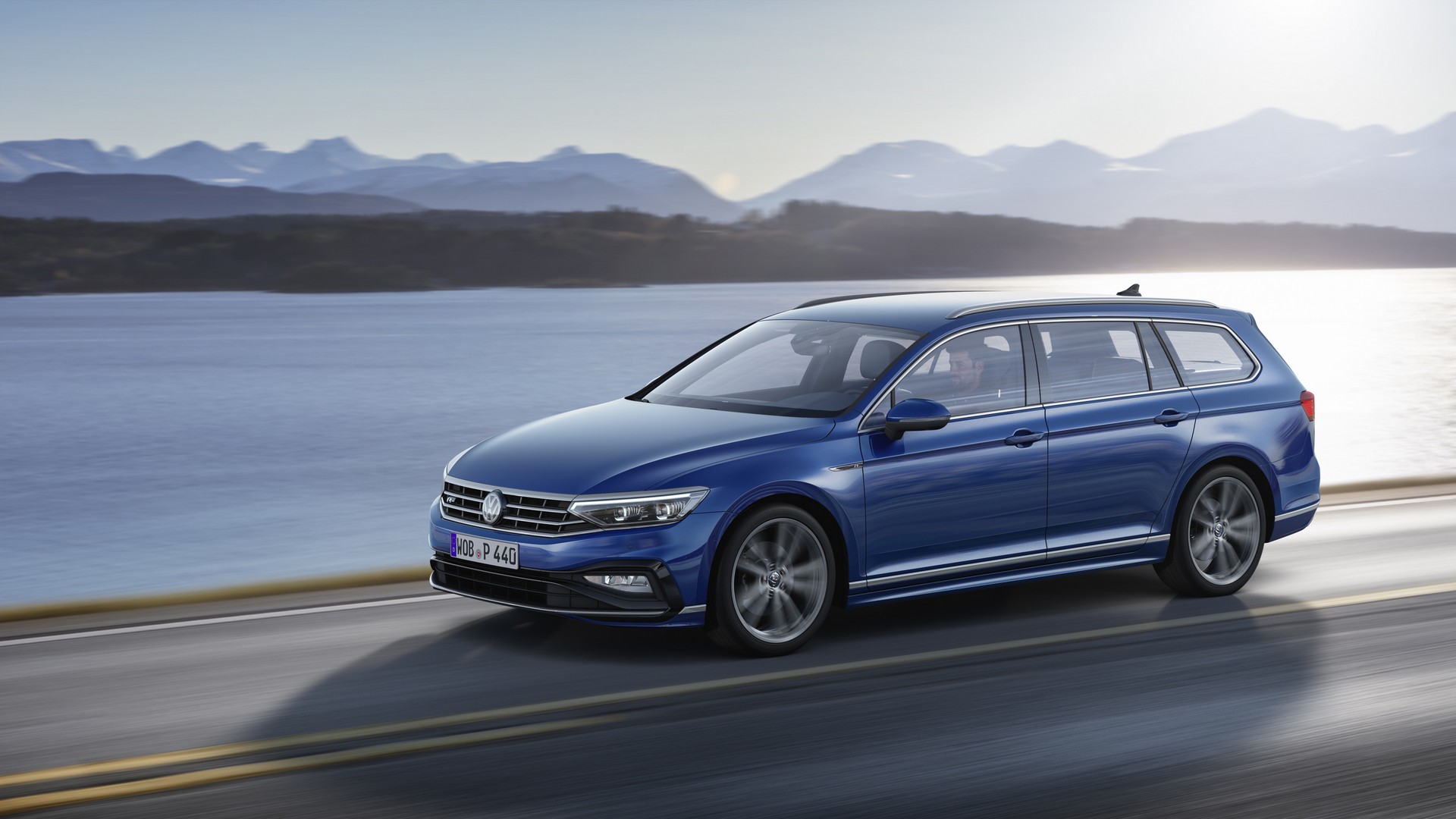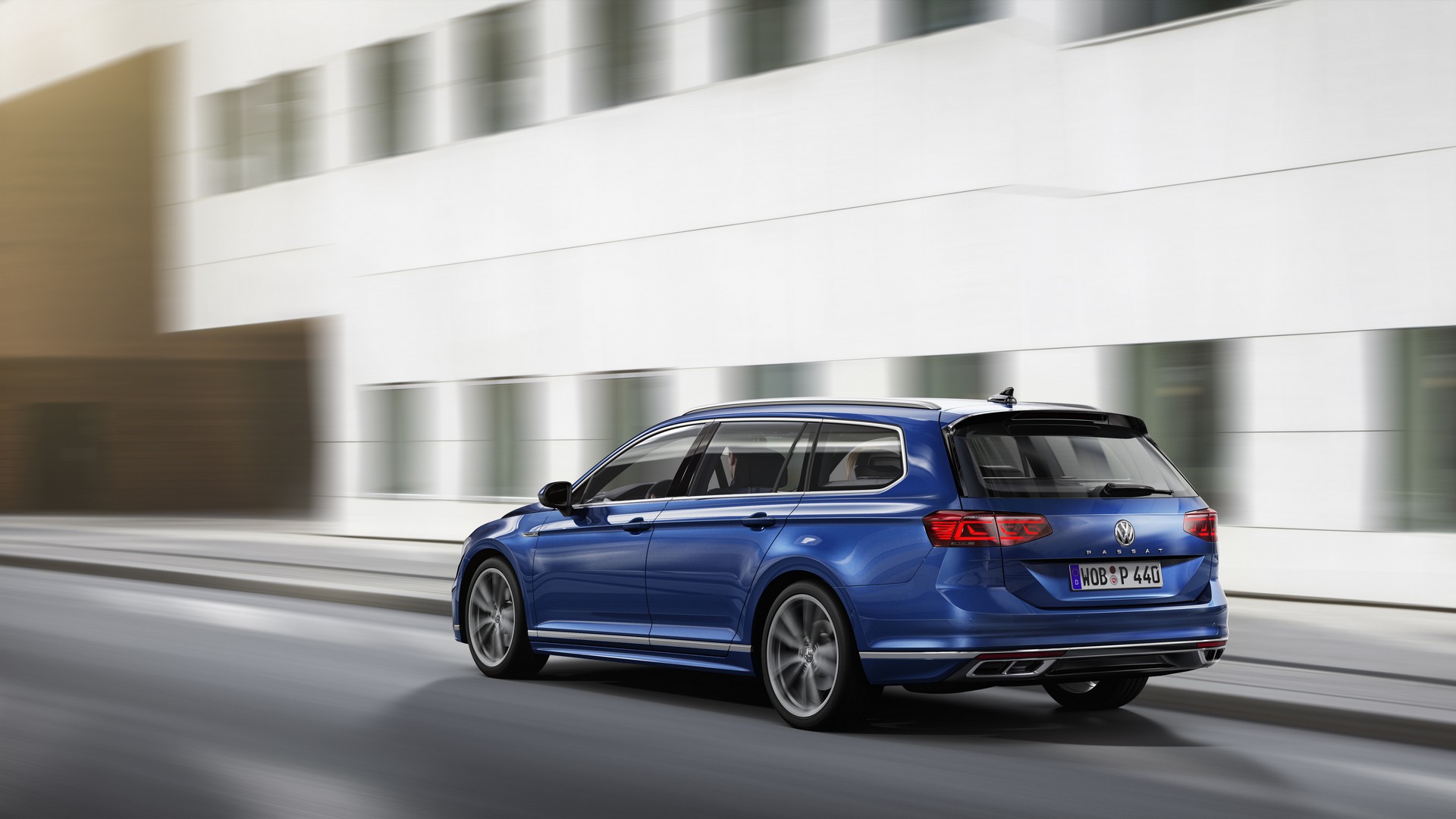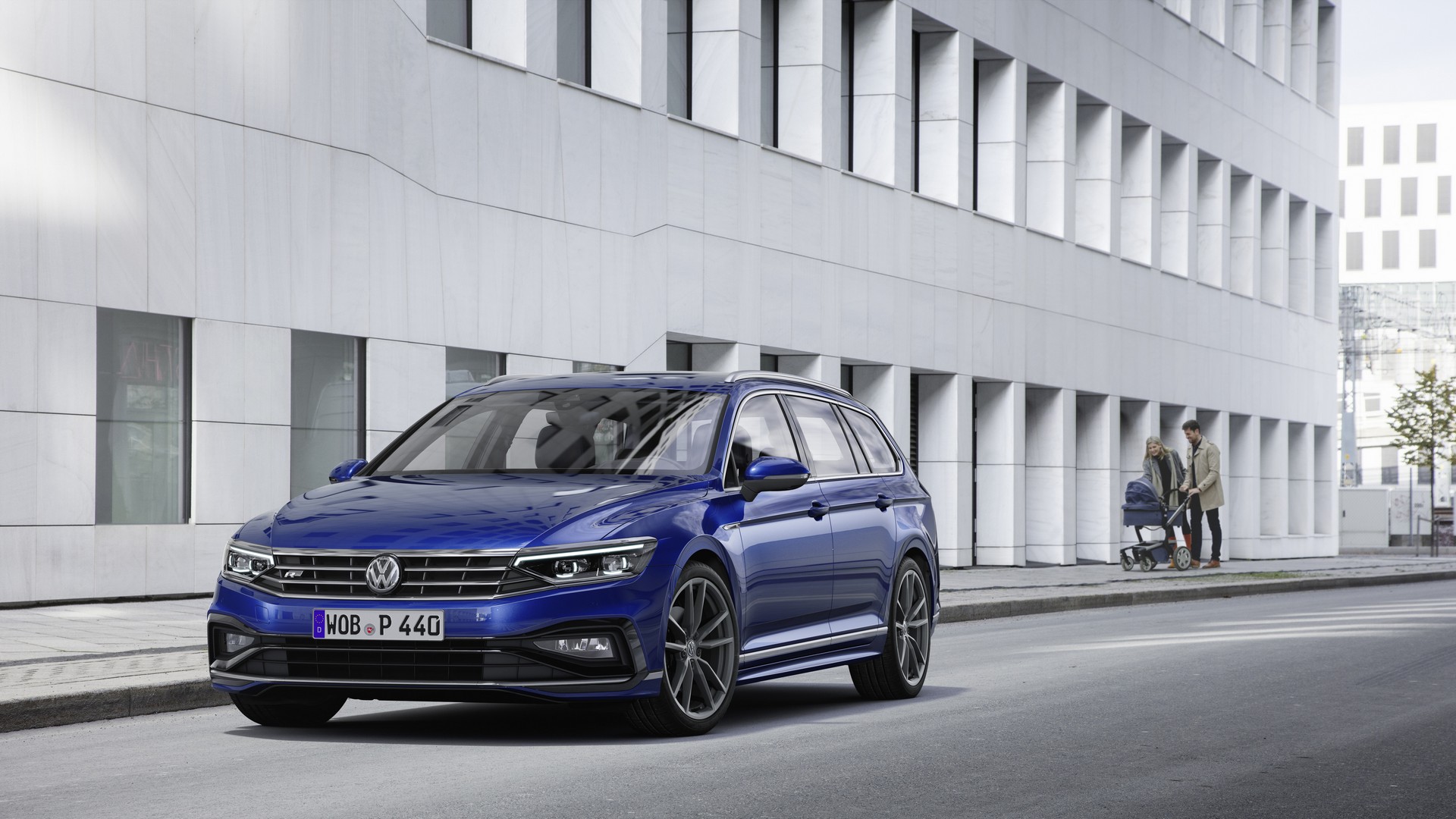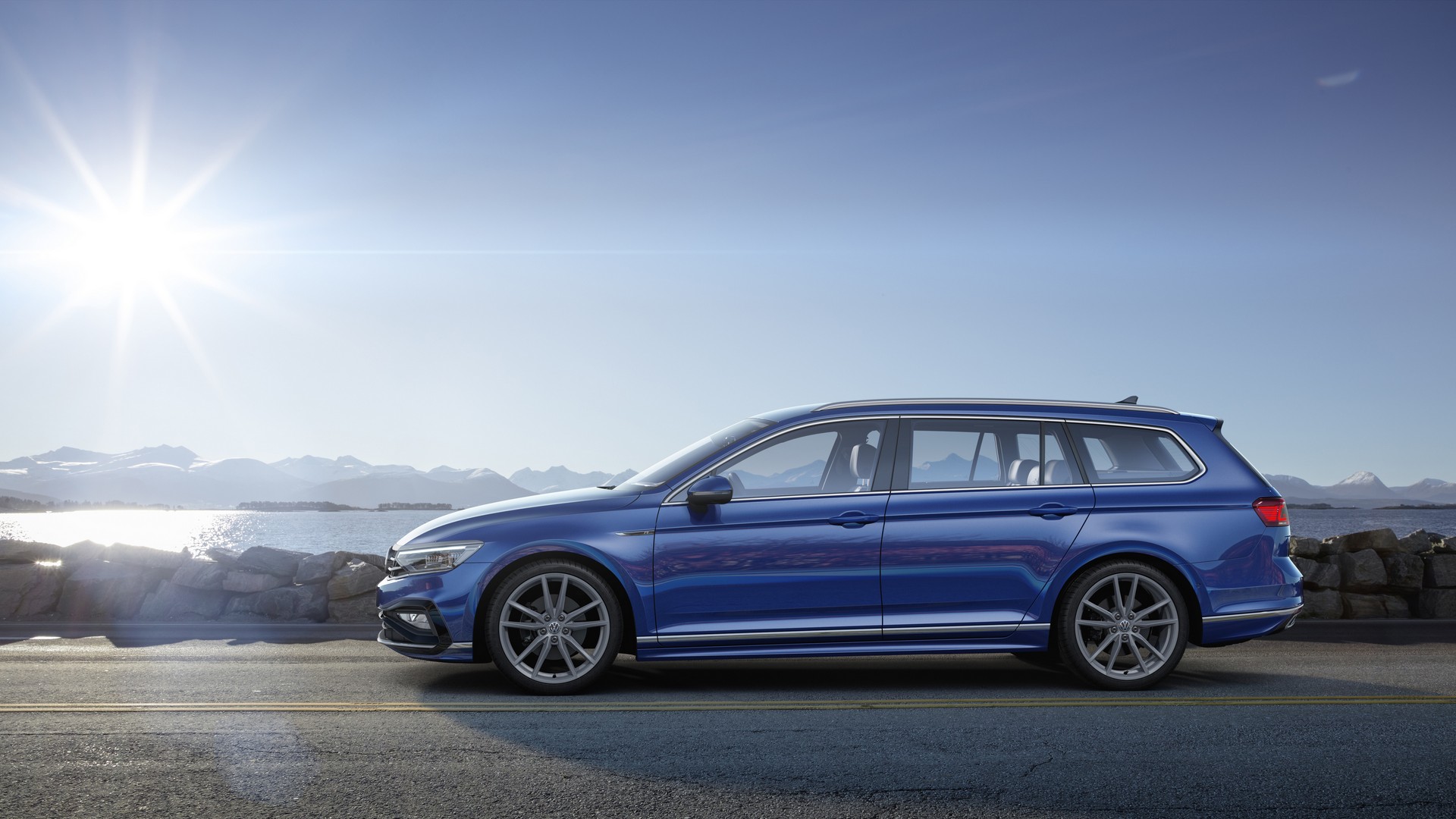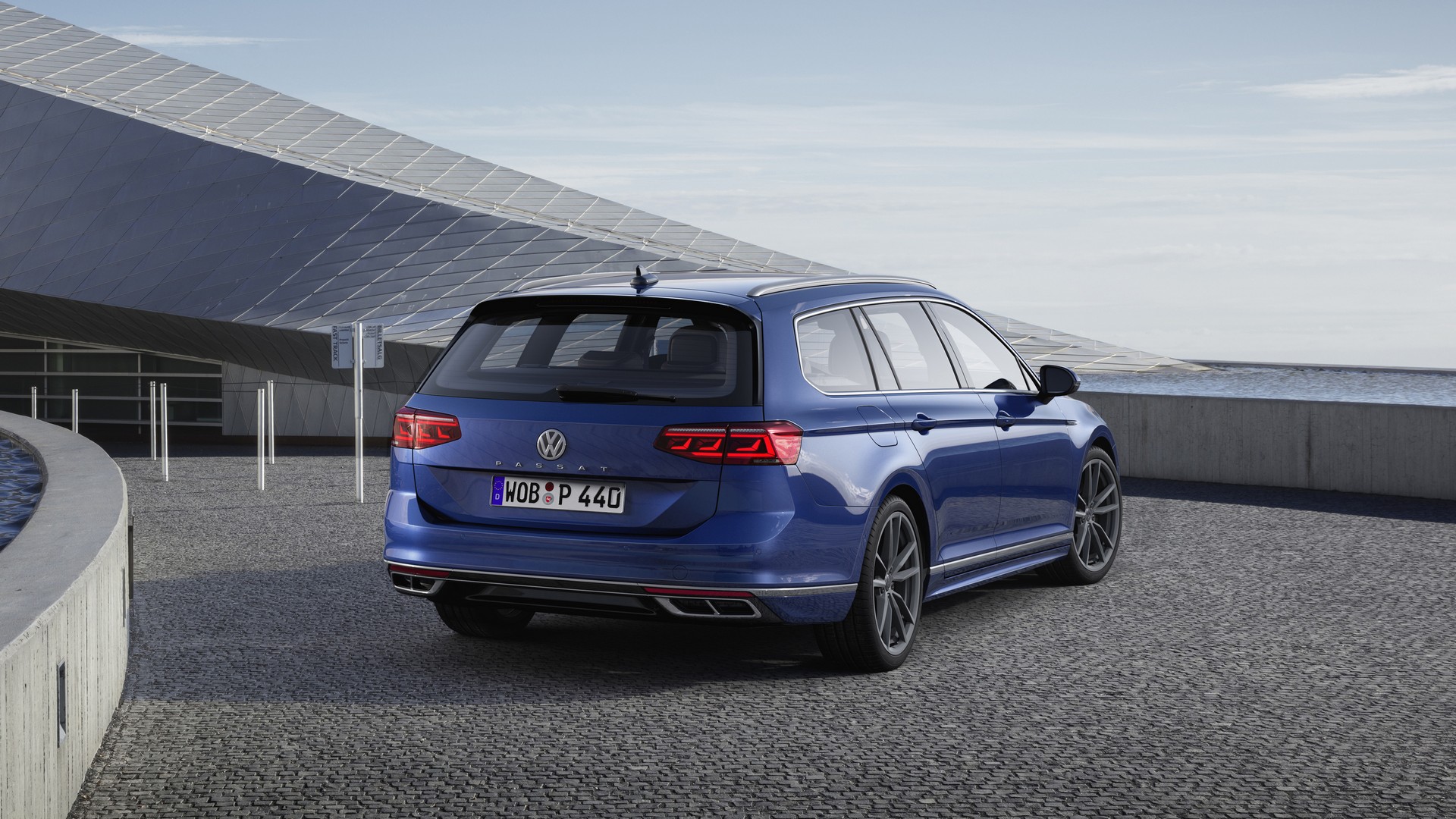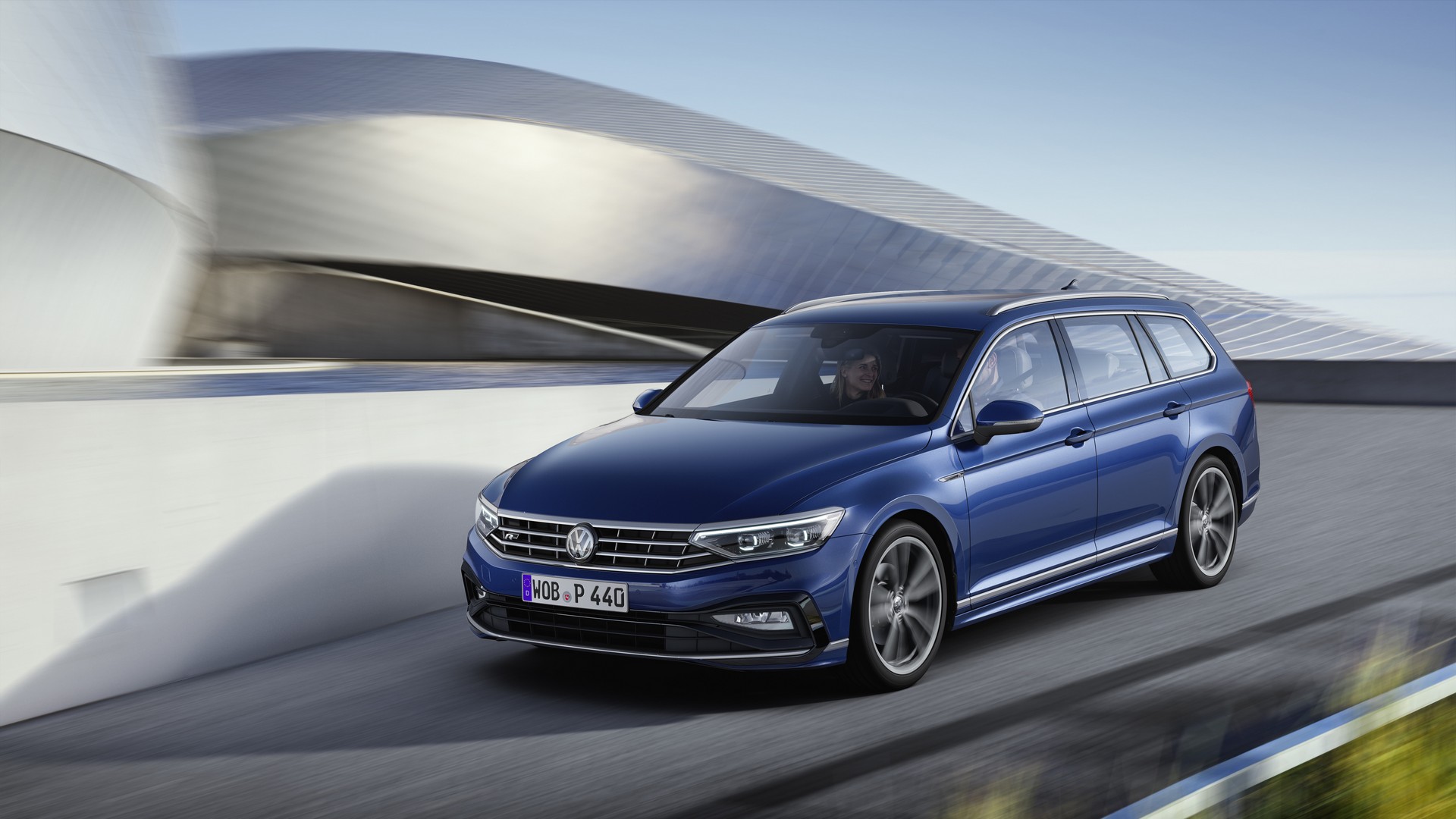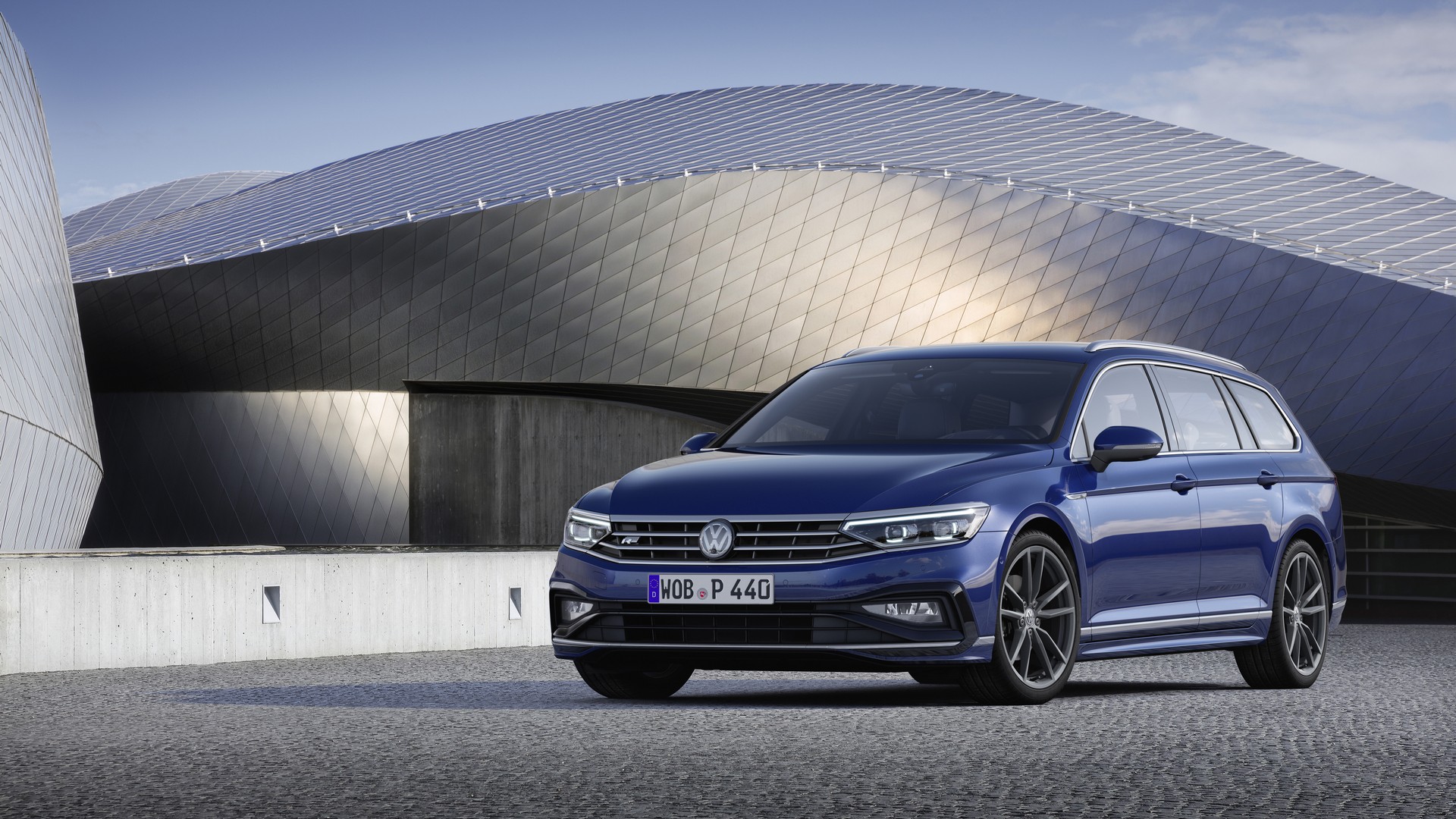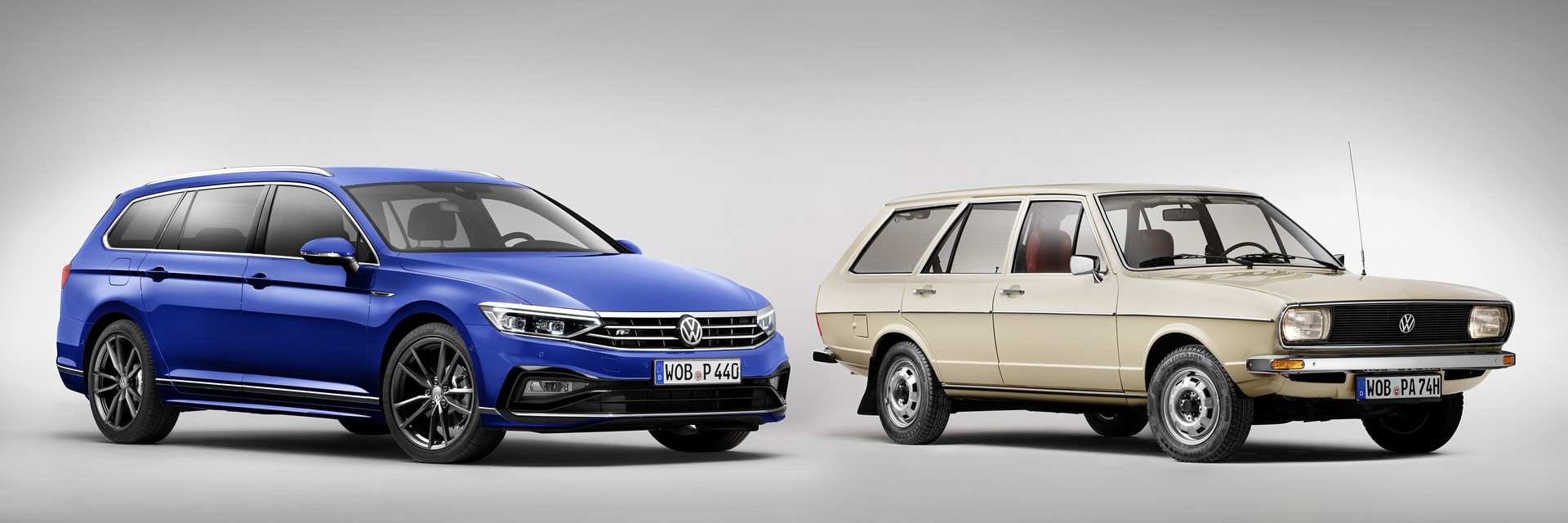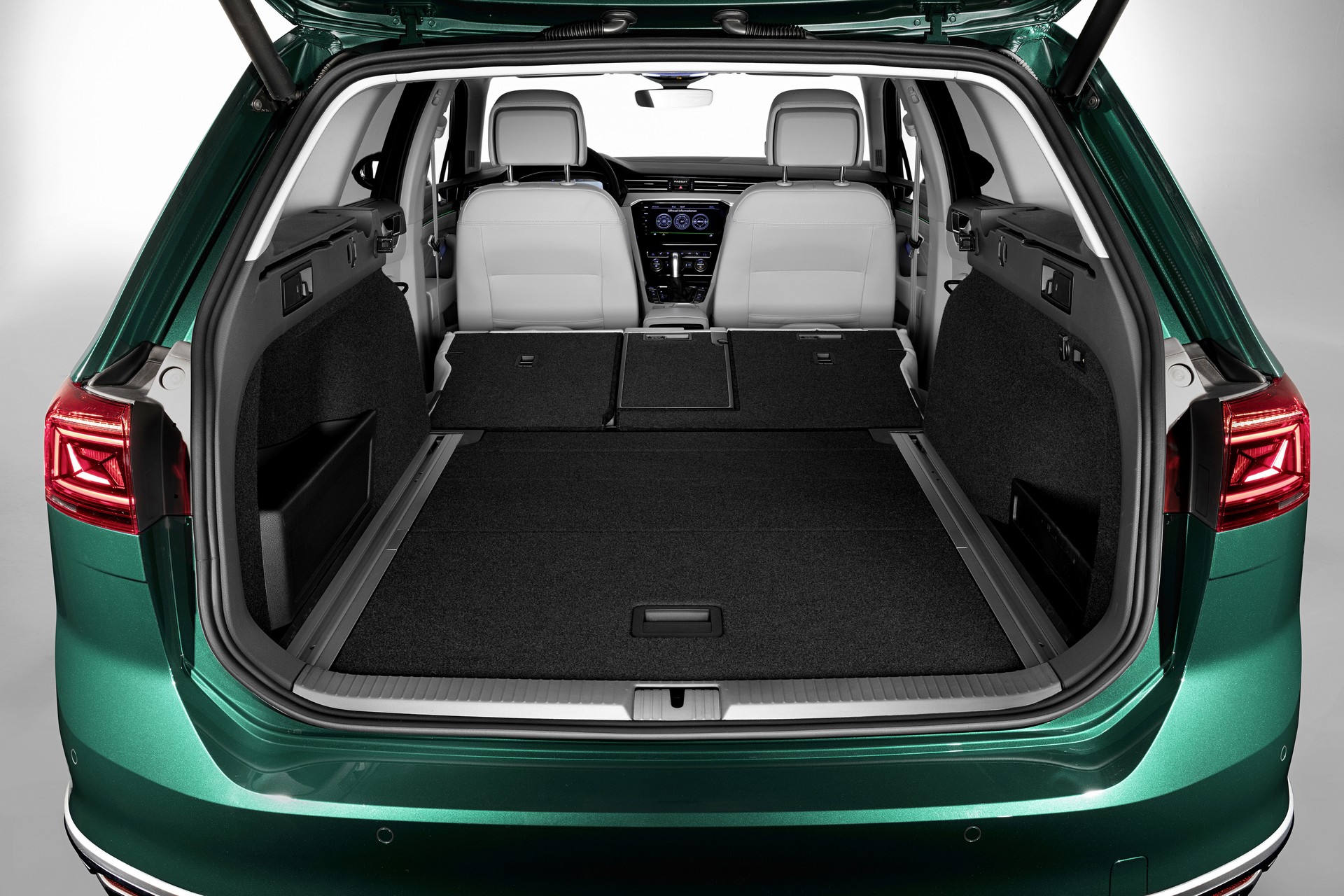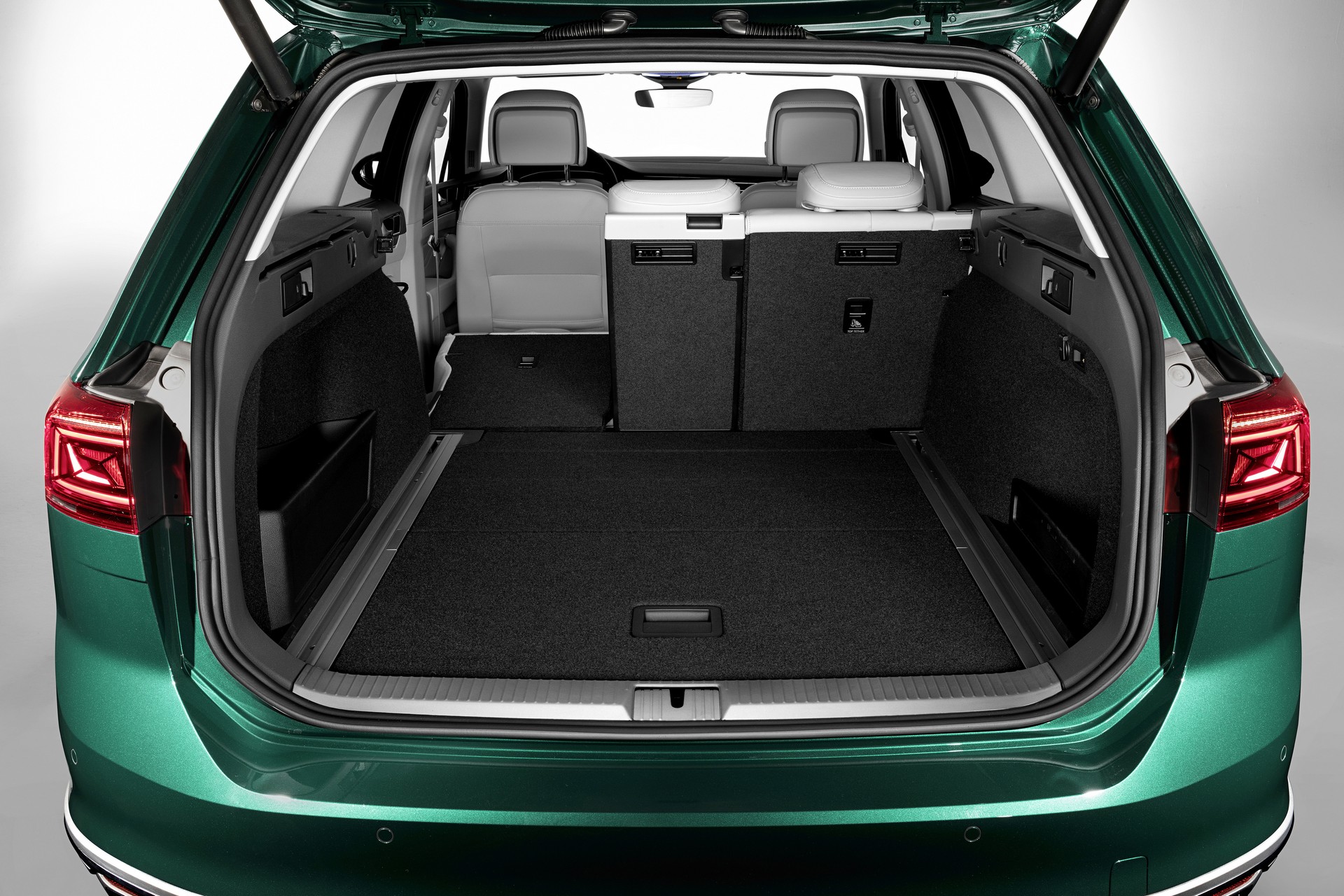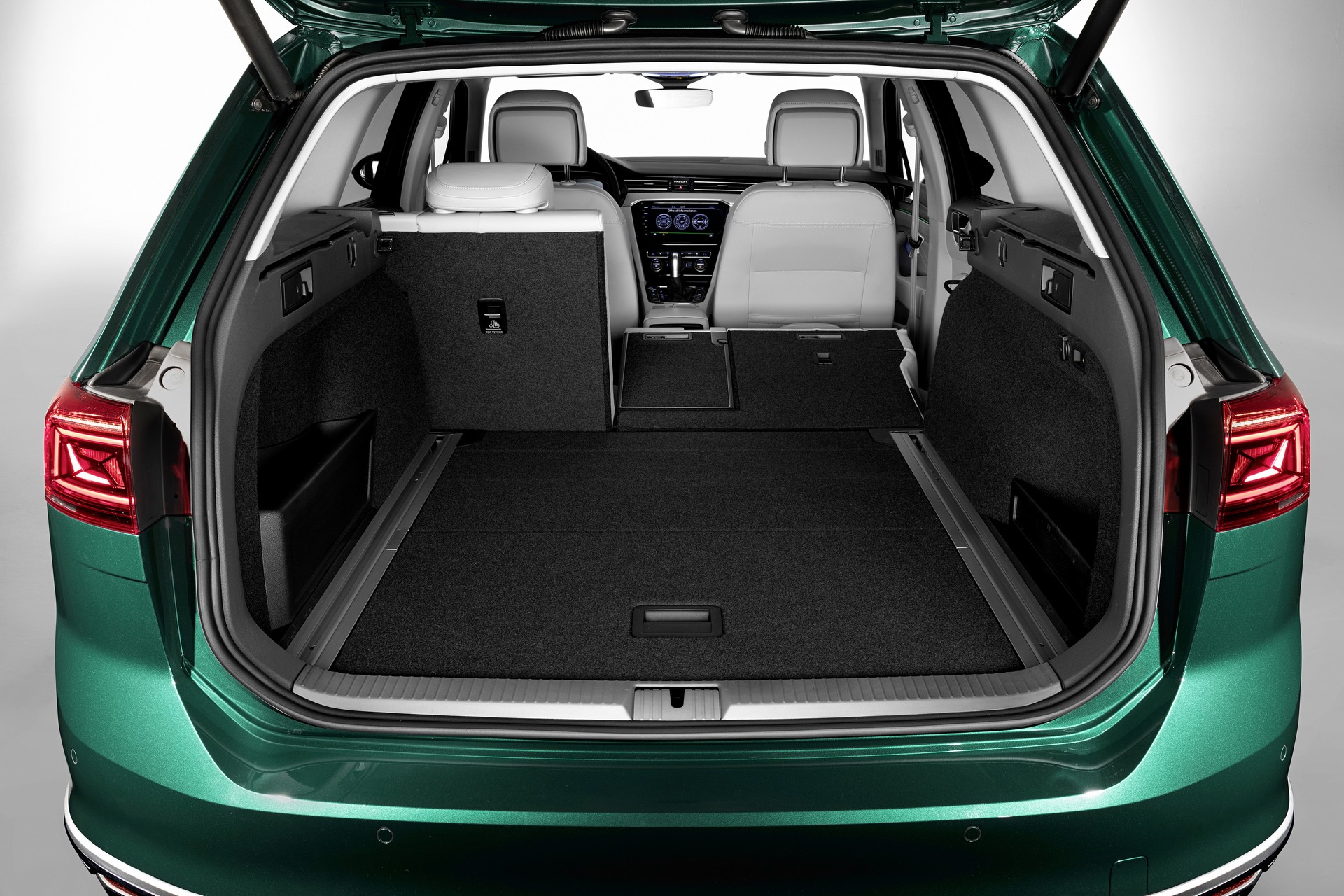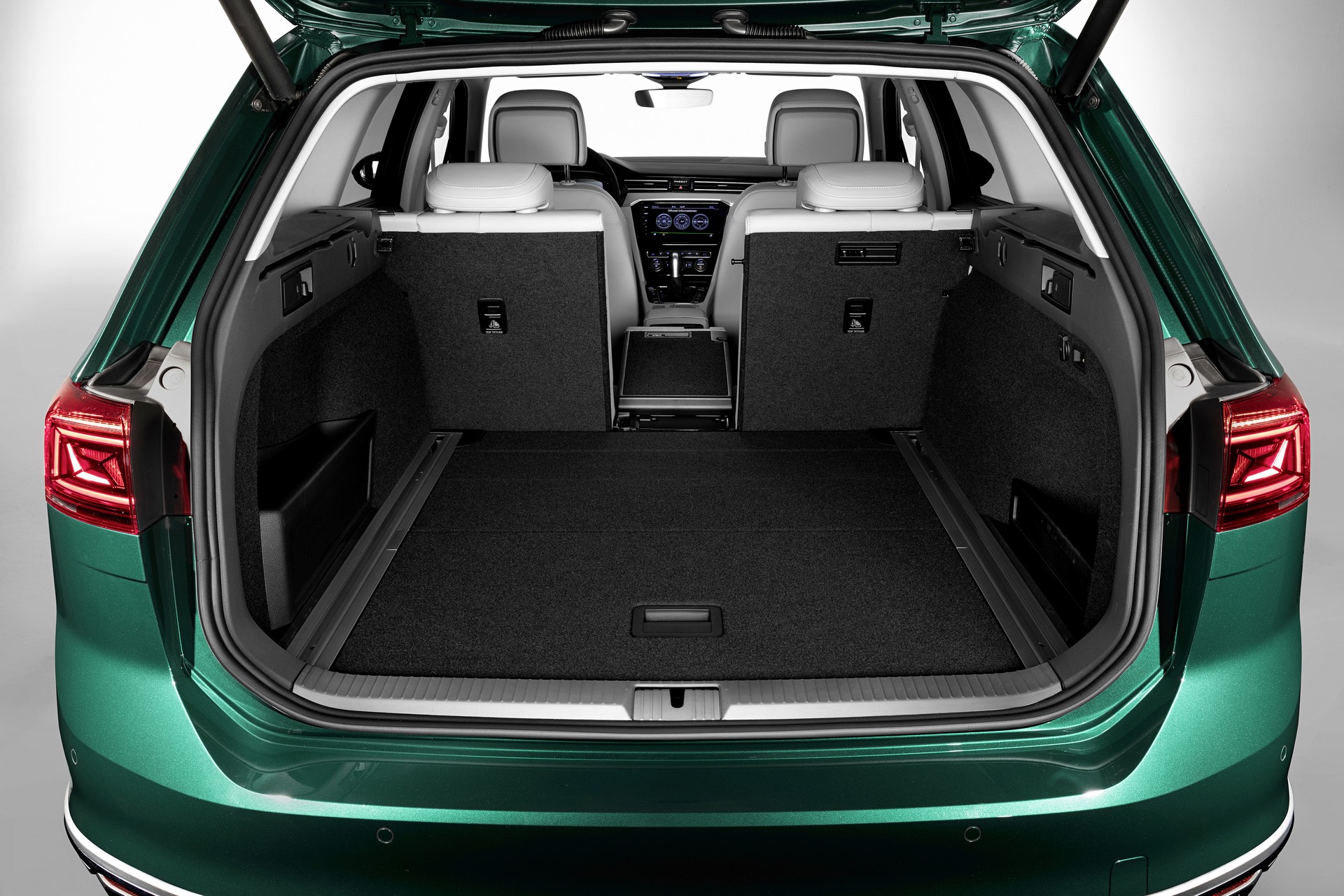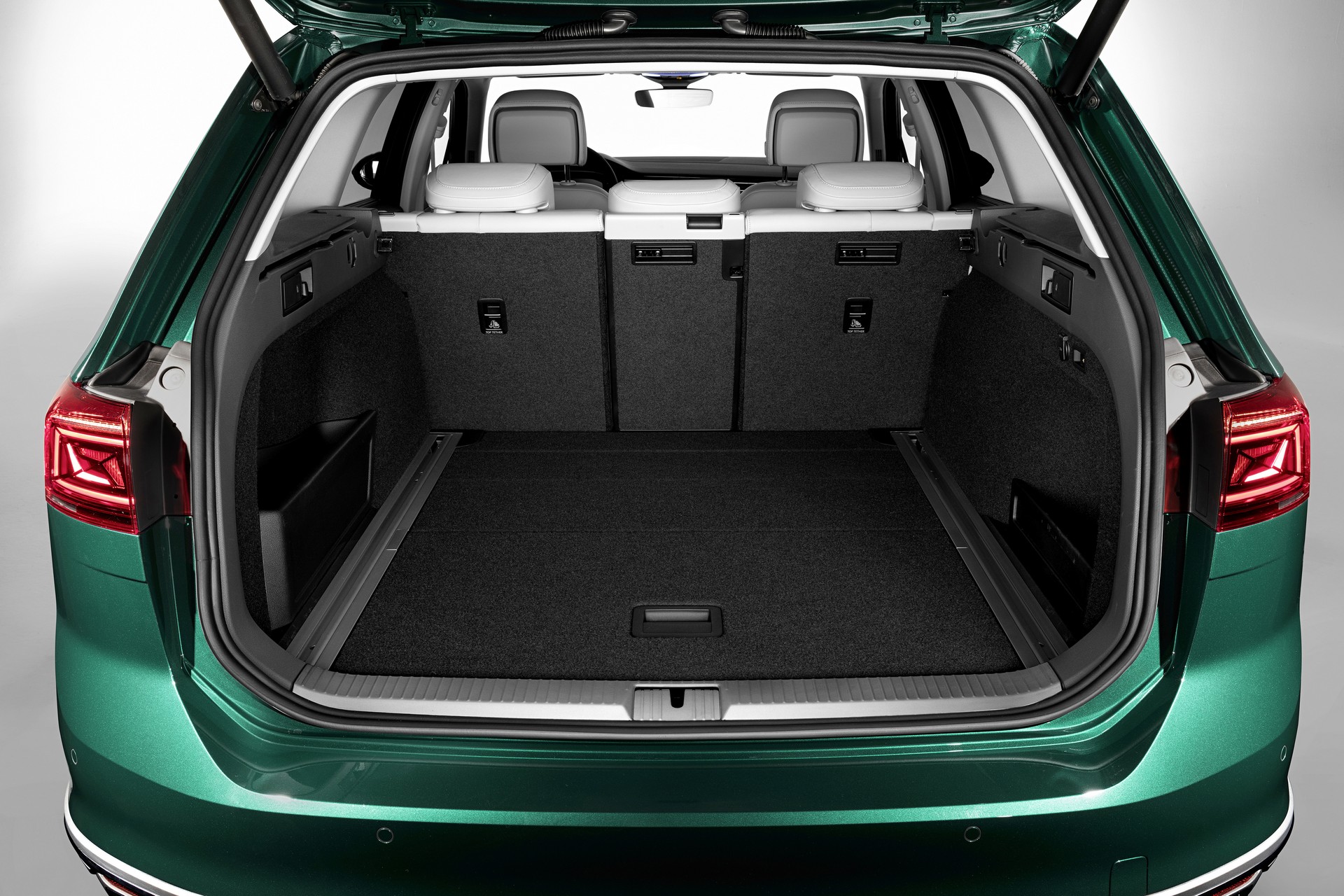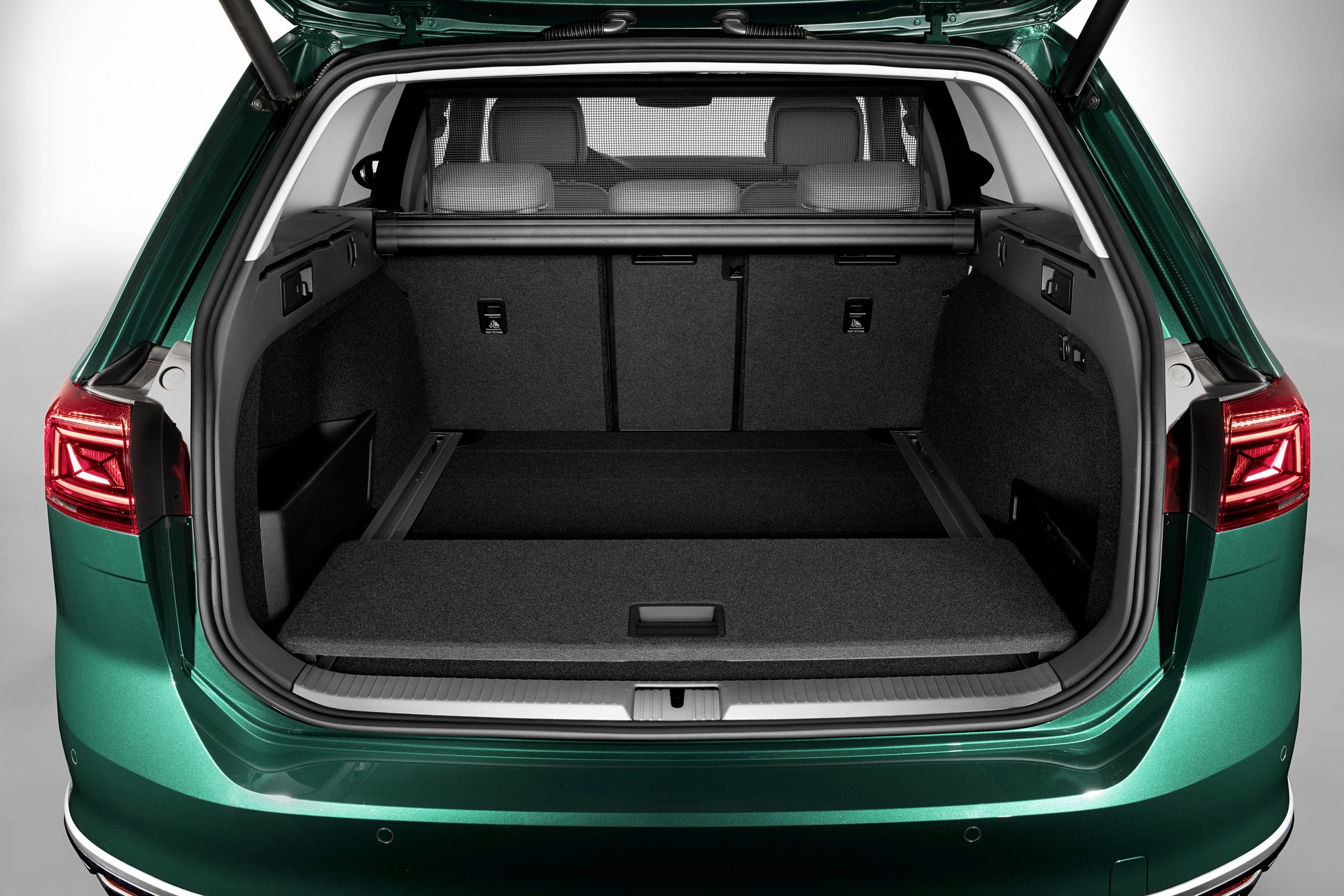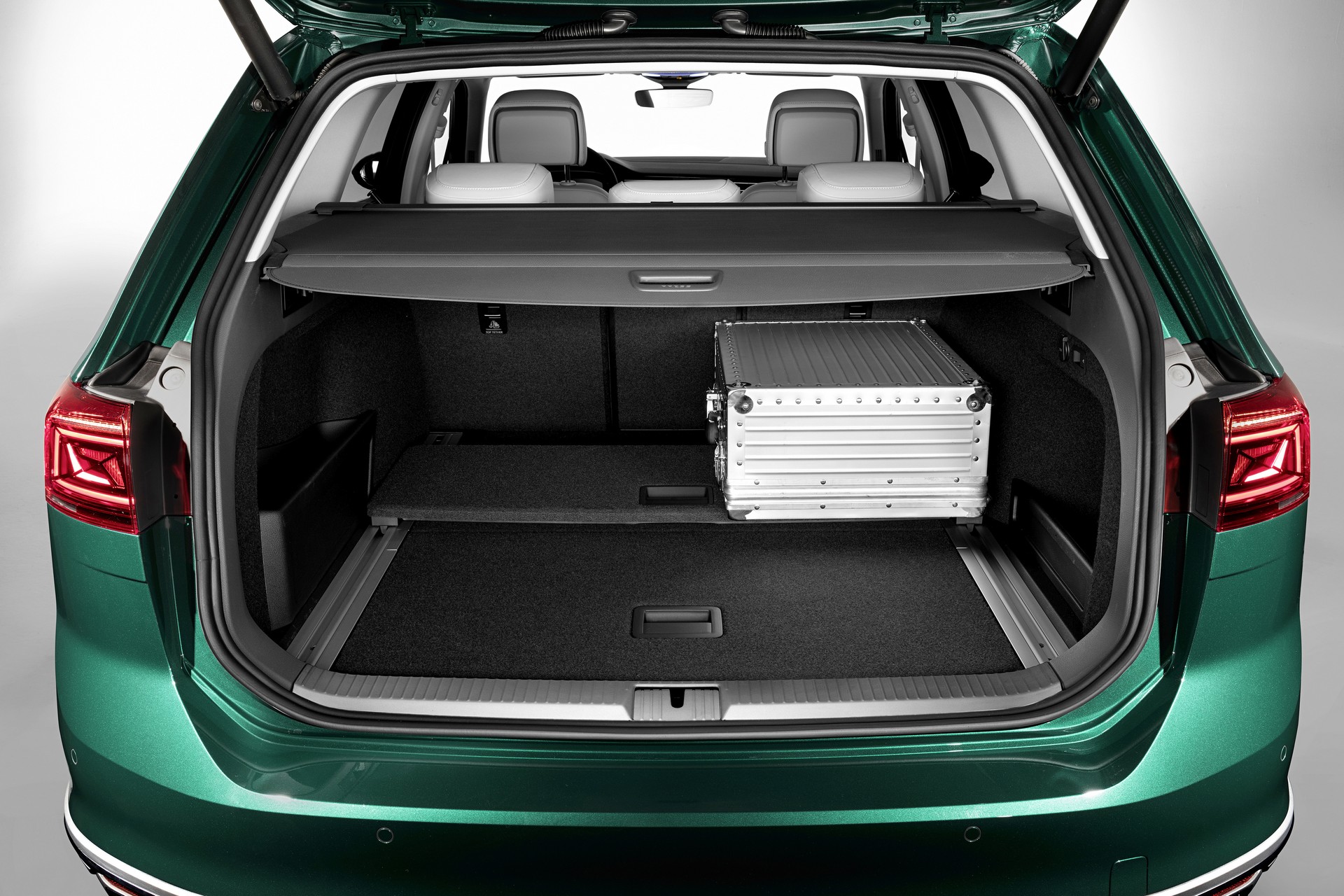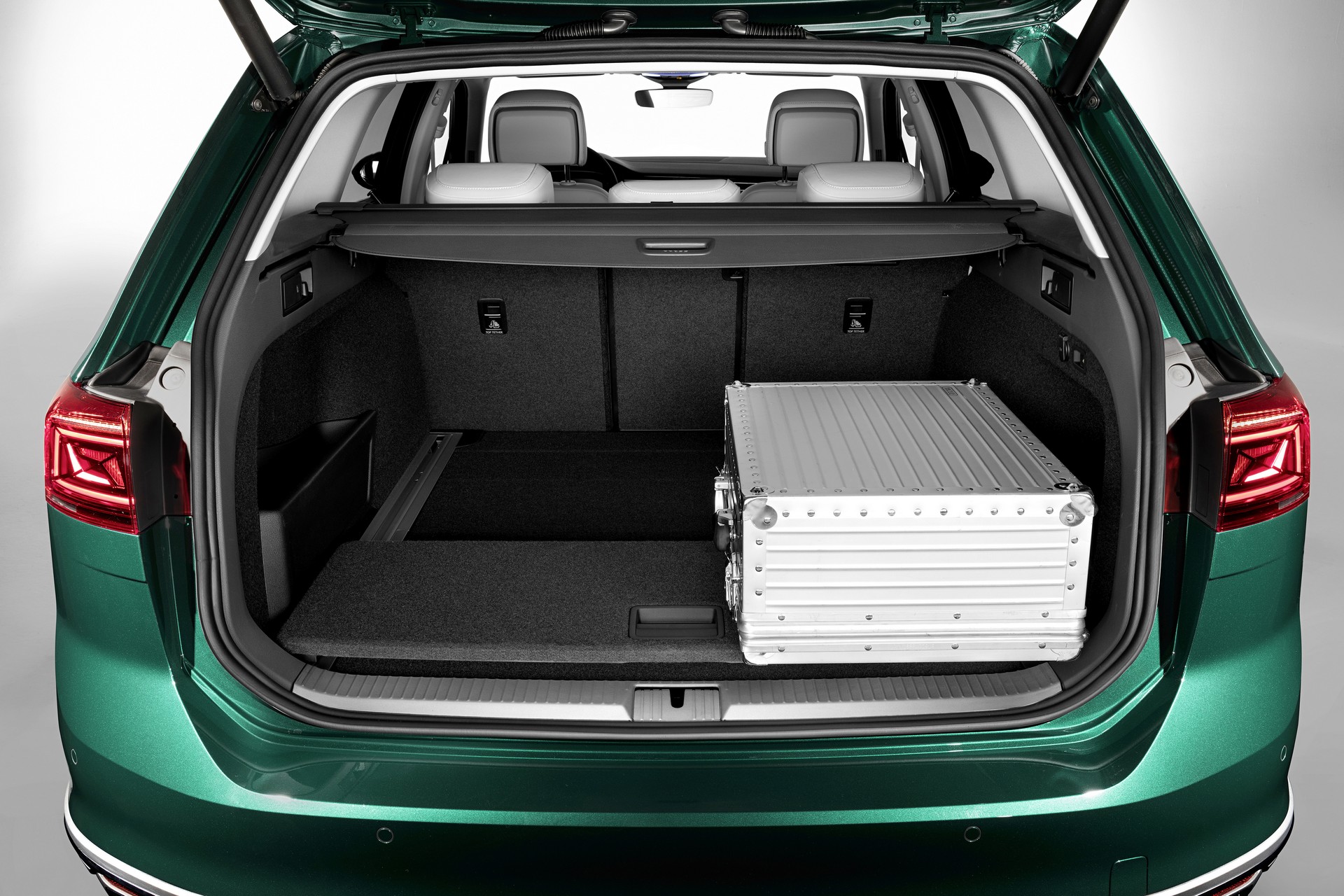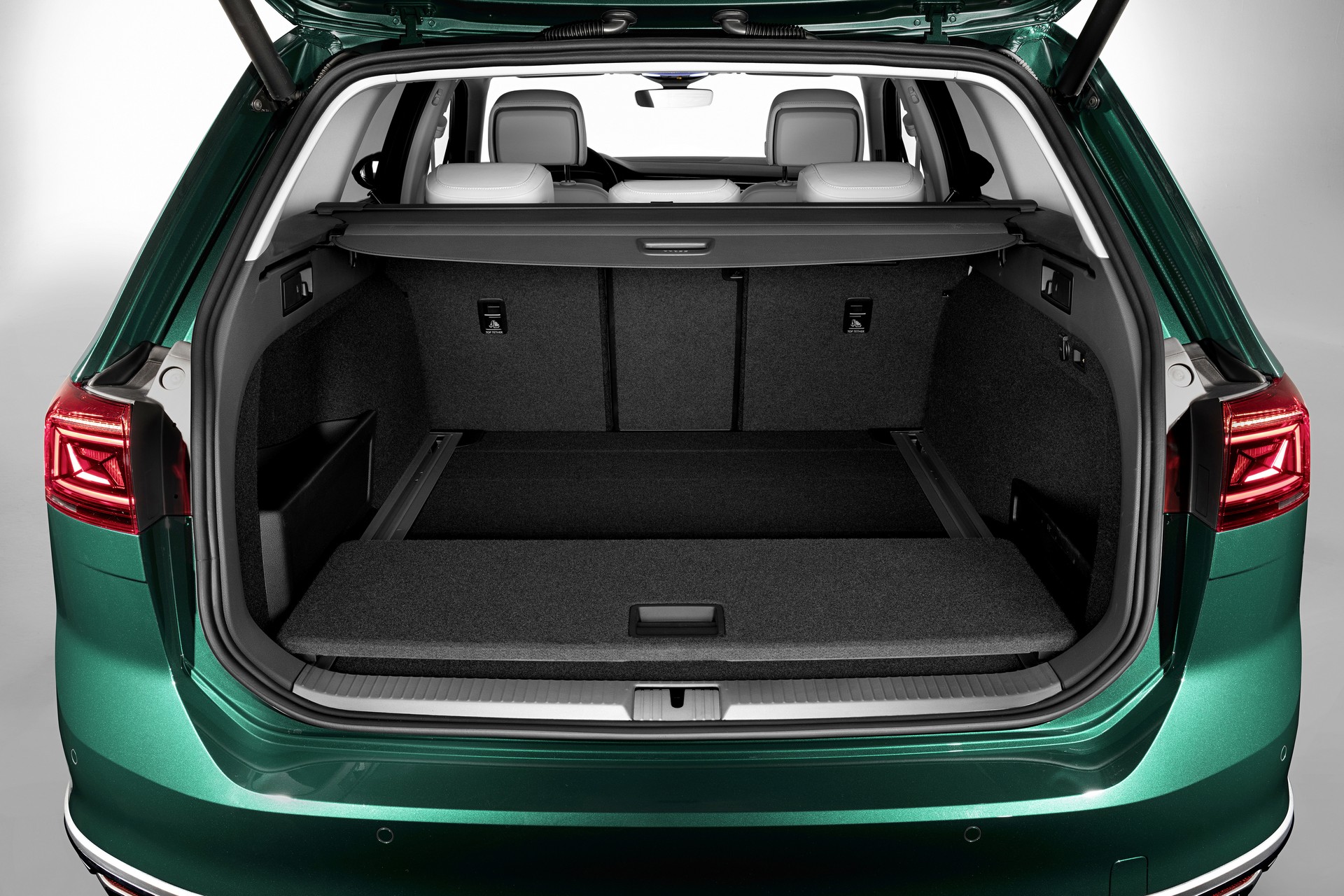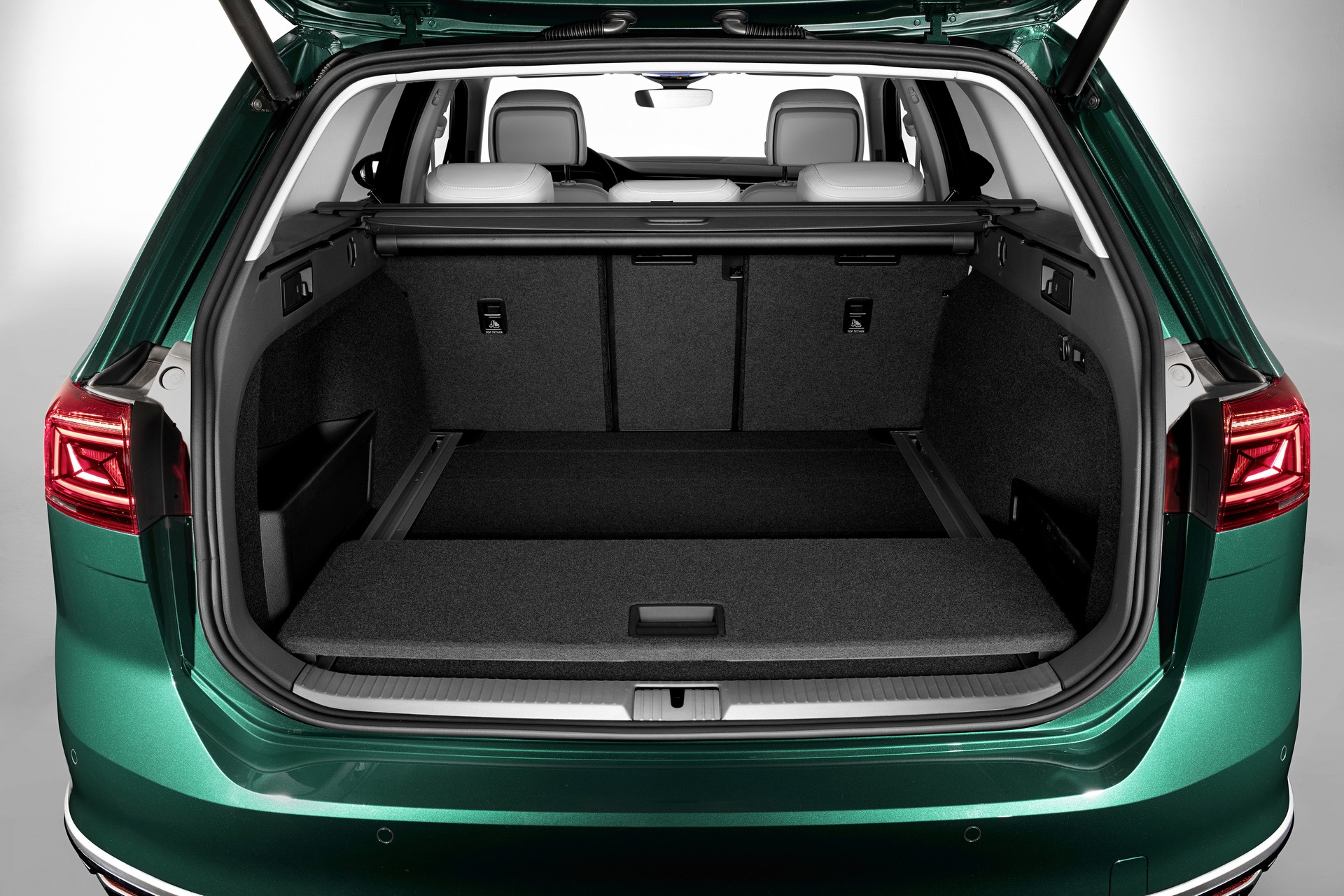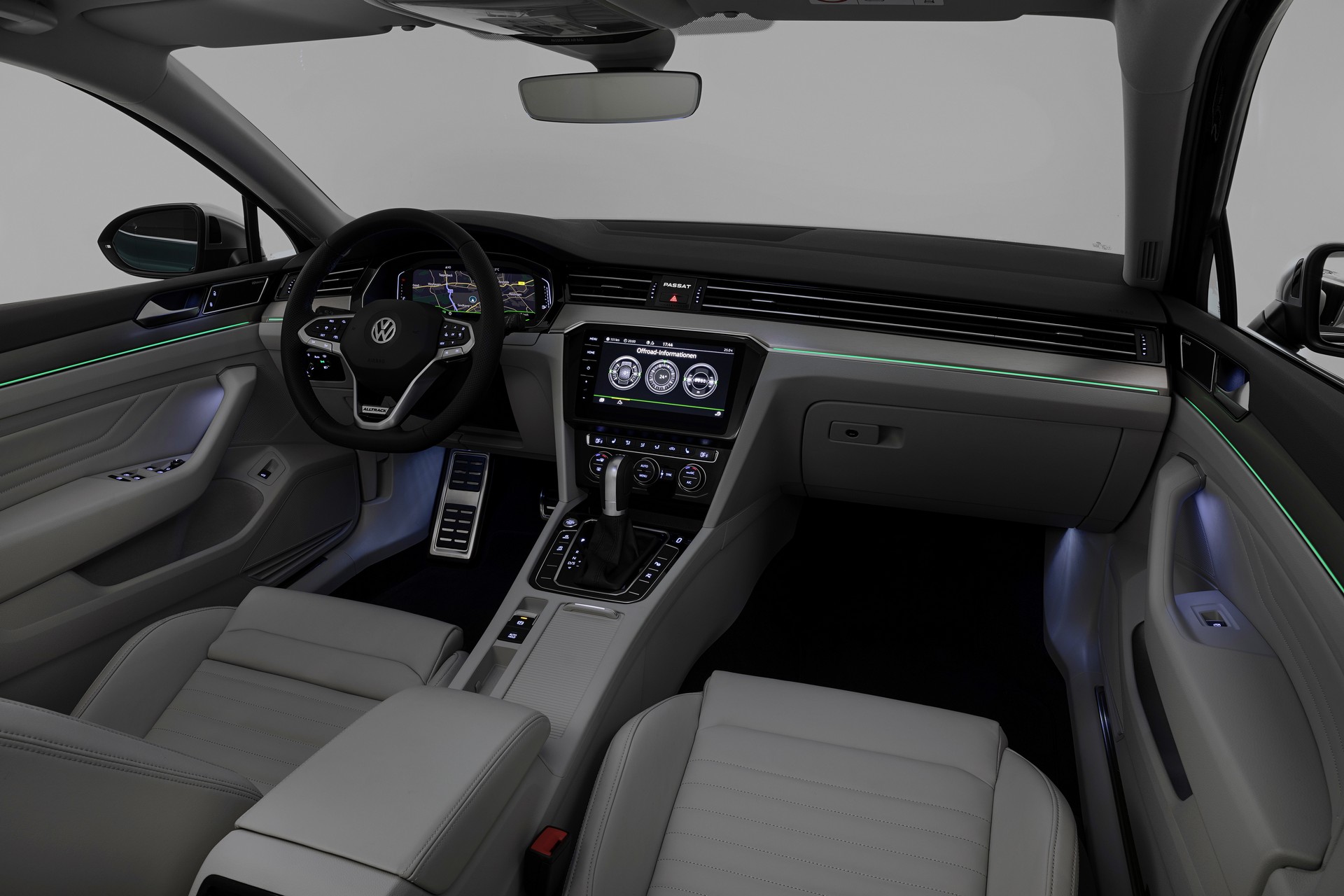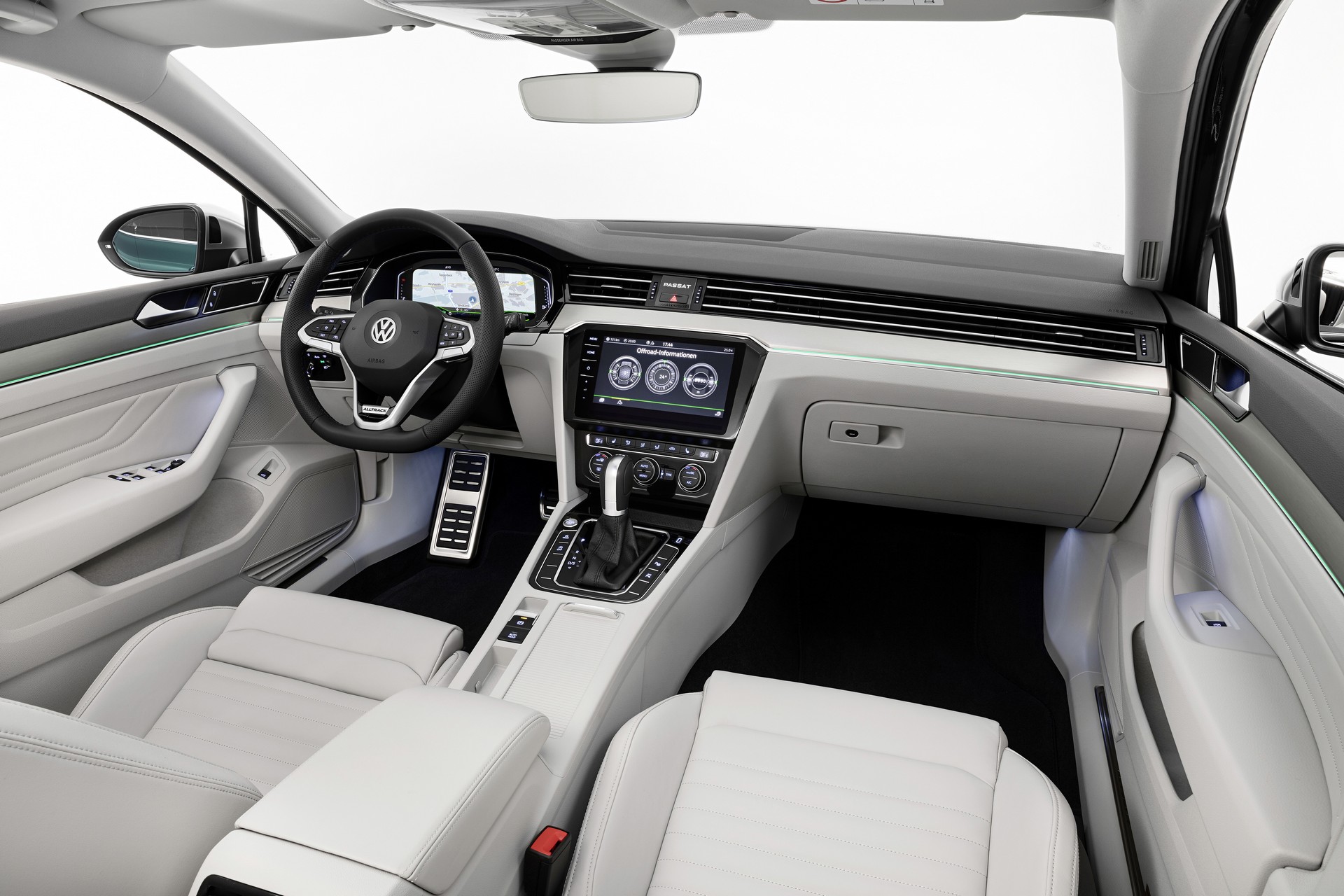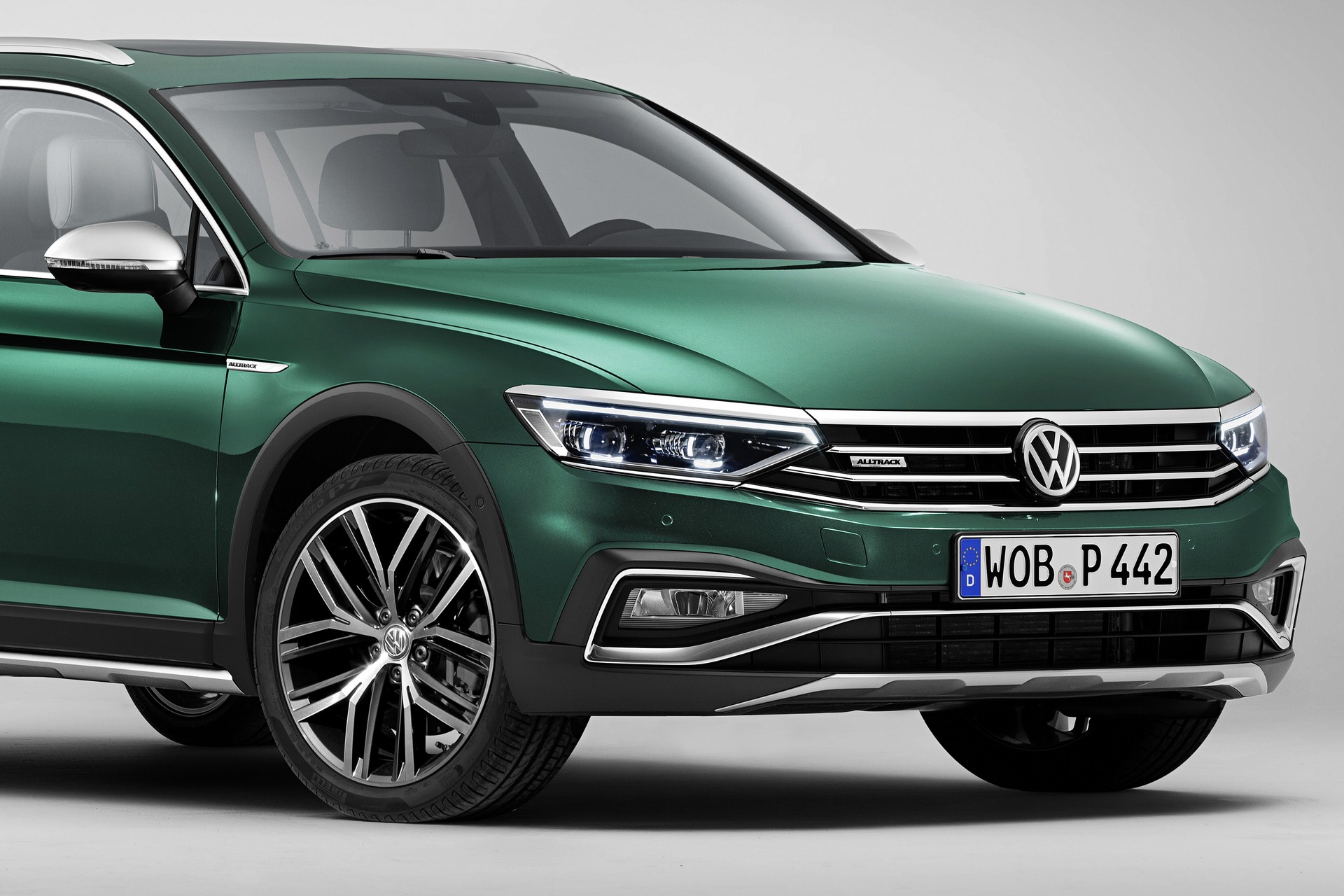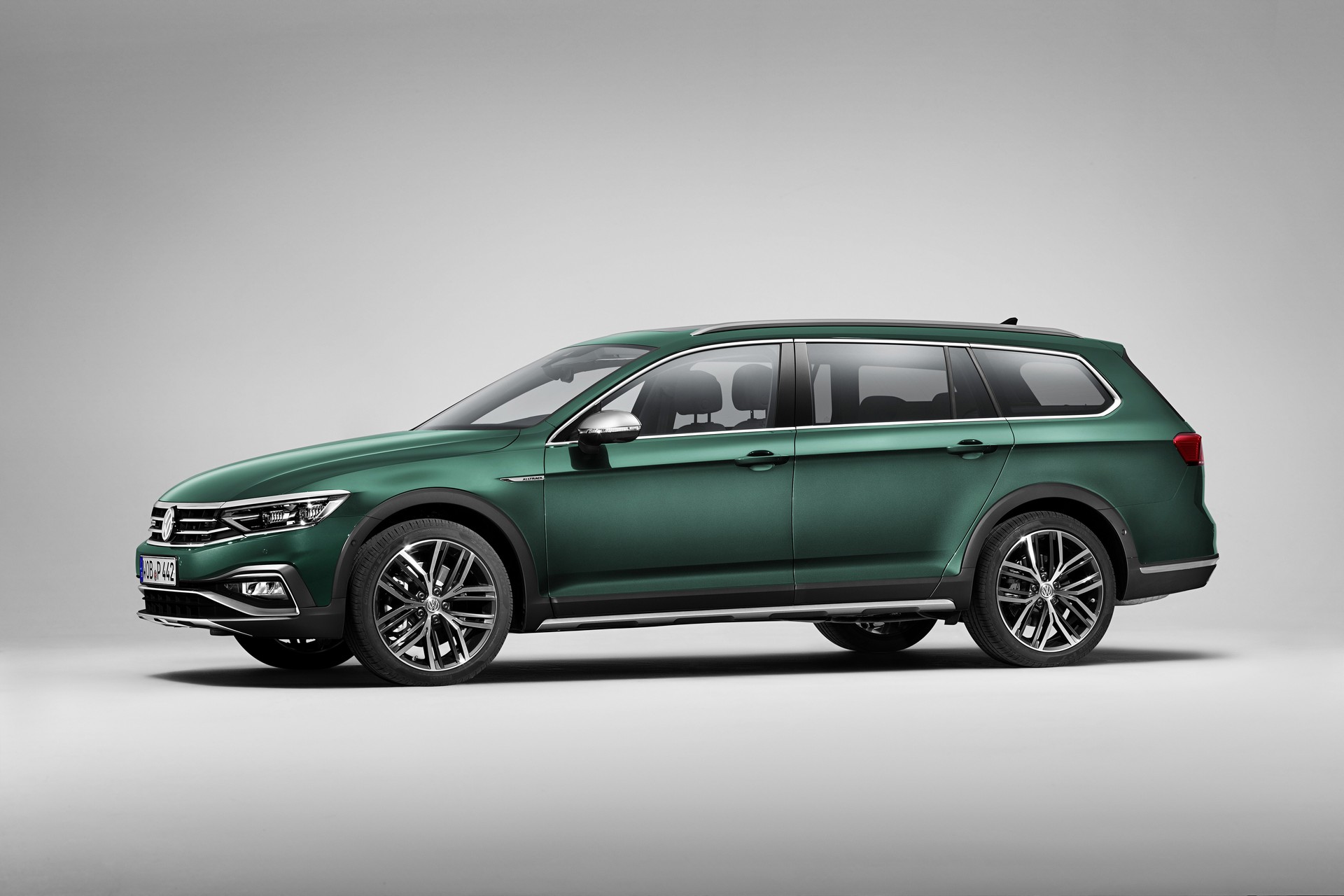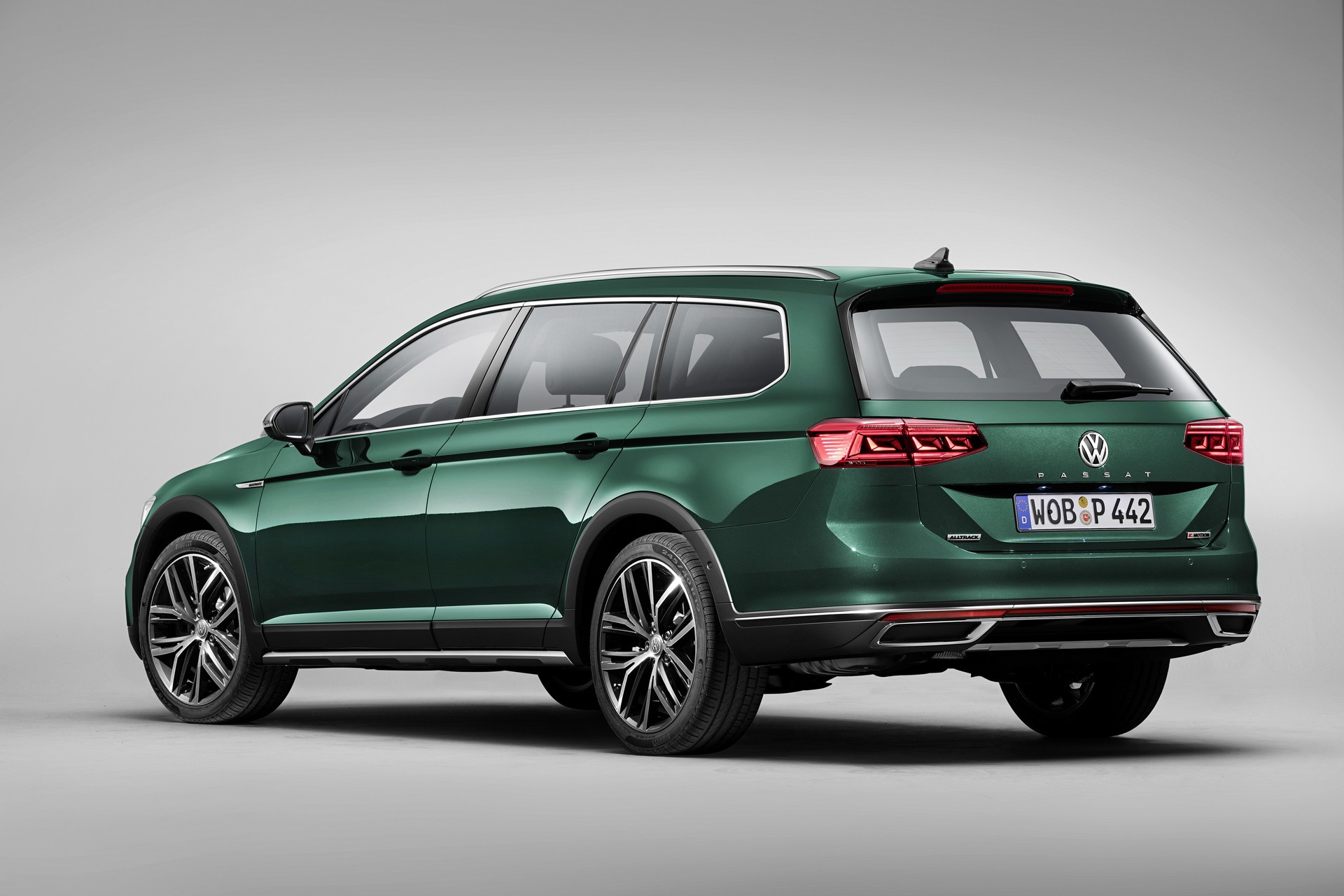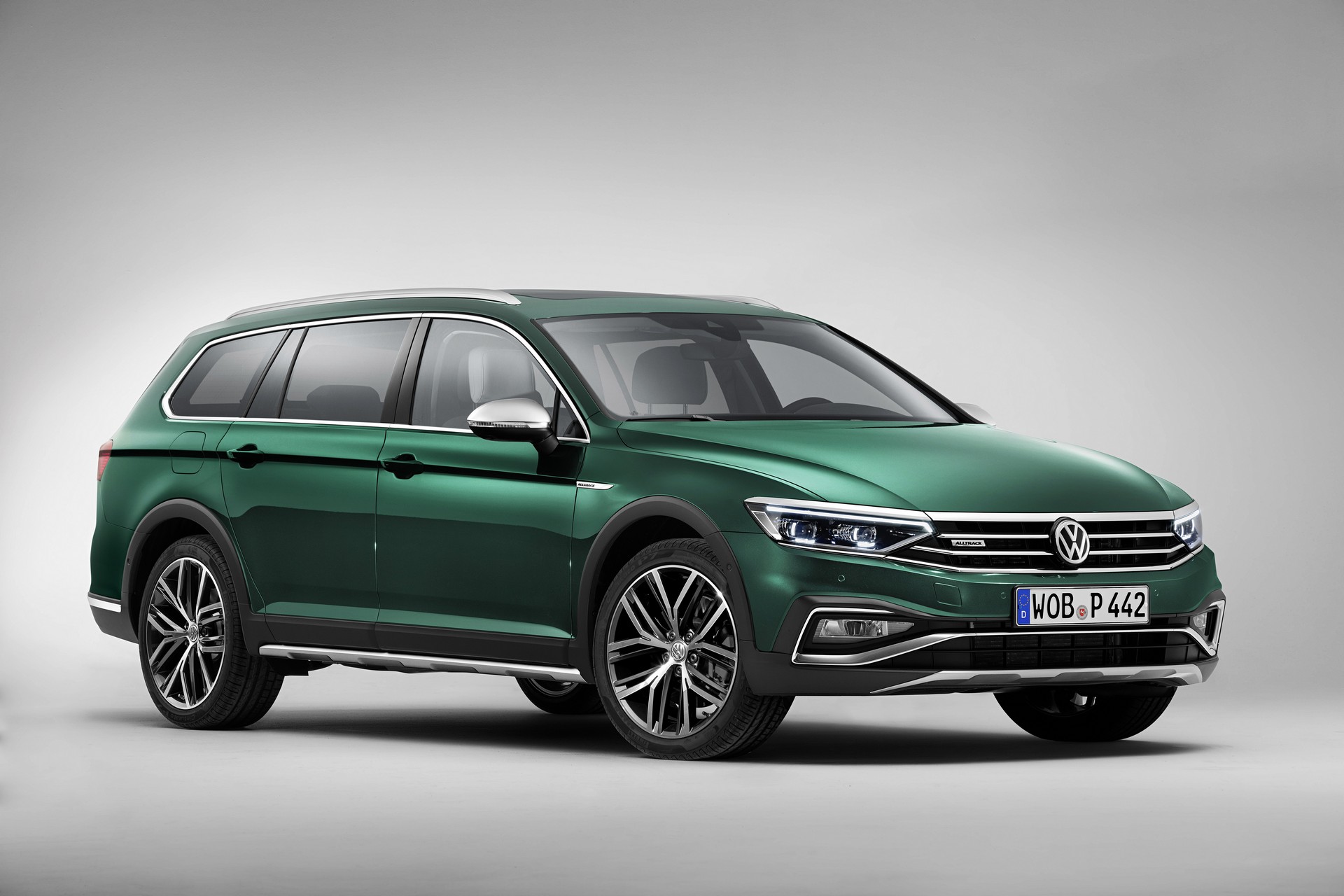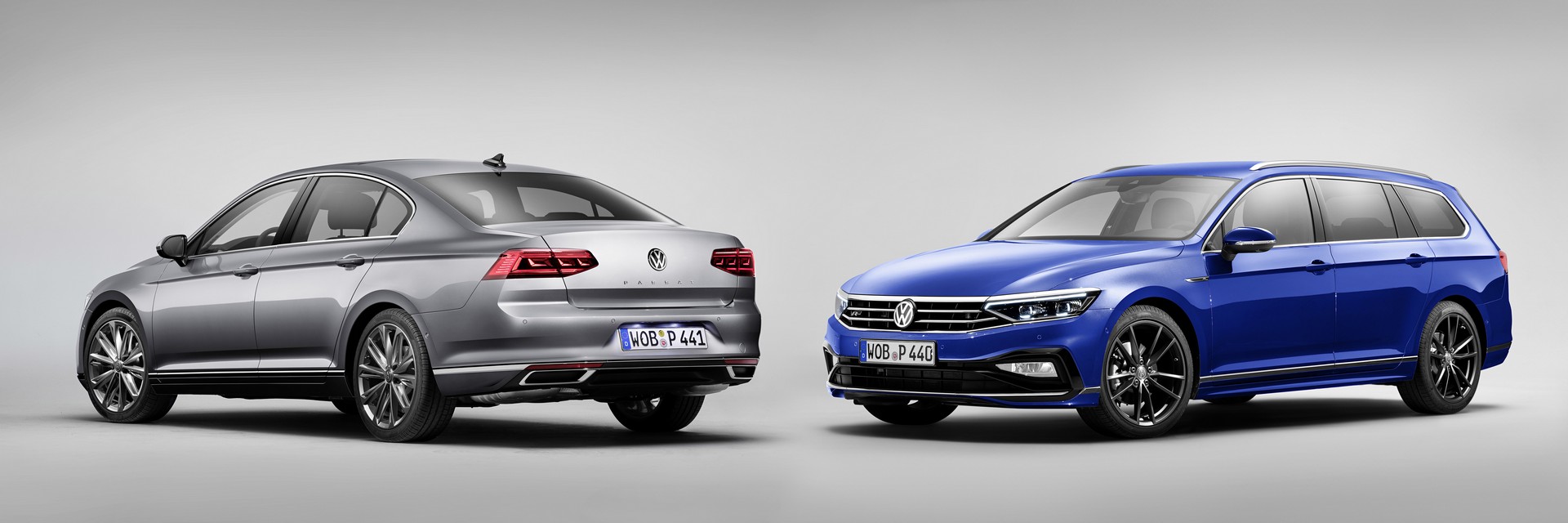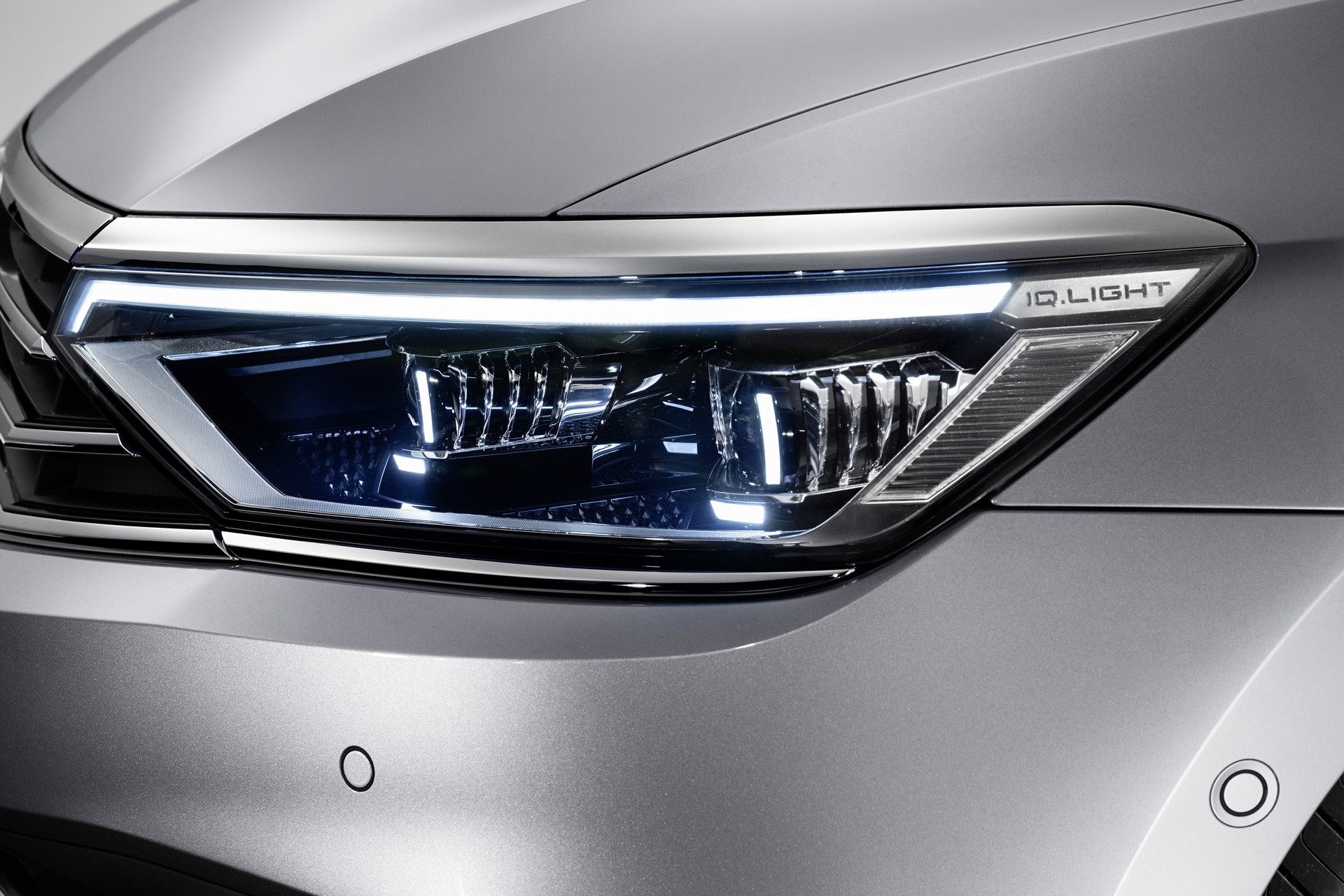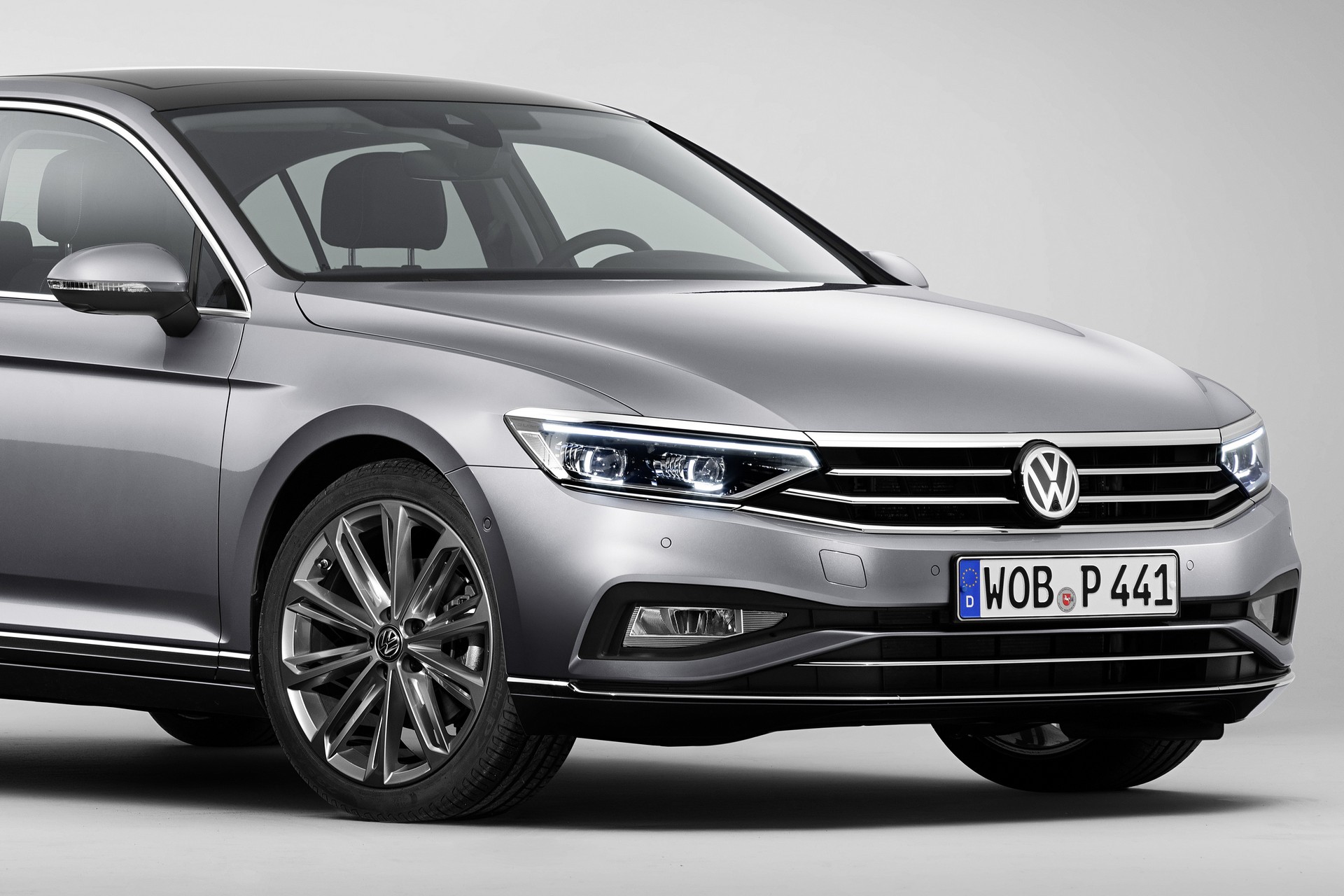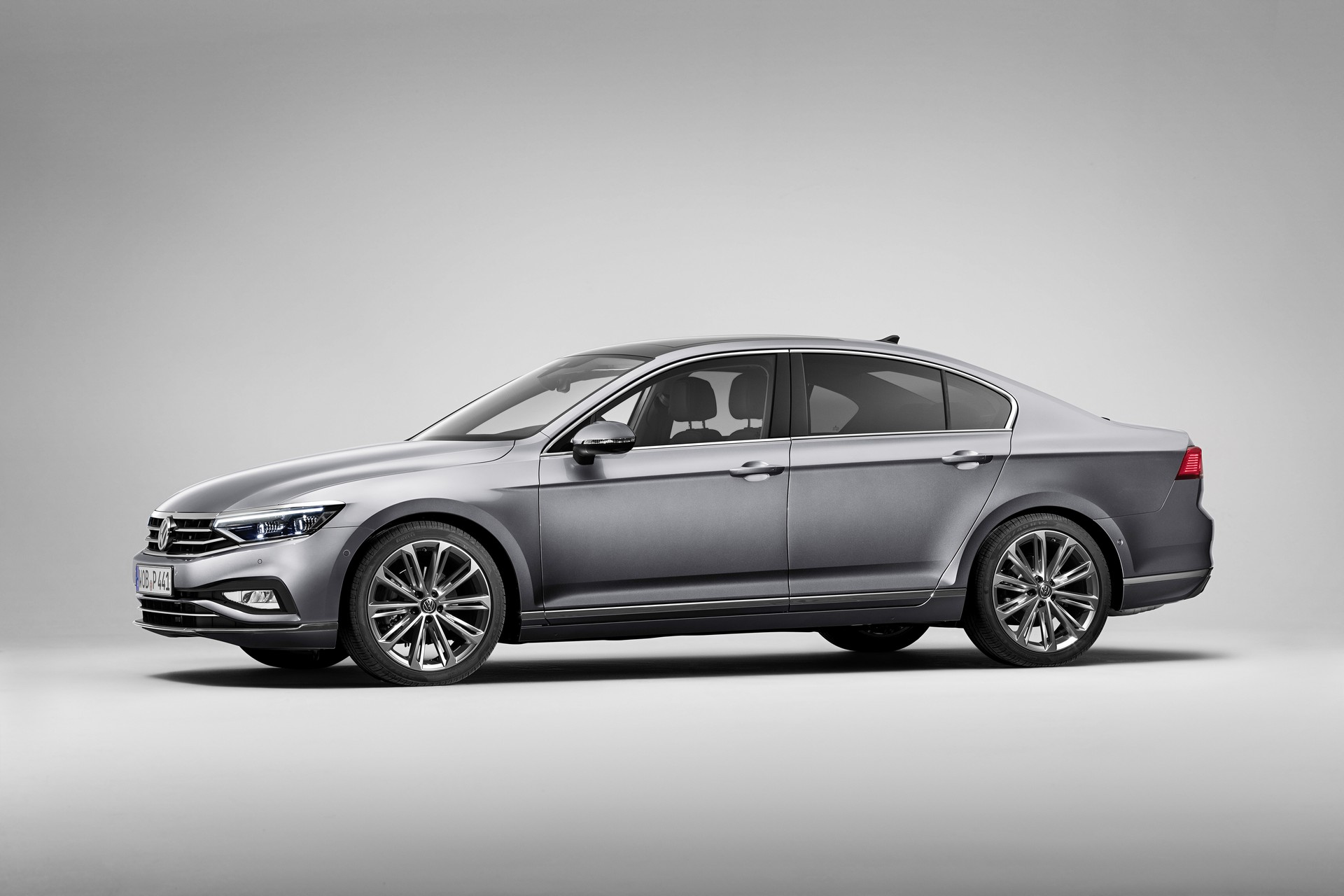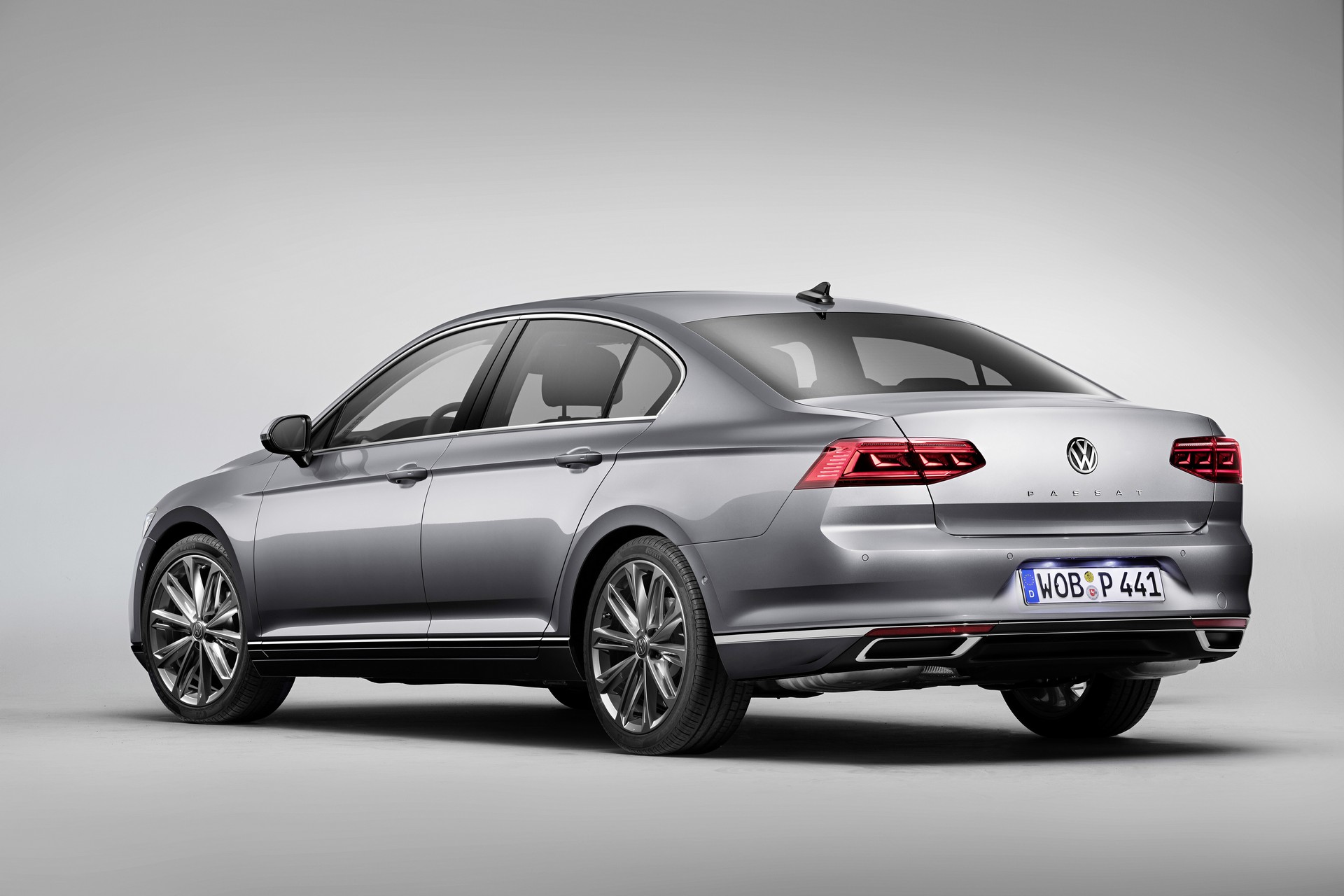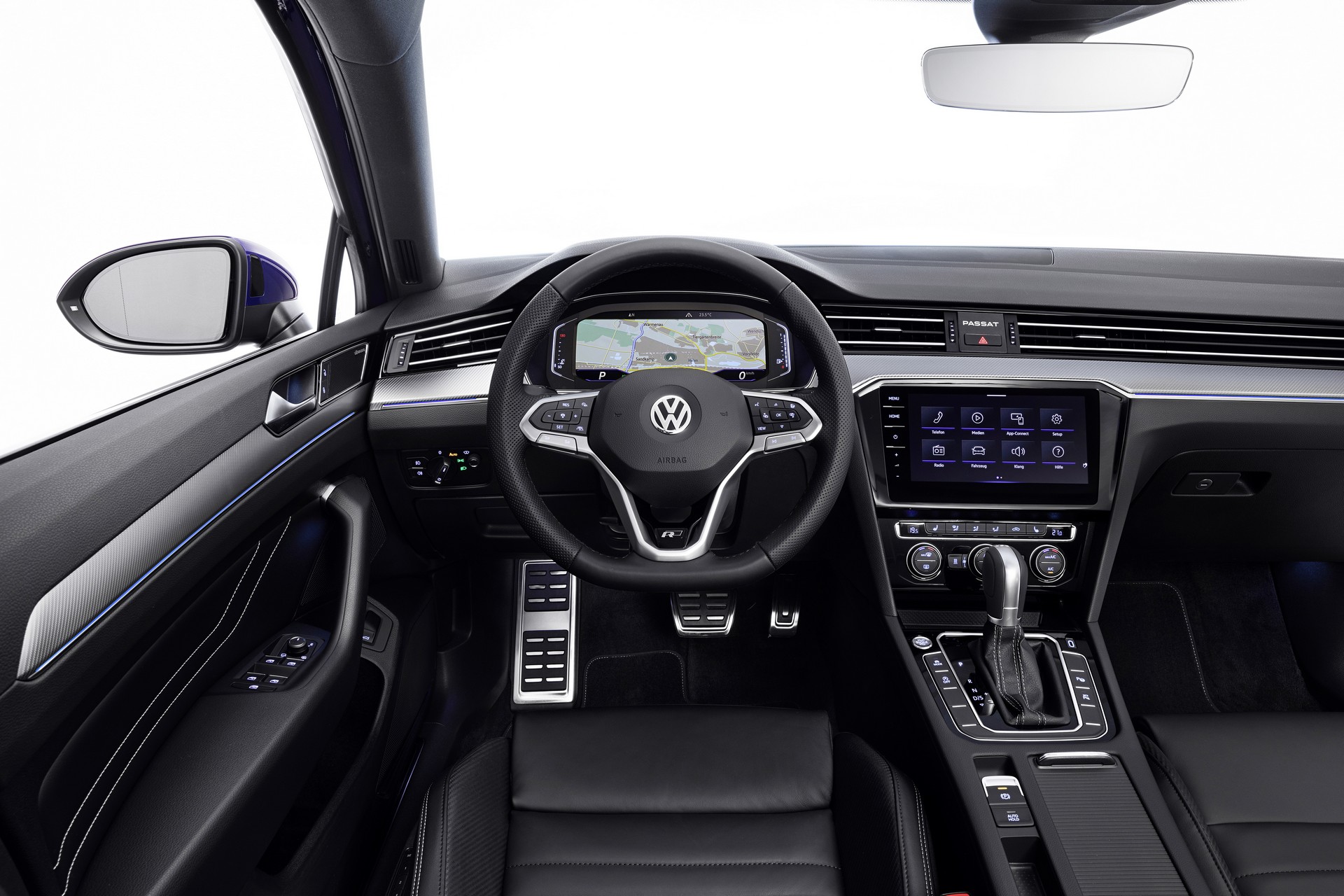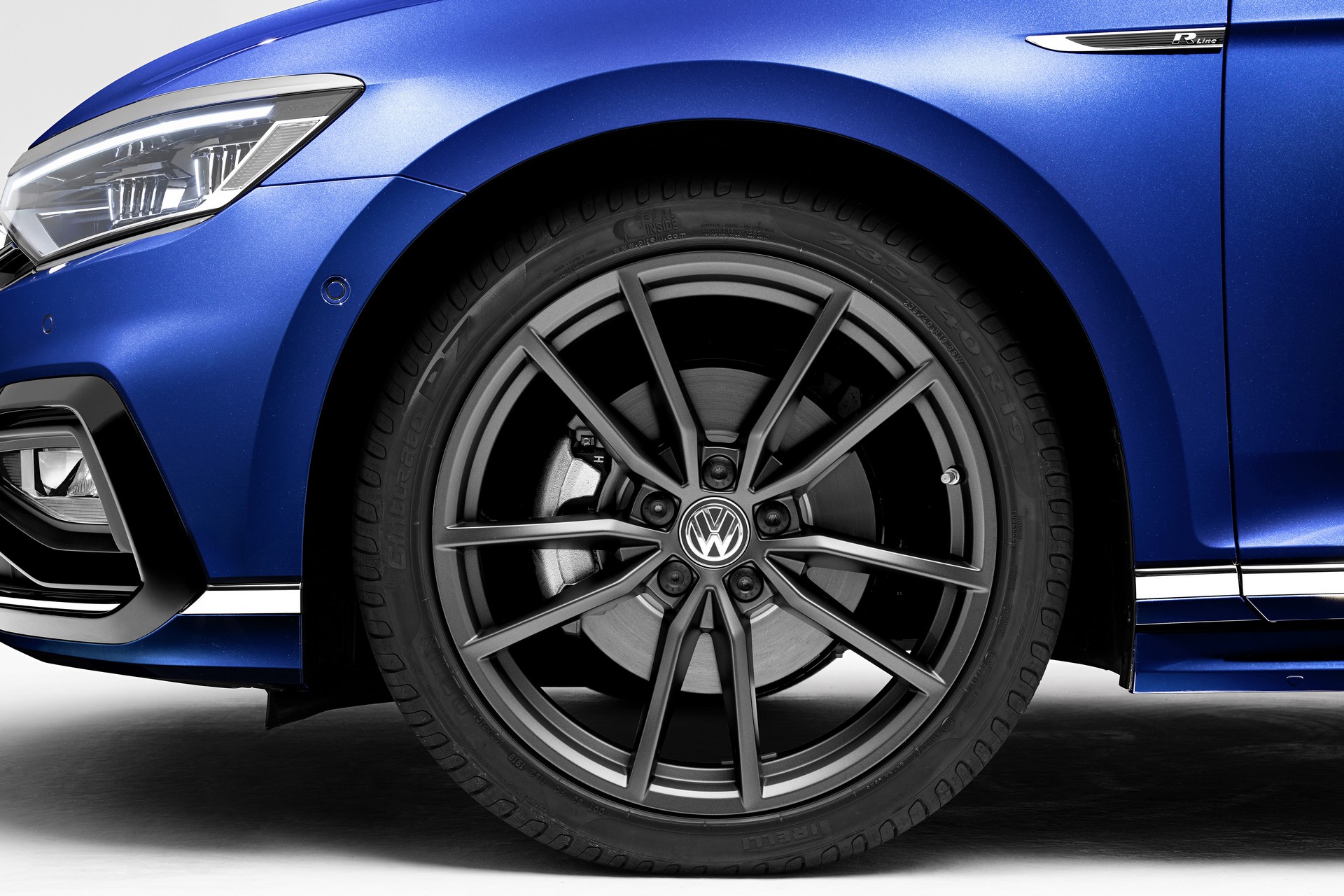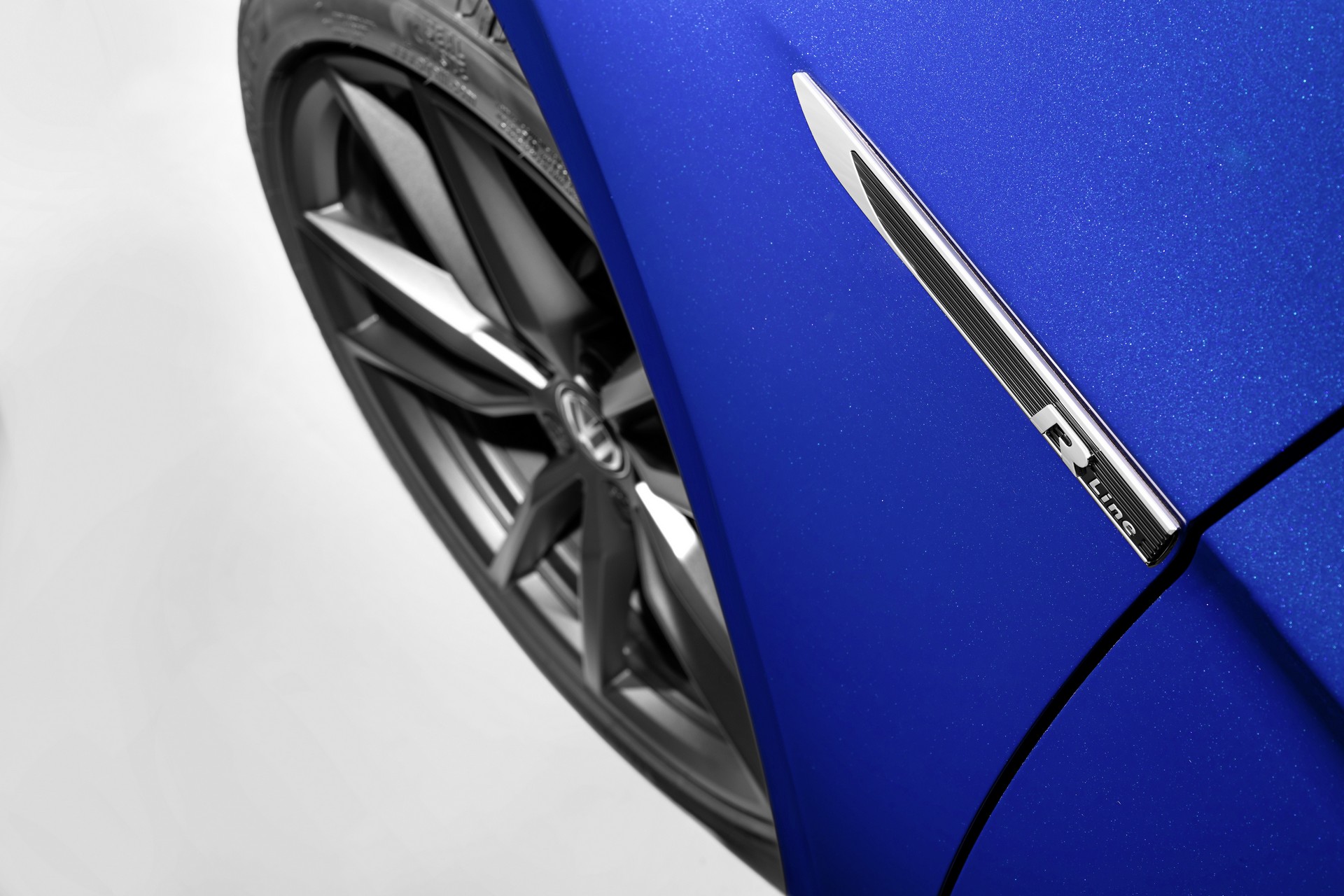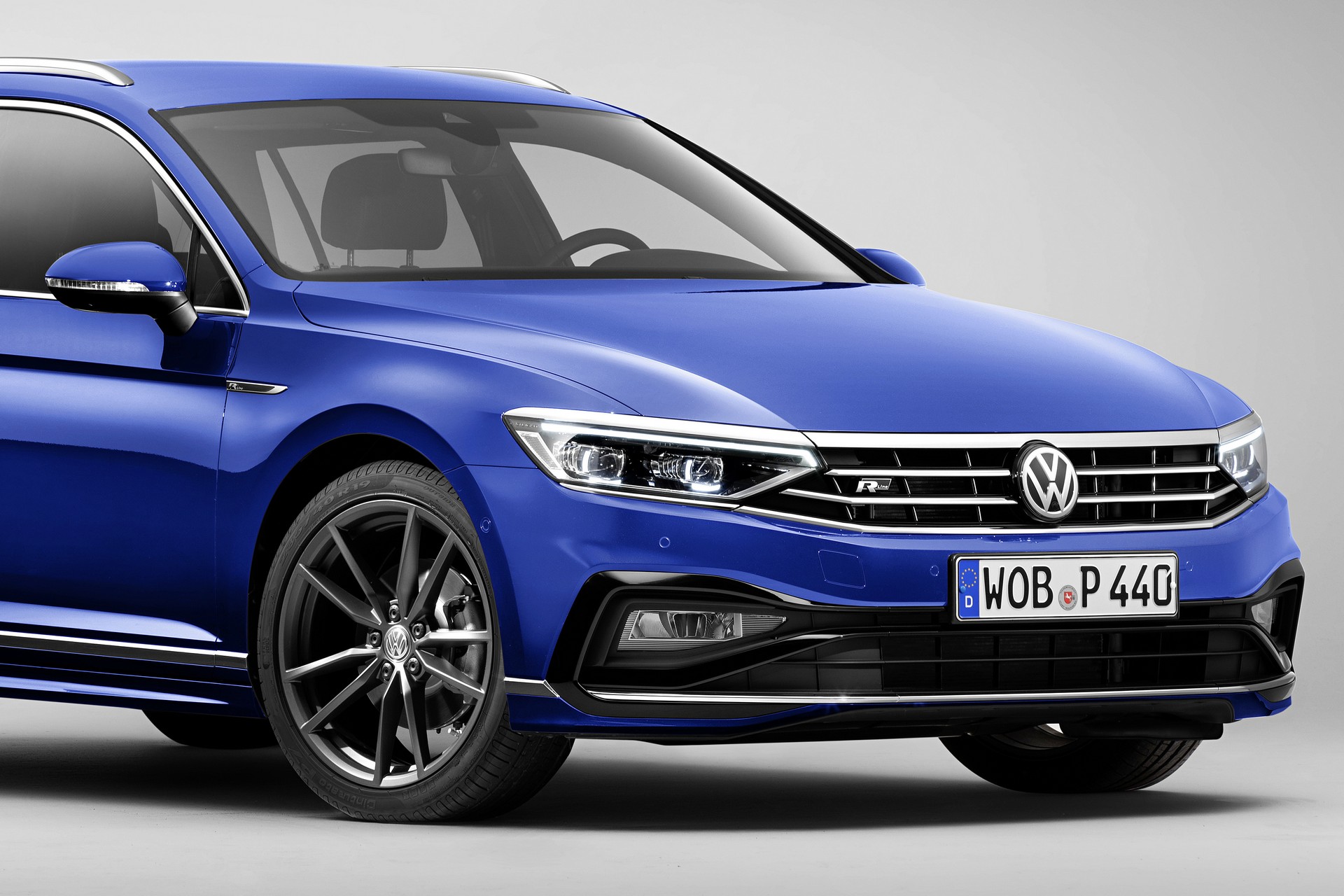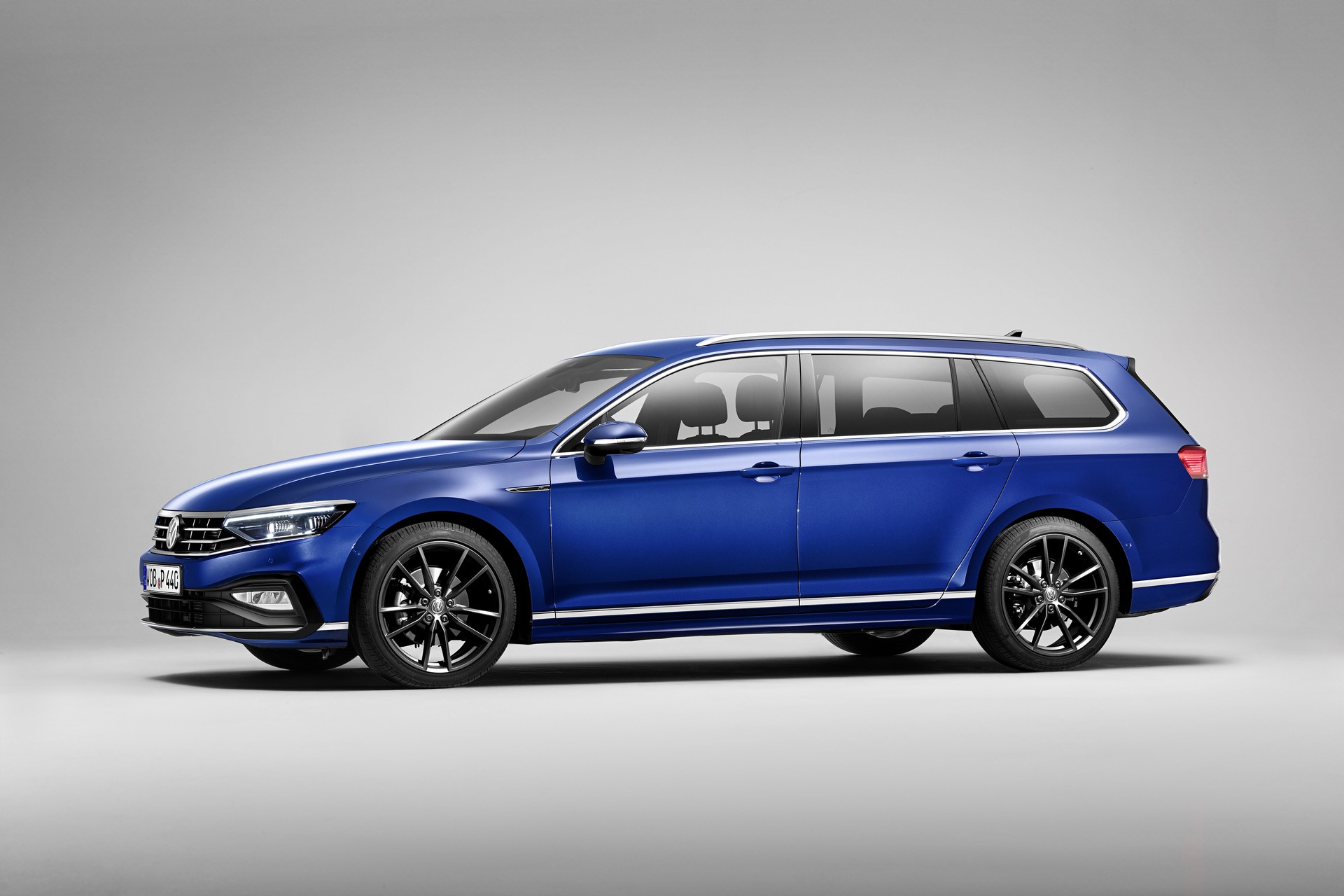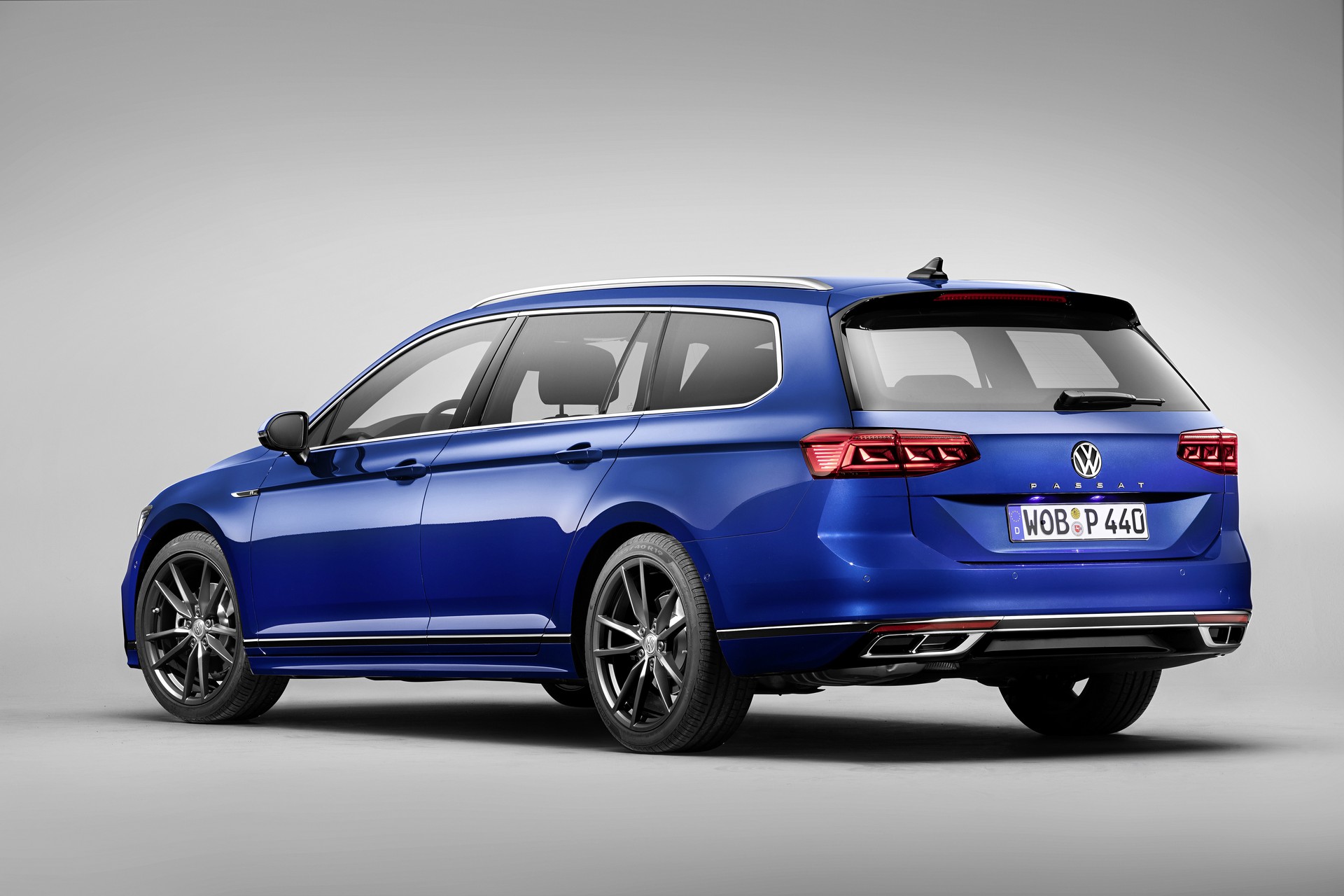Volkswagen has unveiled Europe’s facelifted Passat, ahead of its debut at the Geneva Motor Show.
Set to be launched in Germany this summer, the 2020 Passat has an evolutionary design that closely echoes the current model. A closer inspection reveals a handful of subtle styling changes including a new front bumper, a revised grille and optional LED matrix headlights called IQ.Light. Designers also installed three-dimensional LED taillights, a new rear bumper and a sportier dual exhaust system.
Speaking of styling, the Passat gains new wheels which range in sizes from 17- to 19-inches. Customers can also order a handful of new colors including Lapiz Blue, Bottlegreen and Sandgold.
Updated Interior With A New Infotainment System
Bigger changes occur in the cabin as the drivers will find a new steering wheel, updated upholstery and new trim finishes. The analogue clock has also been jettisoned and replaced by a backlit Passat logo.
Other updates include an 11.7-inch digital instrument cluster which is “considerably enhanced.” According to Volkswagen, it has improved graphic performance, better brightness and a higher pixel density than the previous display.
One of the biggest changes is the all-new infotainment system known as MIB3. Available with 6.5-, 8.0- and 9.2-inch displays, the infotainment system has an integrated SIM card which allows for online connectivity and a Wi-Fi hotspot capability.
The infotainment system also has more intuitive menus and support for natural voice controls. Speaking of the latter, drivers can simply say “Hello Volkswagen” and this will cause the system to listen for commands such as “I’d like to go to Jungfernstieg in Hamburg.” When something like this is heard, the system will automatically pull up GPS directions.
iPhone owners will also be happy to learn the Passat now supports wireless Apple CarPlay. This means users no longer have to connect their iPhone to the car via a wired connection.
Petrol, Diesel And Plug-In Hybrid Powertrains
Under the hood, there will be an assortment of different petrol and diesel engines. On the petrol side, there’s a 1.5-liter TSI which develops 148 hp (110 kW / 150 PS). There will also be two 2.0-liter TSIs with outputs of 187 hp (140 kW / 190 PS) and 268 hp (200 kW / 272 PS).
Diesel fans get four options, including a new 2.0-liter TDI Evo developing 148 hp (110 kW / 150 PS). It will be joined by a 1.6-liter TDI with 118 hp (88 kW / 120 PS) and two 2.0-liter TDIs developing 187 hp (140 kW / 190 PS) and 236 hp (176 kW / 240 PS).
The Passat GTE returns to the lineup with an improved plug-in hybrid system that features a larger 13 kWh lithium-ion battery. This gives the model a longer electric-only range of approximately 34 miles (55 km).
The GTE features a 1.4-liter TSI petrol engine, a 113 hp (85 kW / 115 PS) electric motor and a specially-developed six-speed dual-clutch gearbox. This enables the car to have a combined output of 215 hp (160 kW / 218 PS).
More Advanced Driver Assistance Systems
On the technology front, the Passat gains an assortment of driver assistance systems. These include emergency steering assist and an adaptive cruise control system with predictive cruise control. The latter uses GPS data to automatically slow the car before reaching bends or roundabouts. The system also uses a camera to watch for speed limit signs and can adjust itself to match the posted speed.
That’s pretty impressive, but the big news is the addition of Travel Assist which replaces the previous Traffic Jam Assist system. Essentially a Level 2 semi-autonomous driving system, Travel Assist enables the car to drive itself at speeds up to 130 mph (210 km/h).
Since the system is only semi-autonomous, drivers must keep their hands on the steering wheel. In order to sense this, the Passat features a capacitive steering wheel which can detect if drivers have their hands on the wheel. If the driver removes their hands for 10 seconds or more, a series of warning signals are activated. Should the driver fail to respond, the car will eventually bring itself to a halt.




